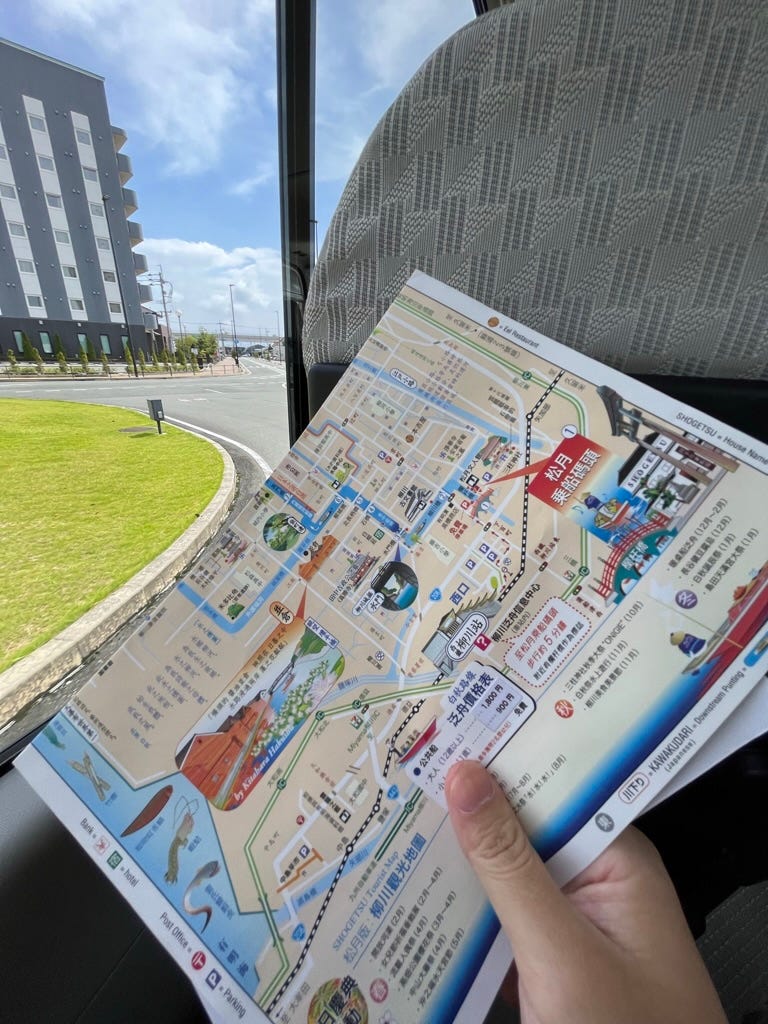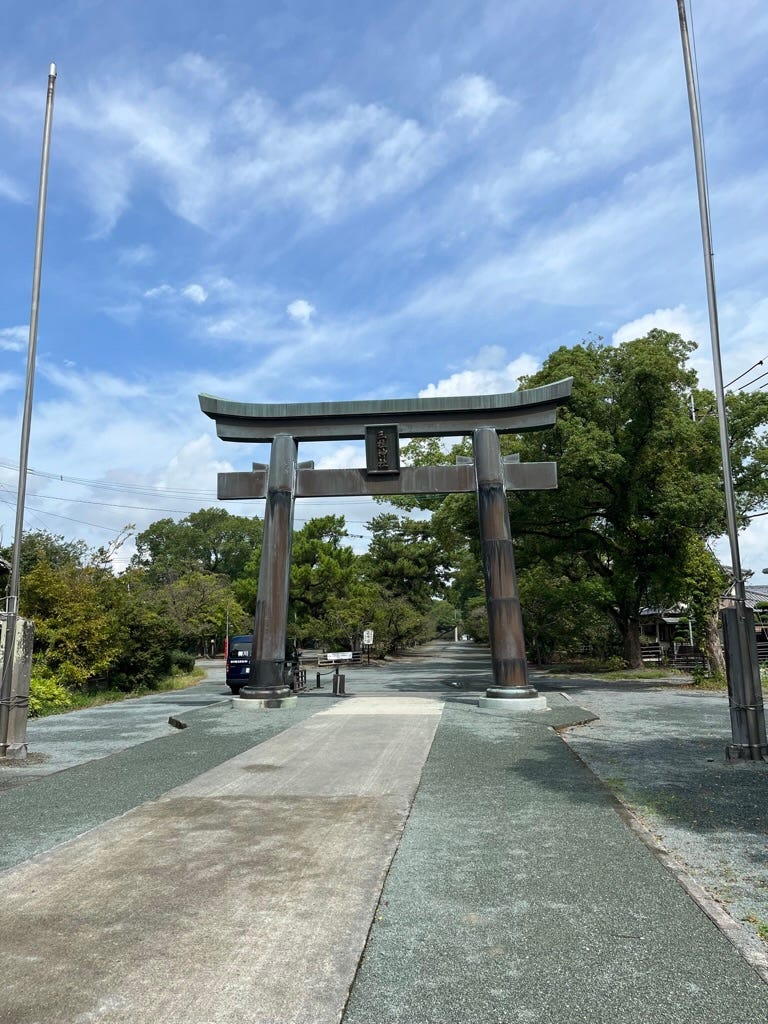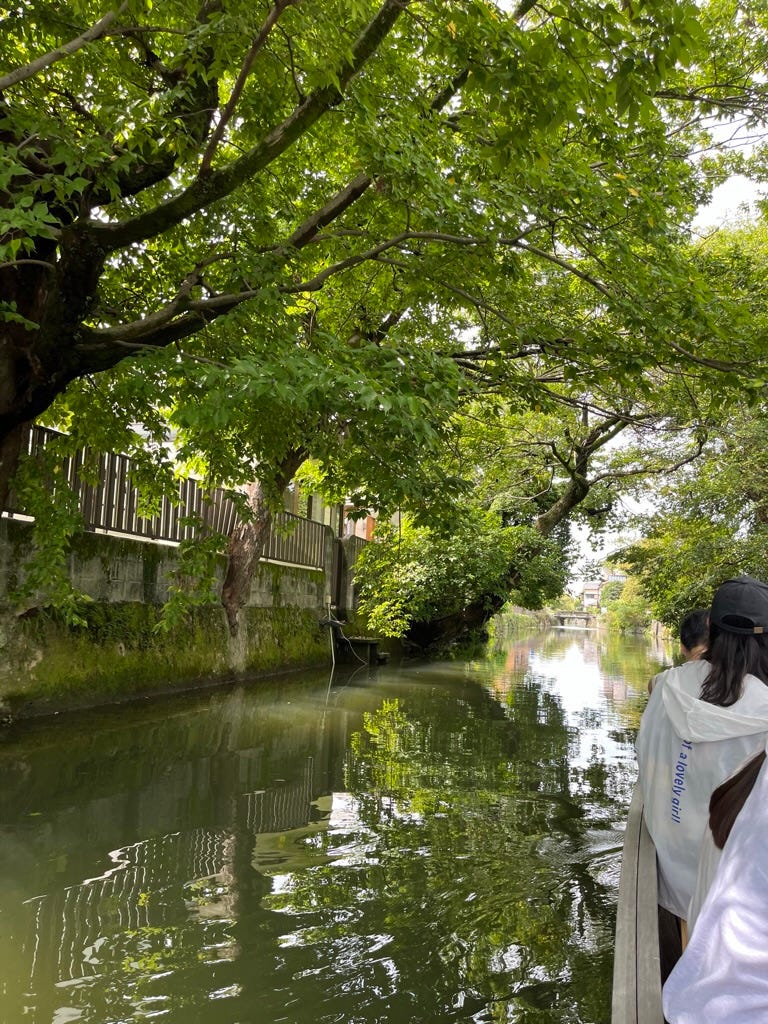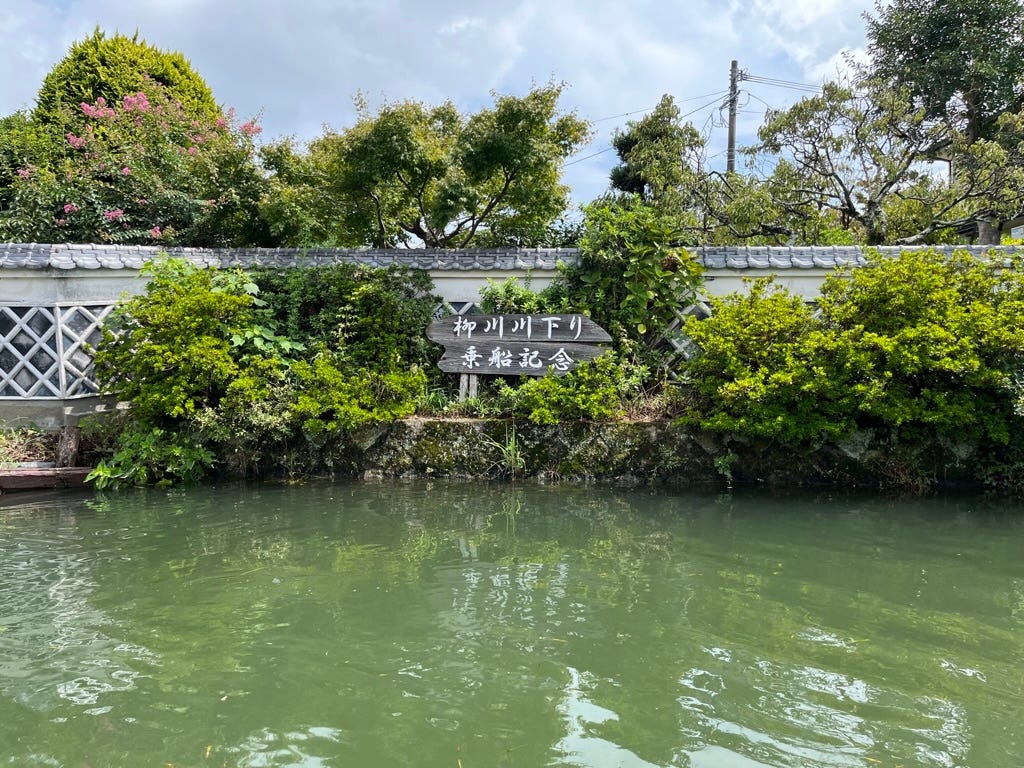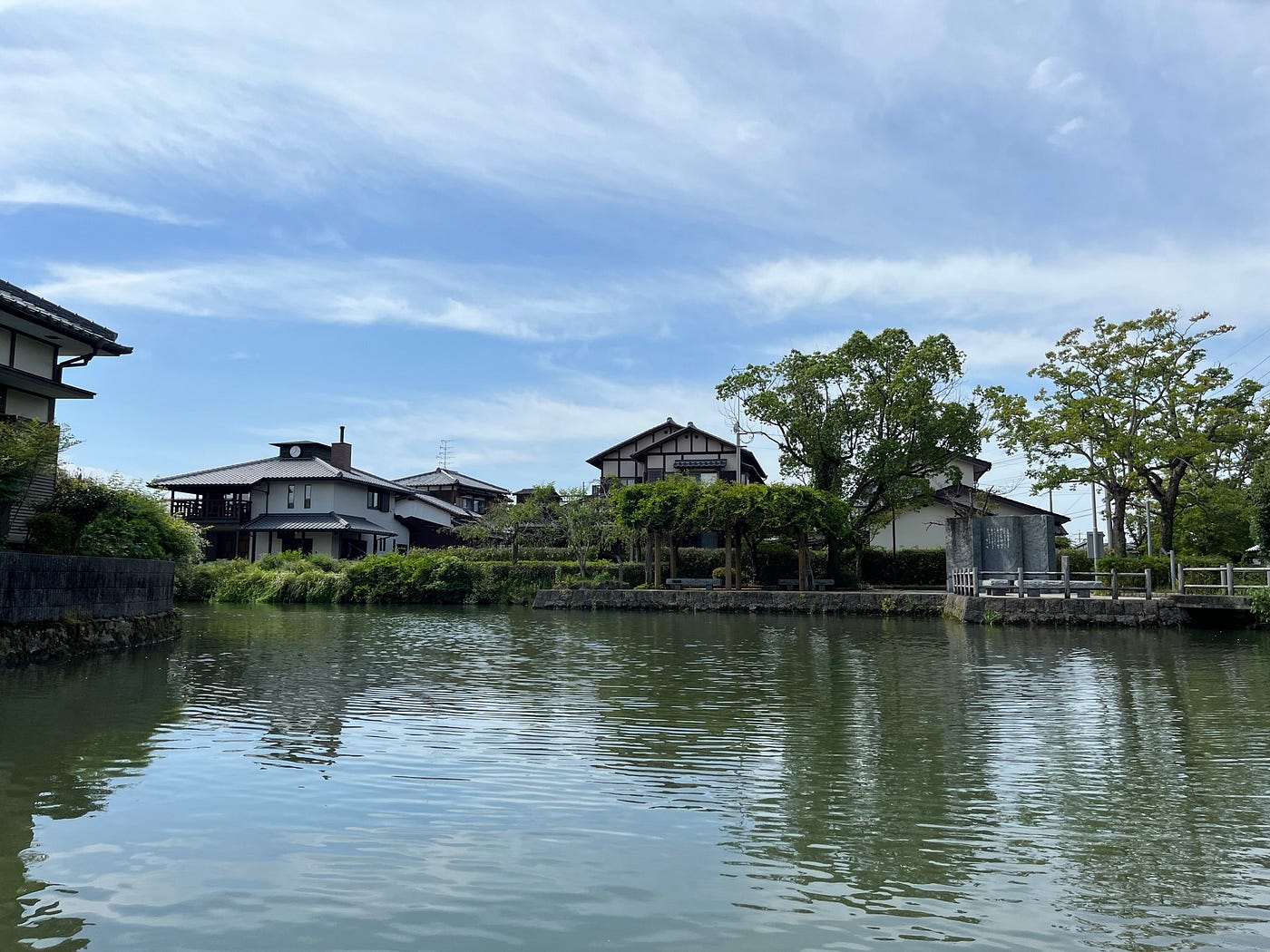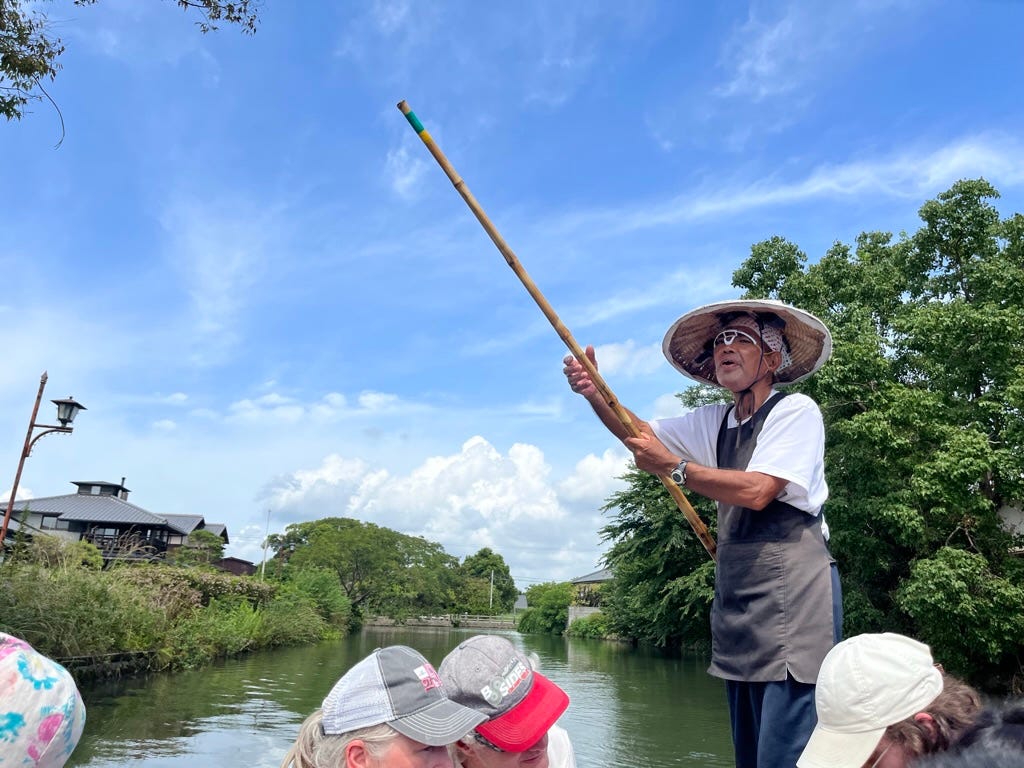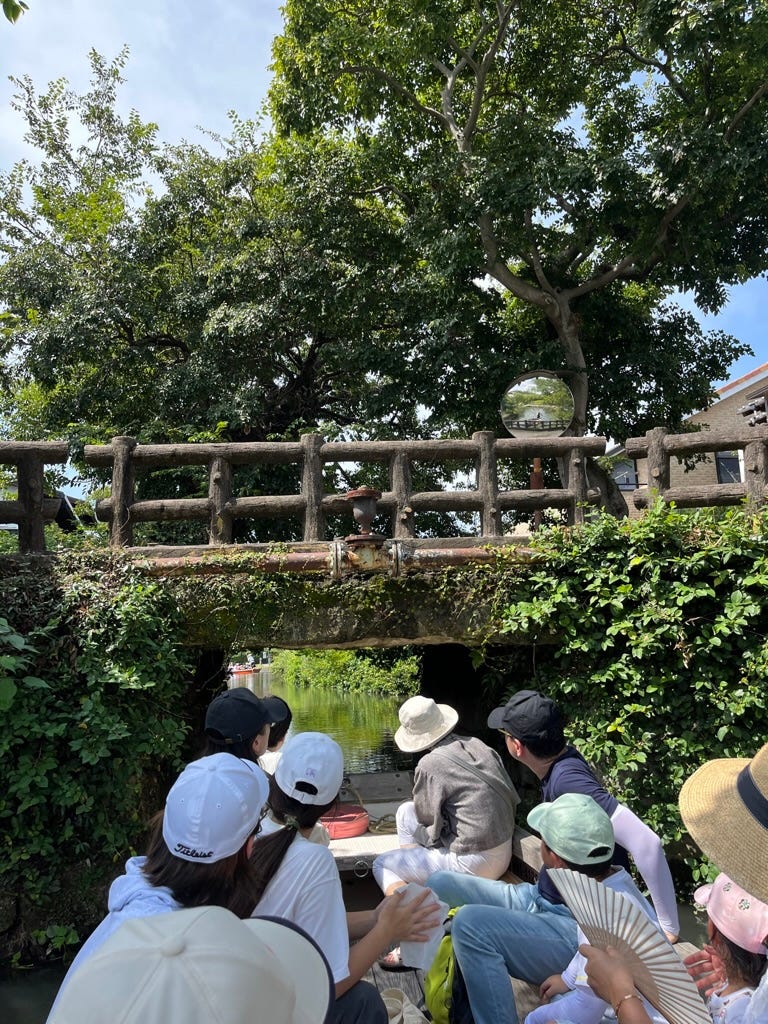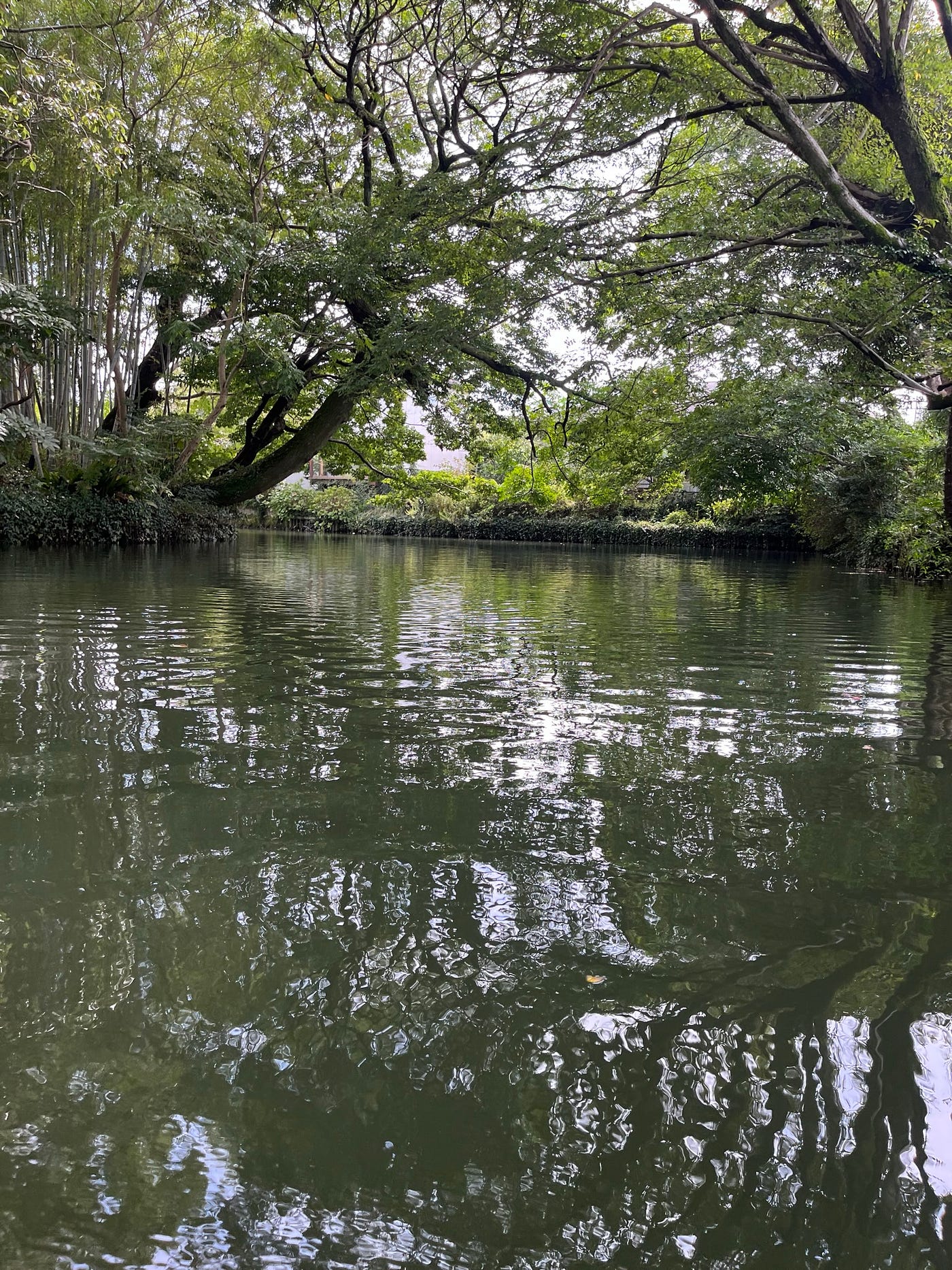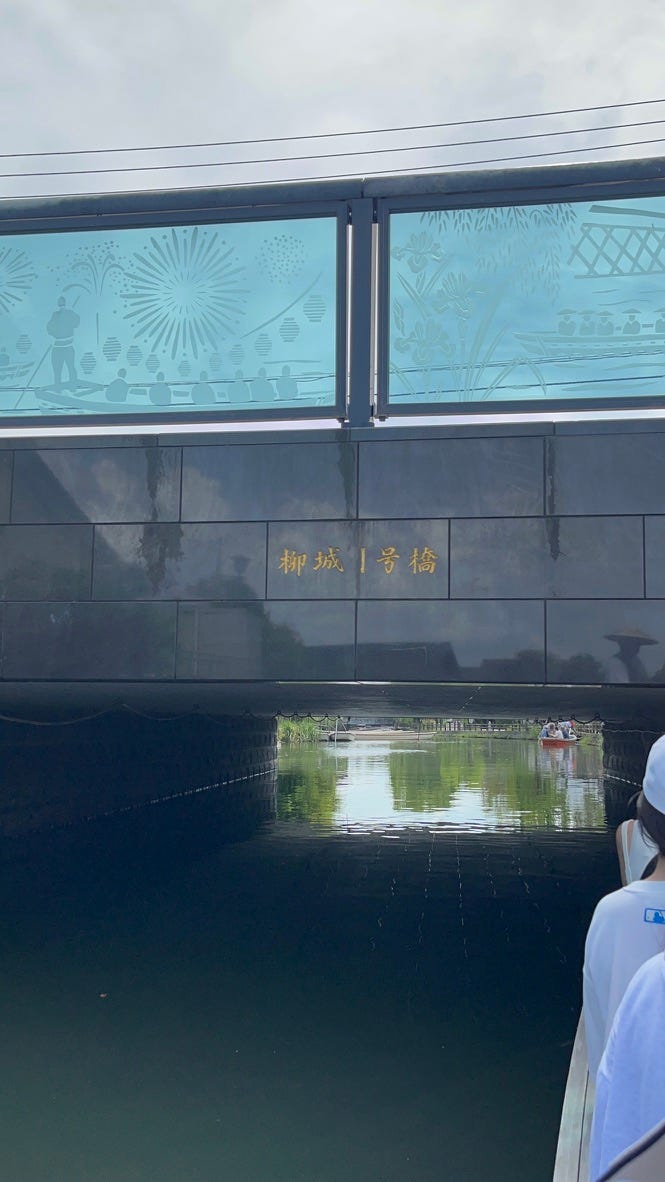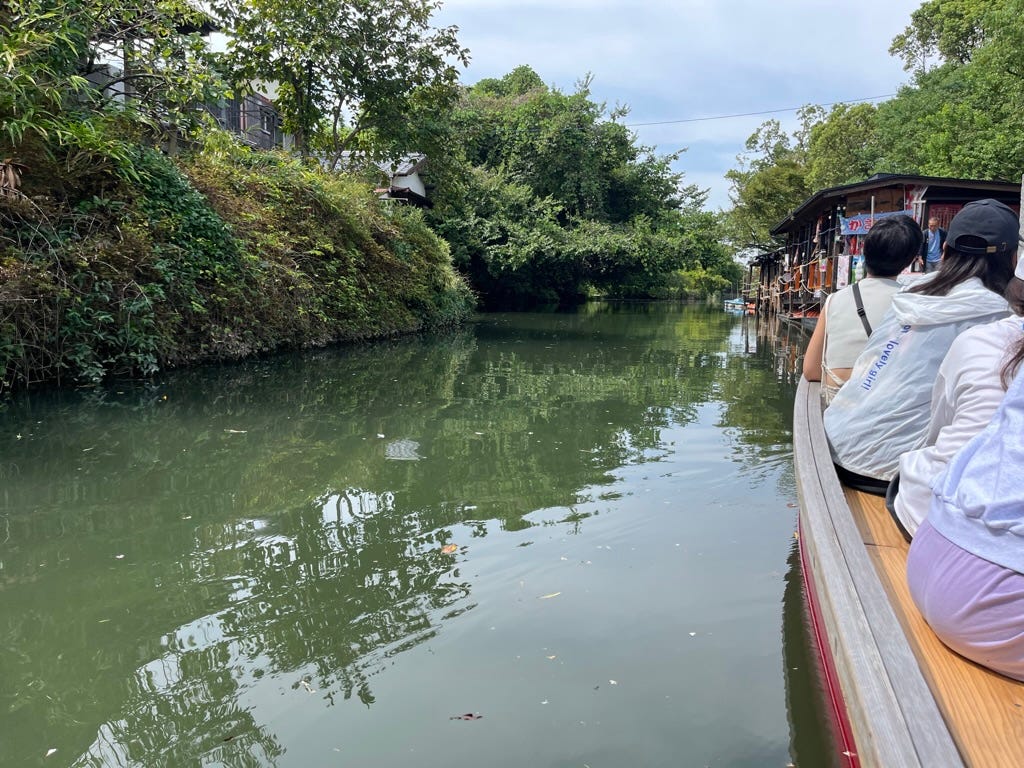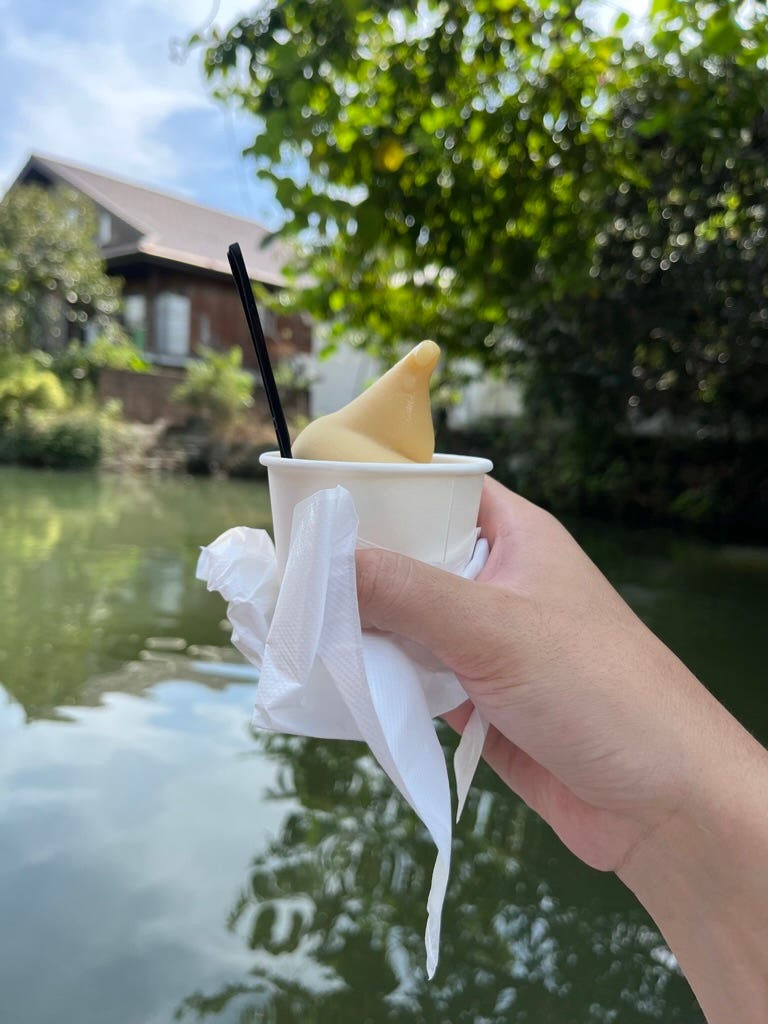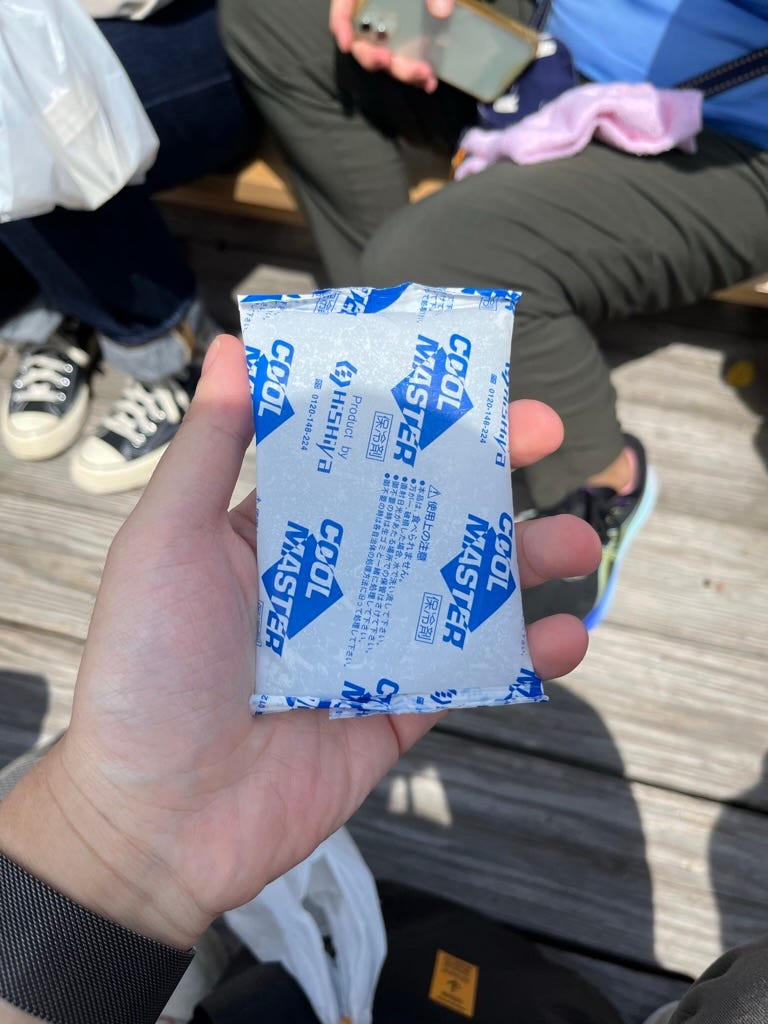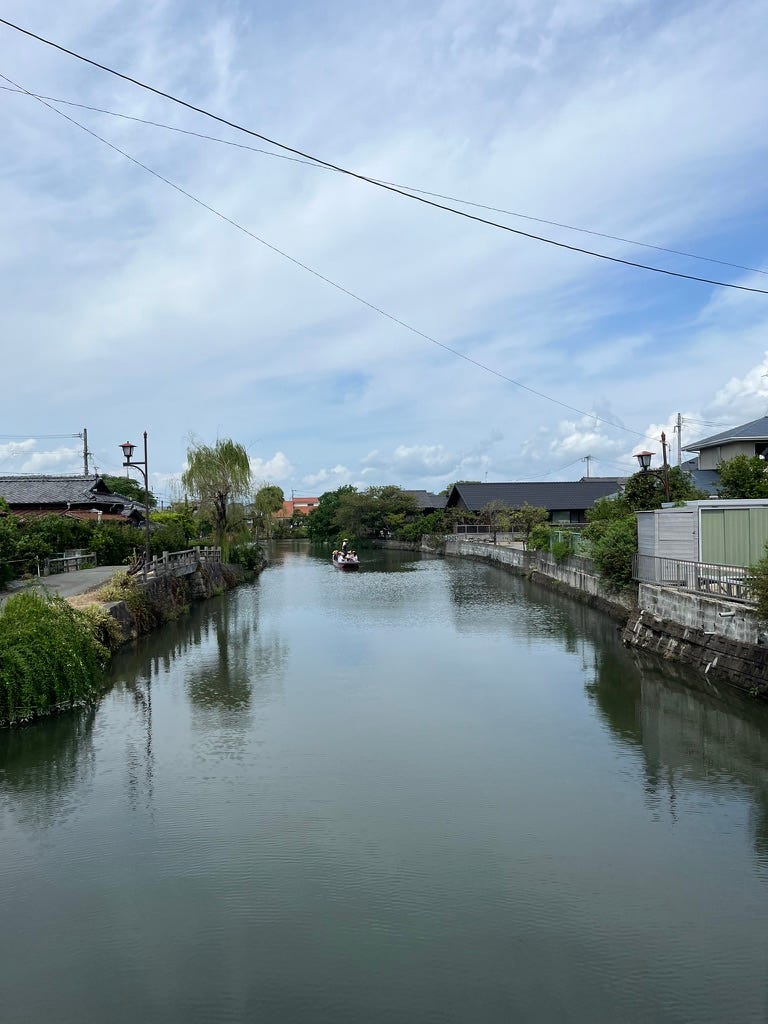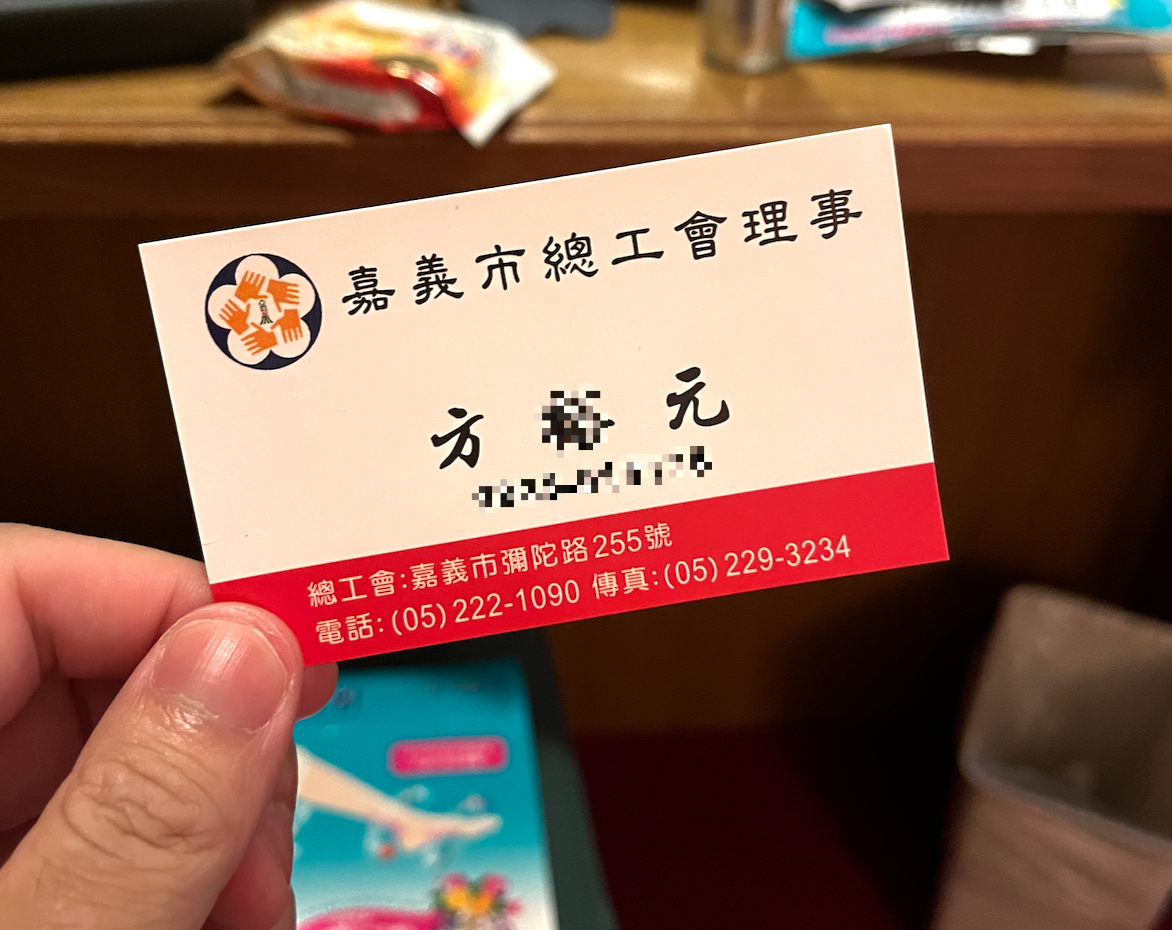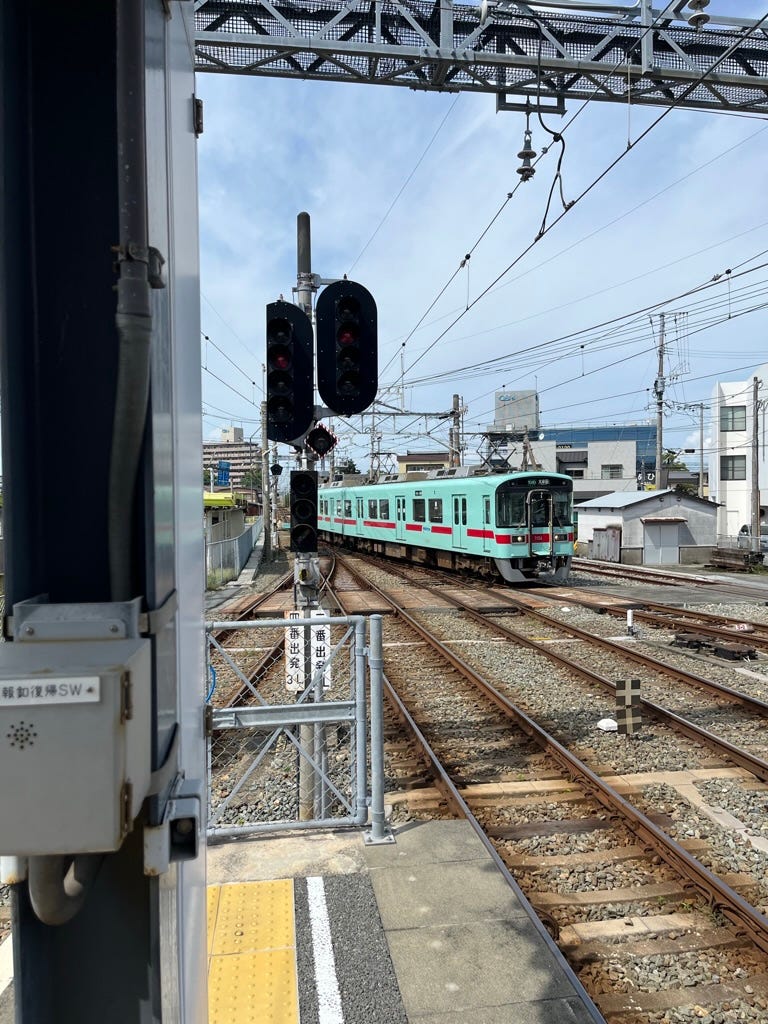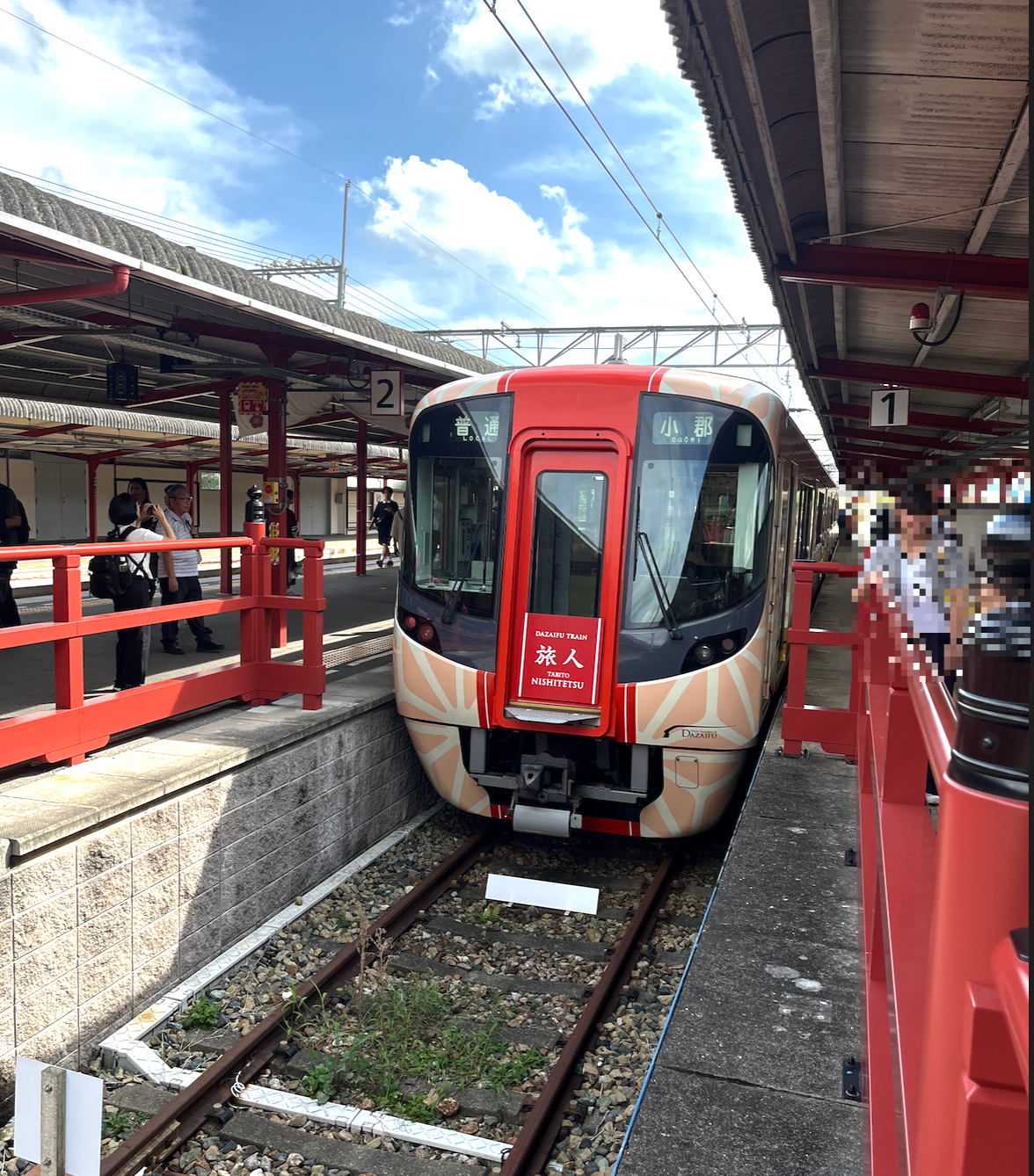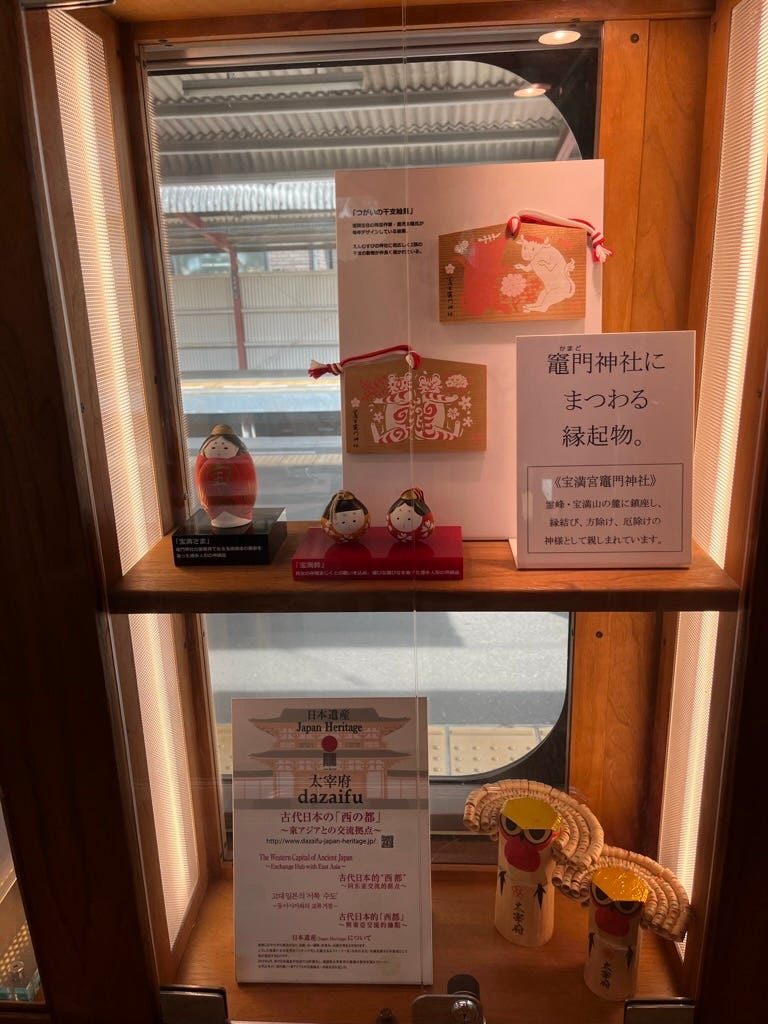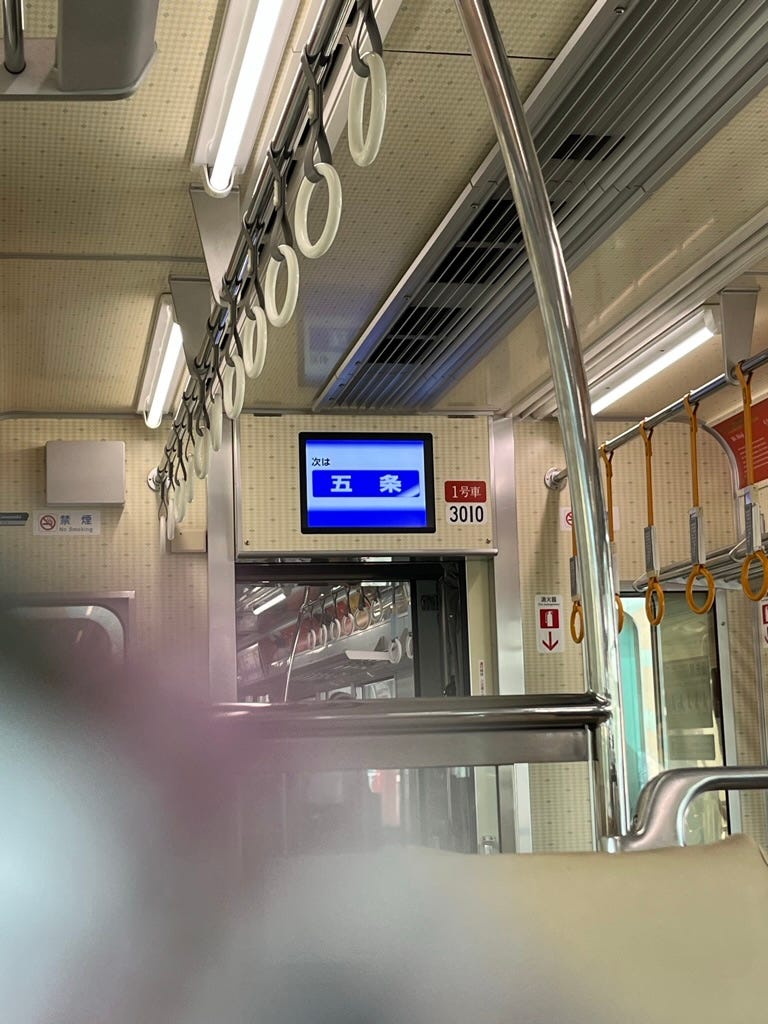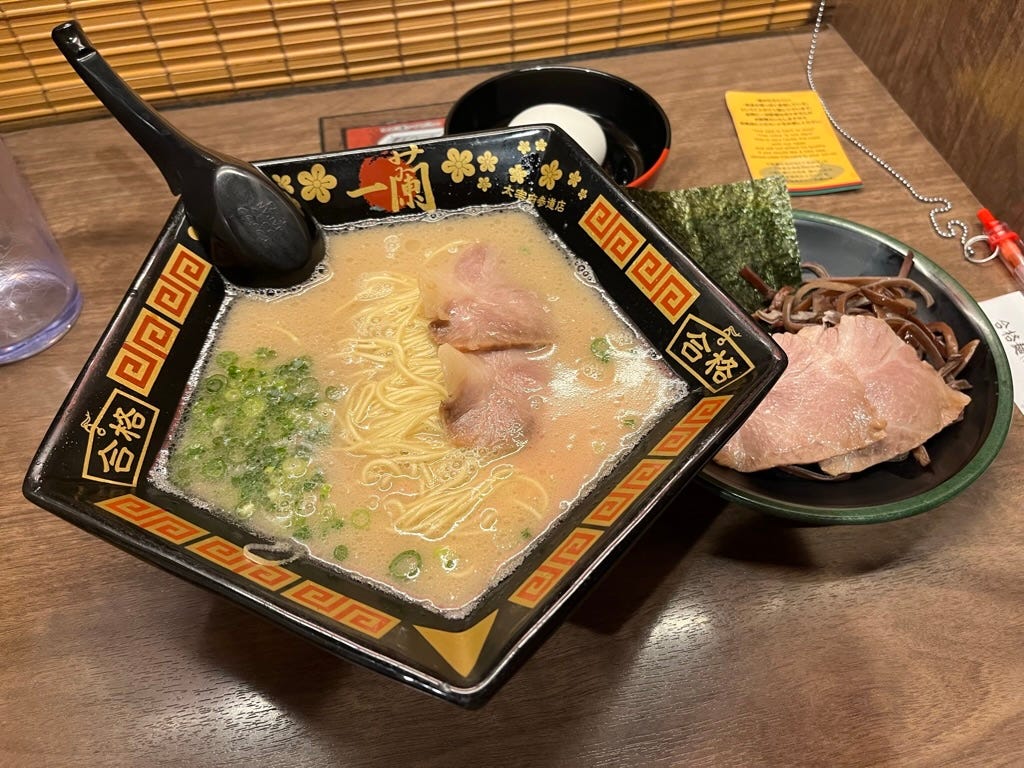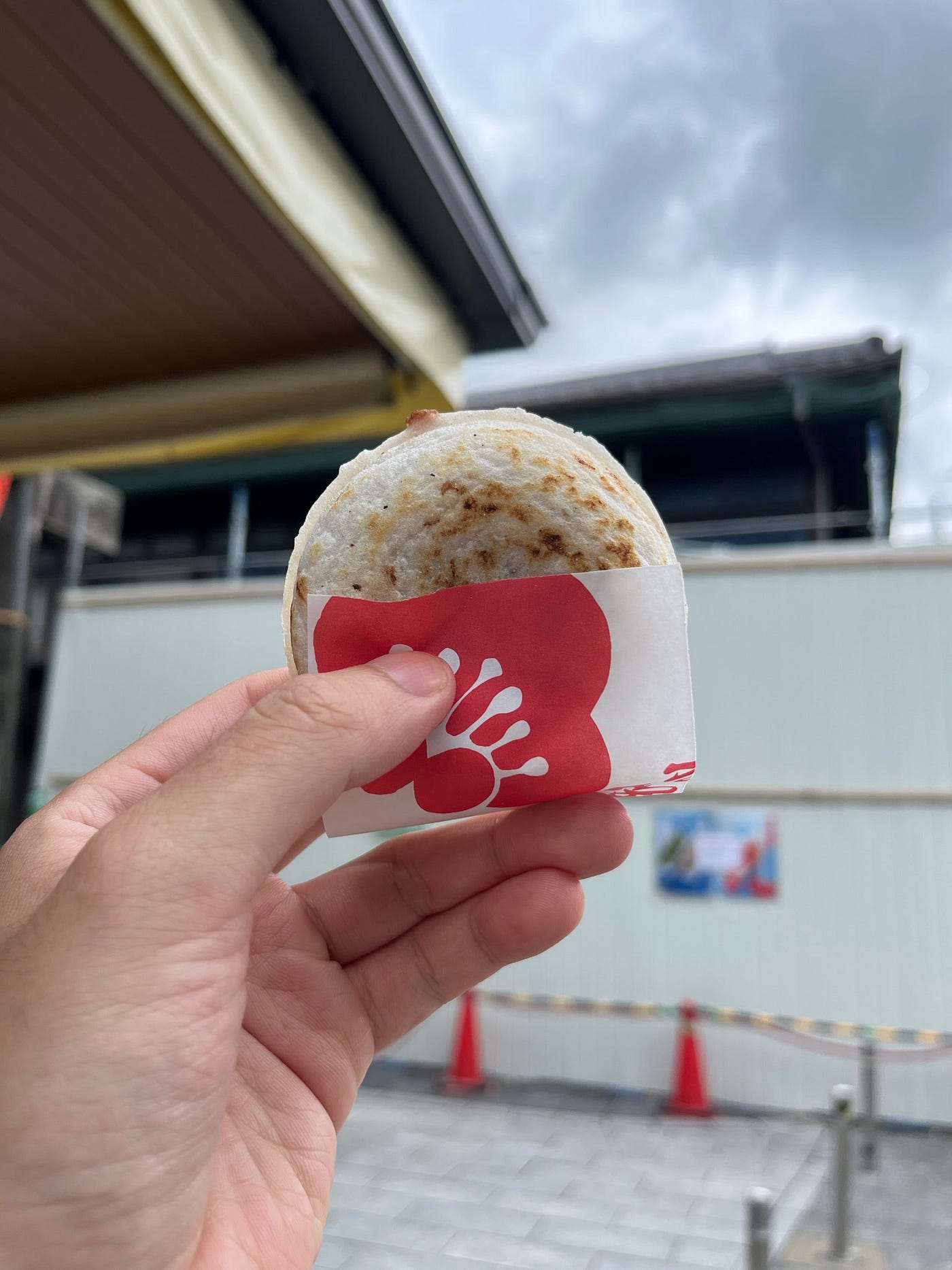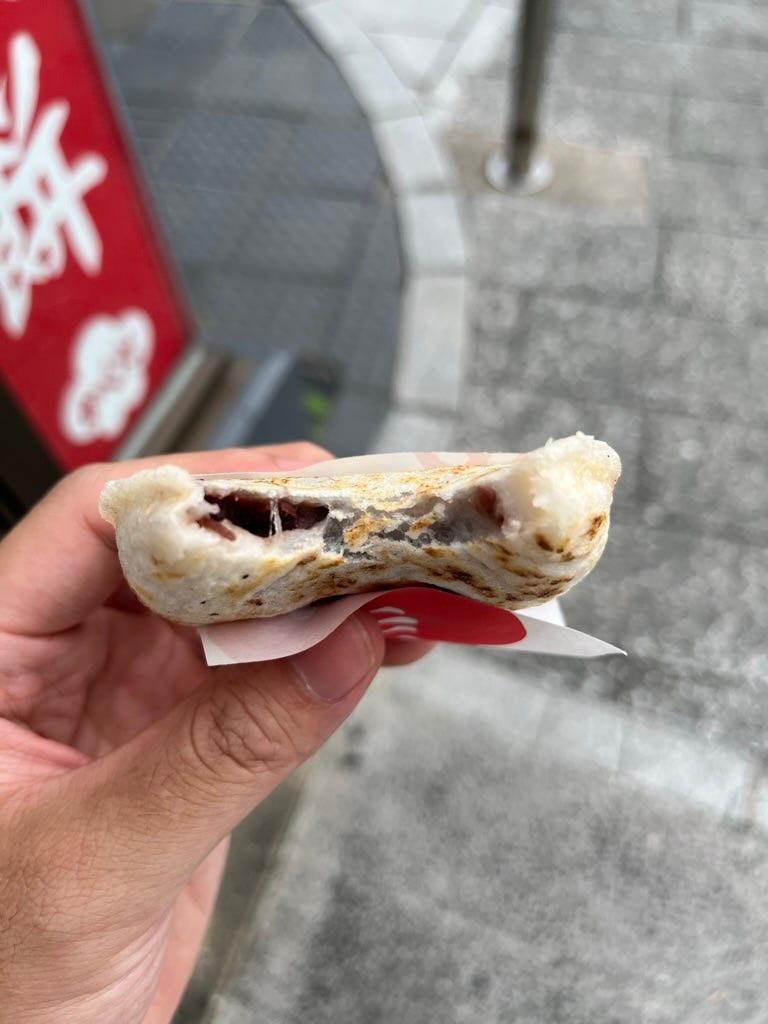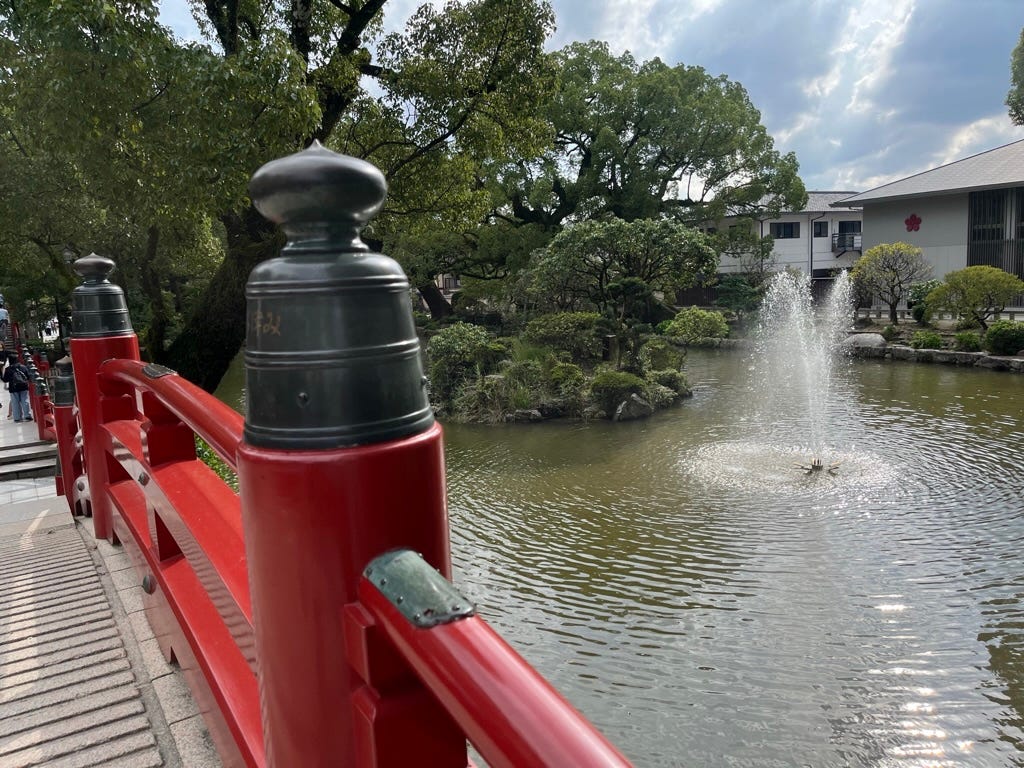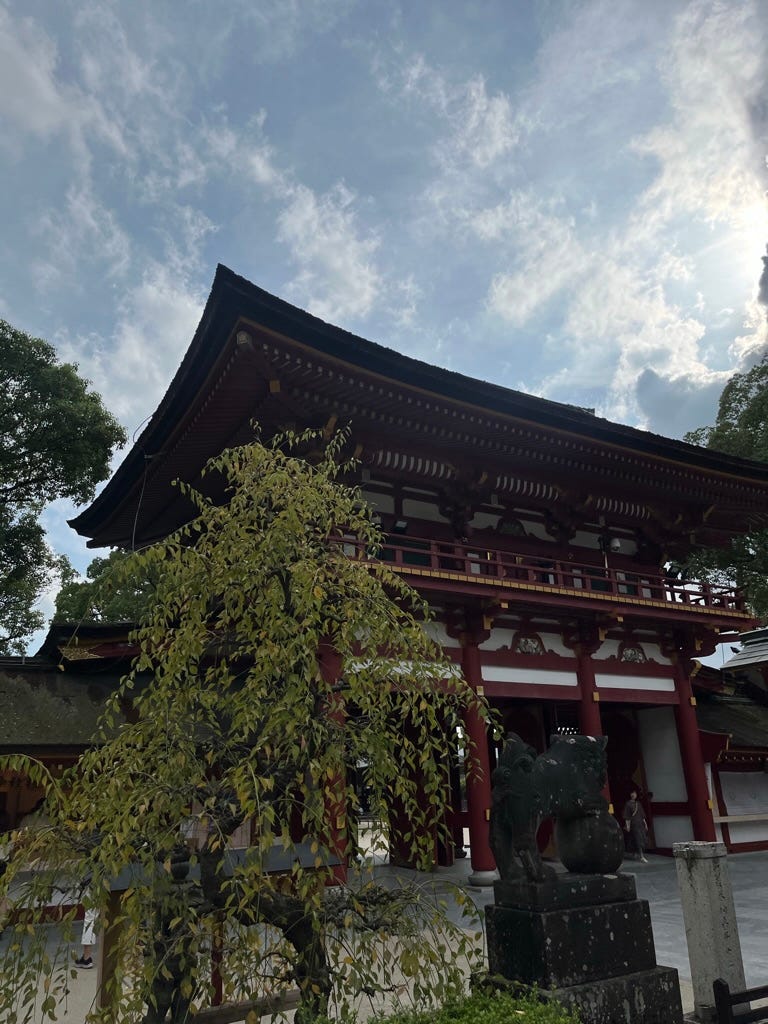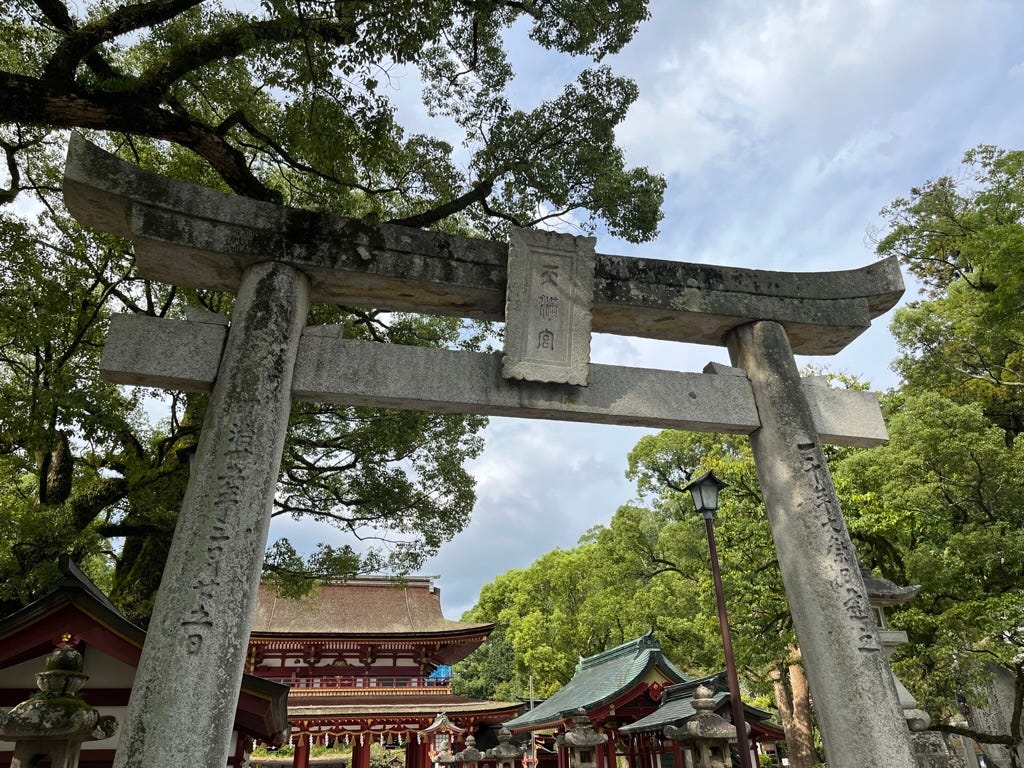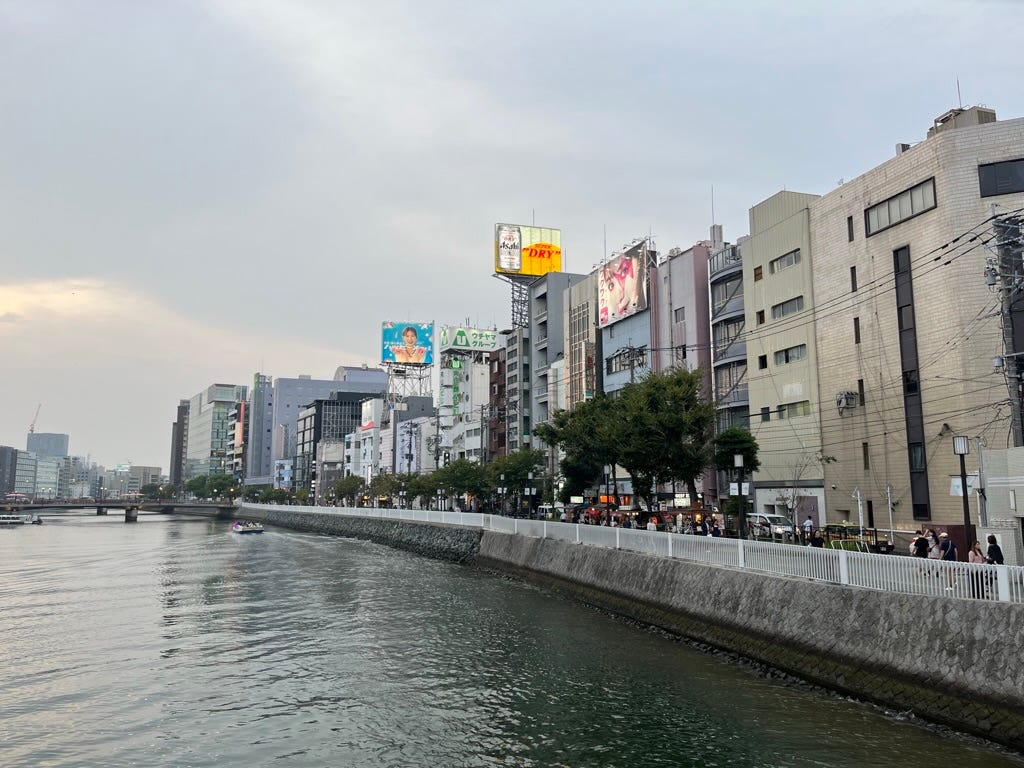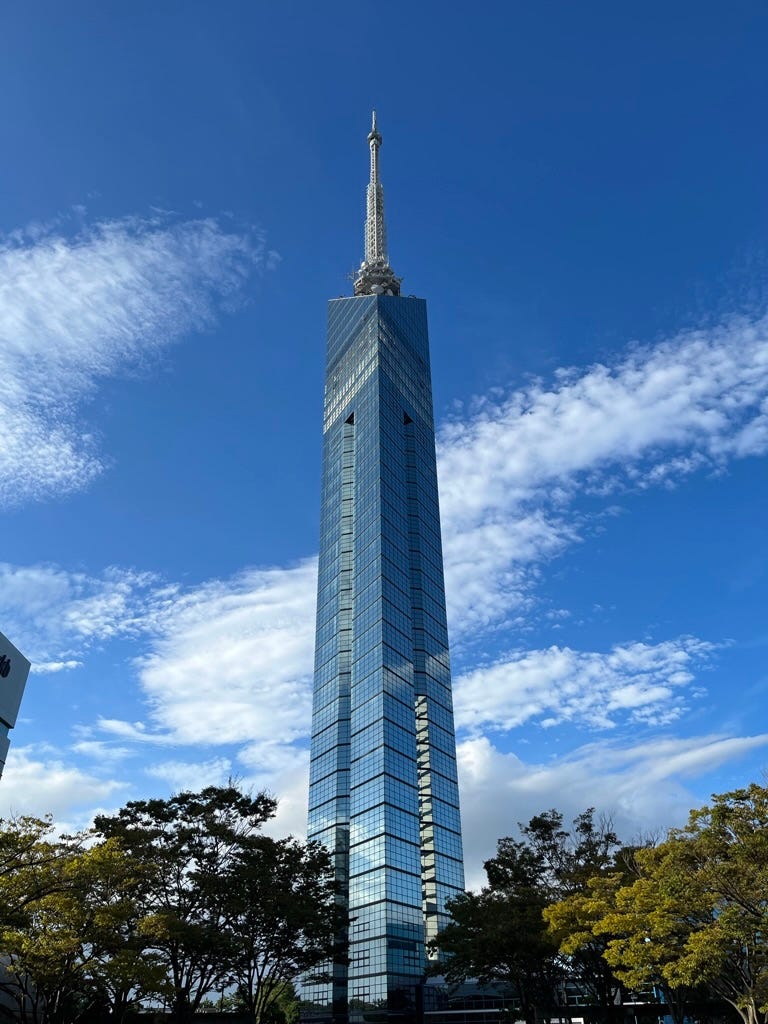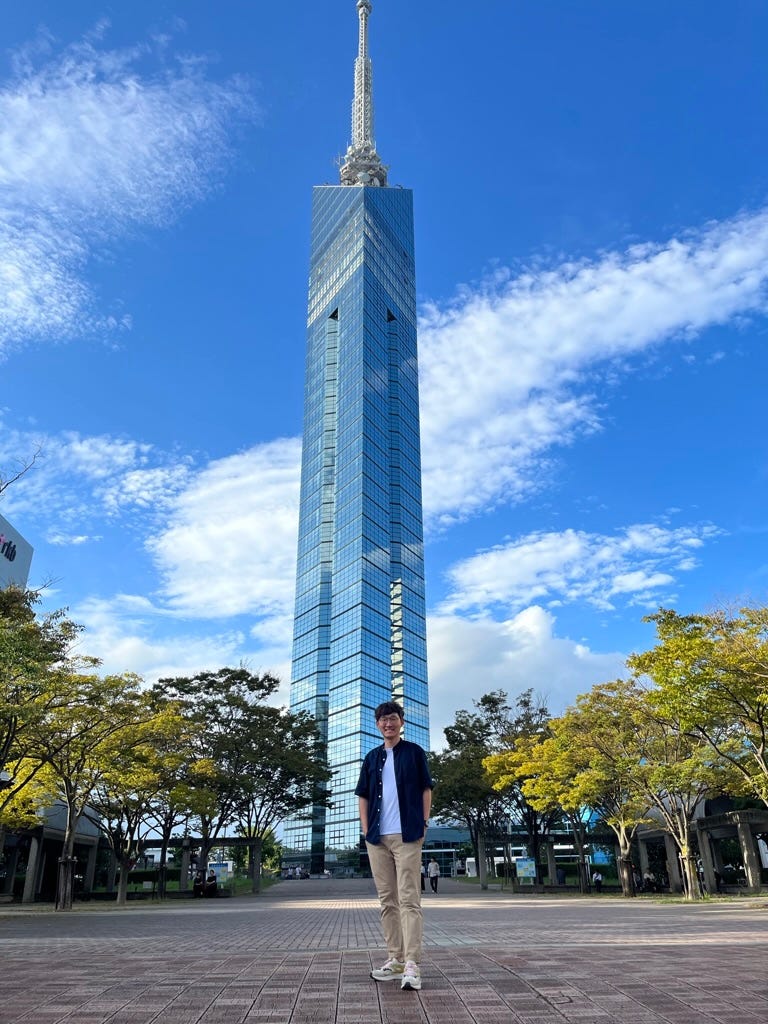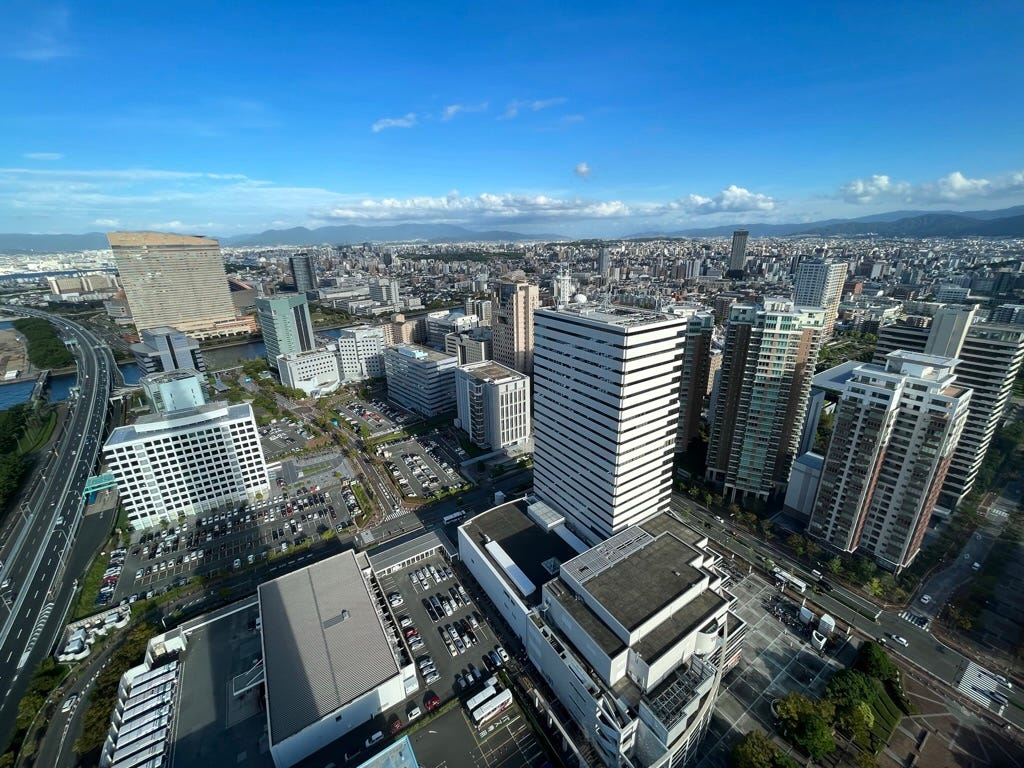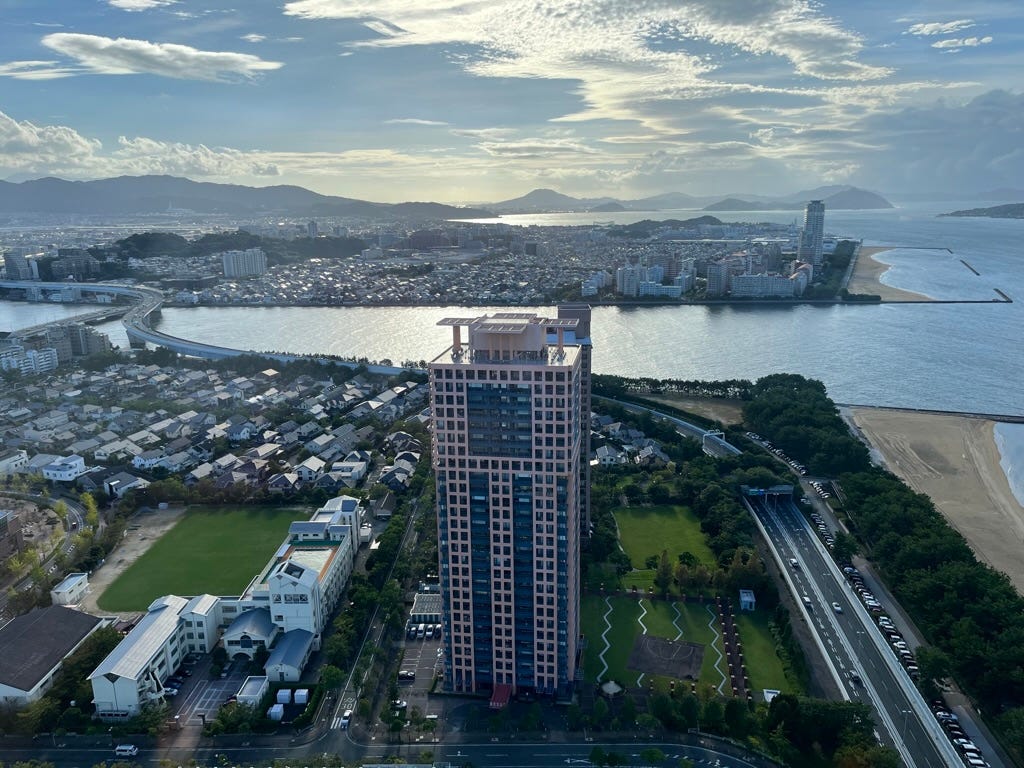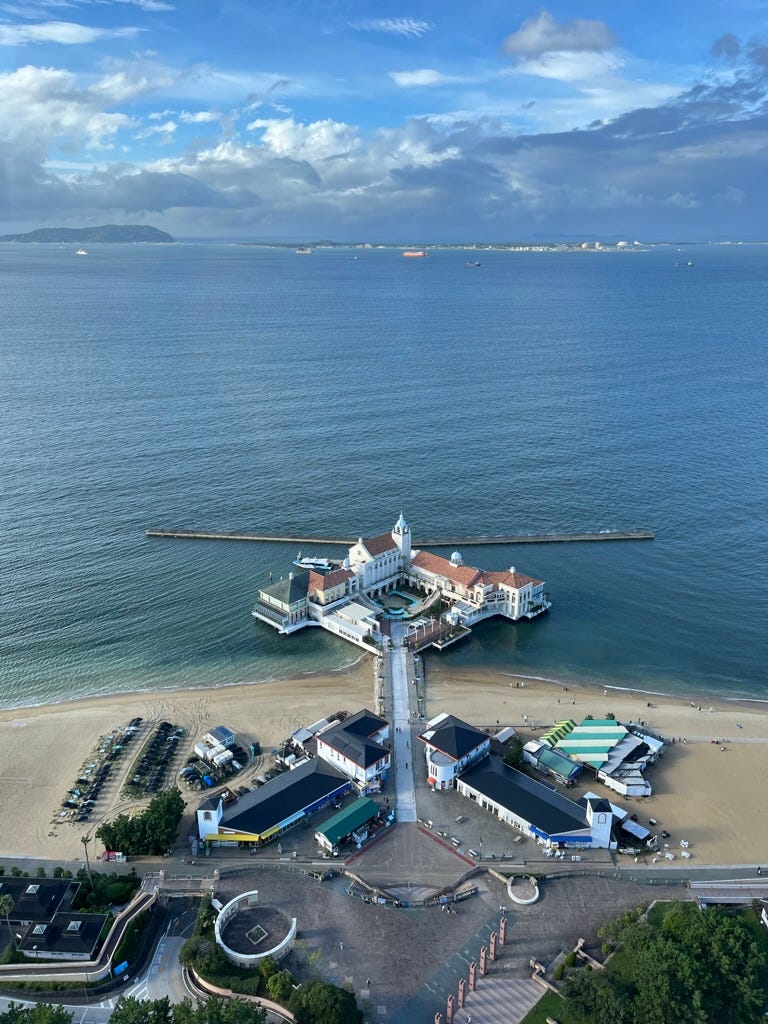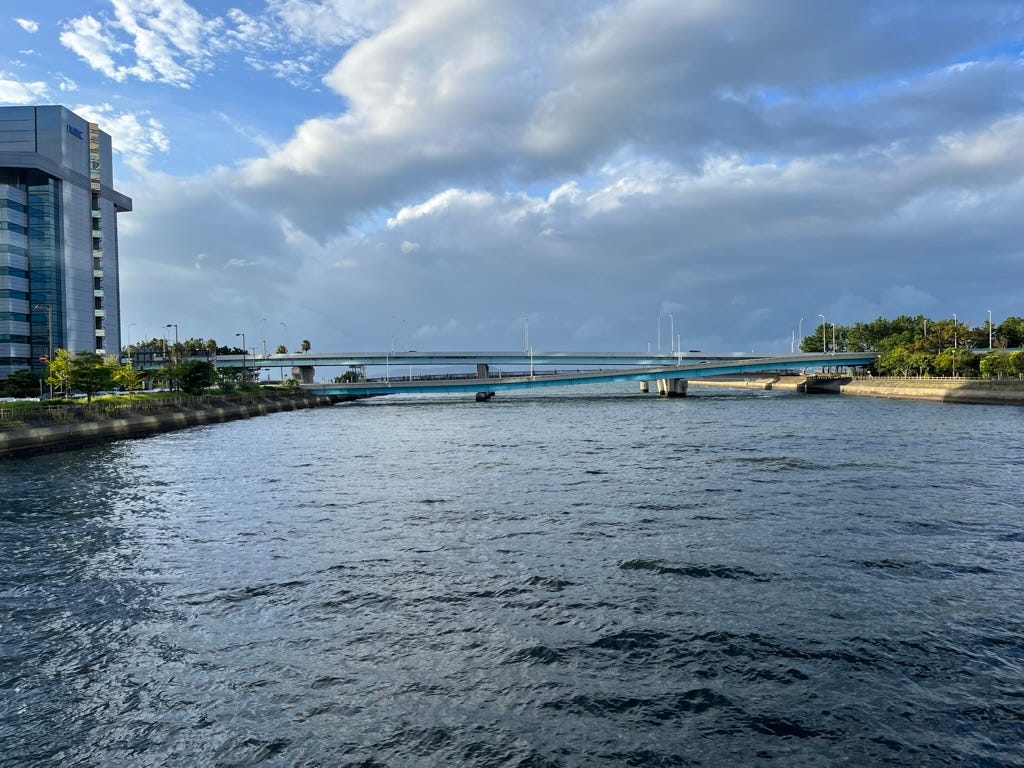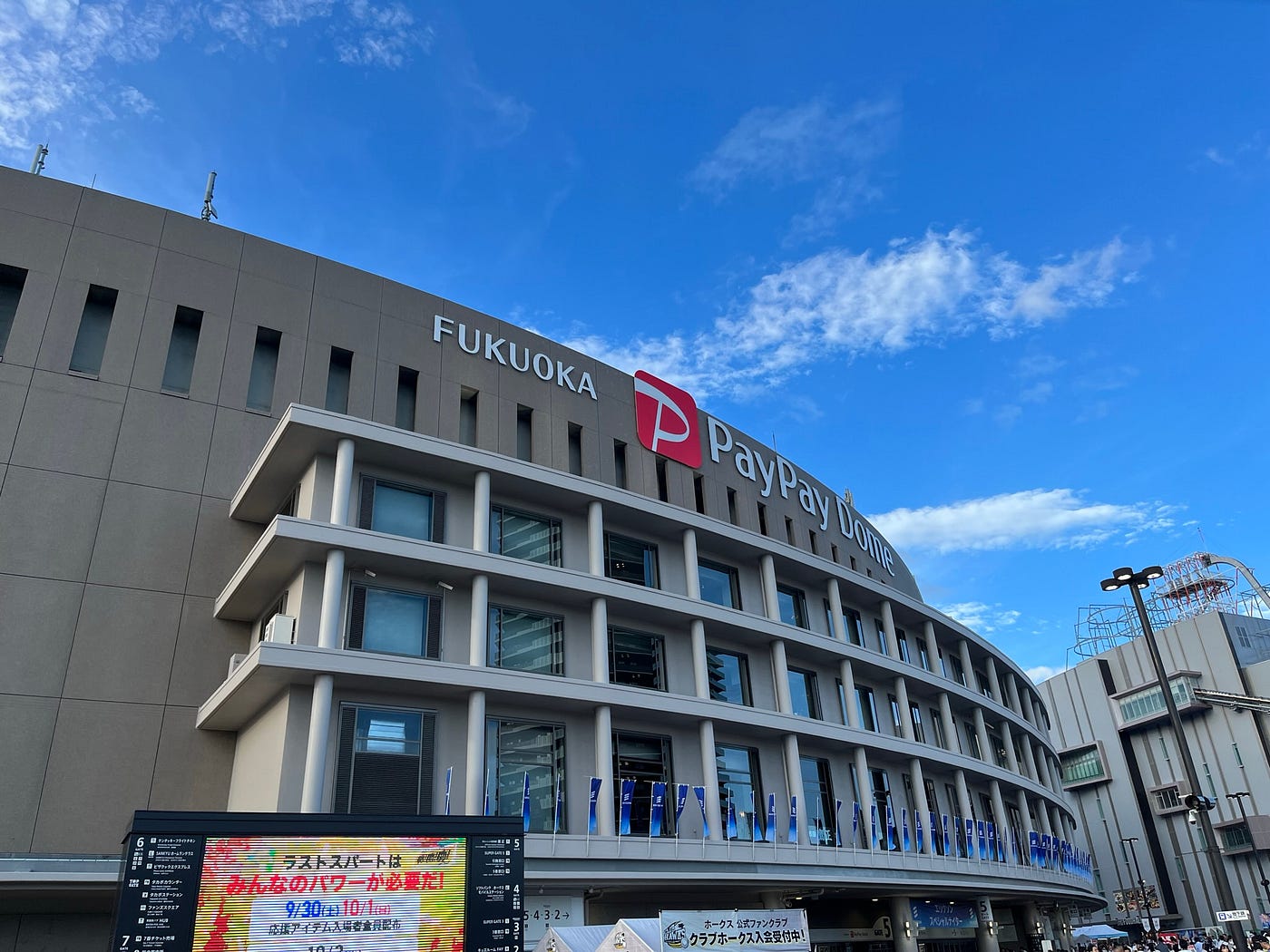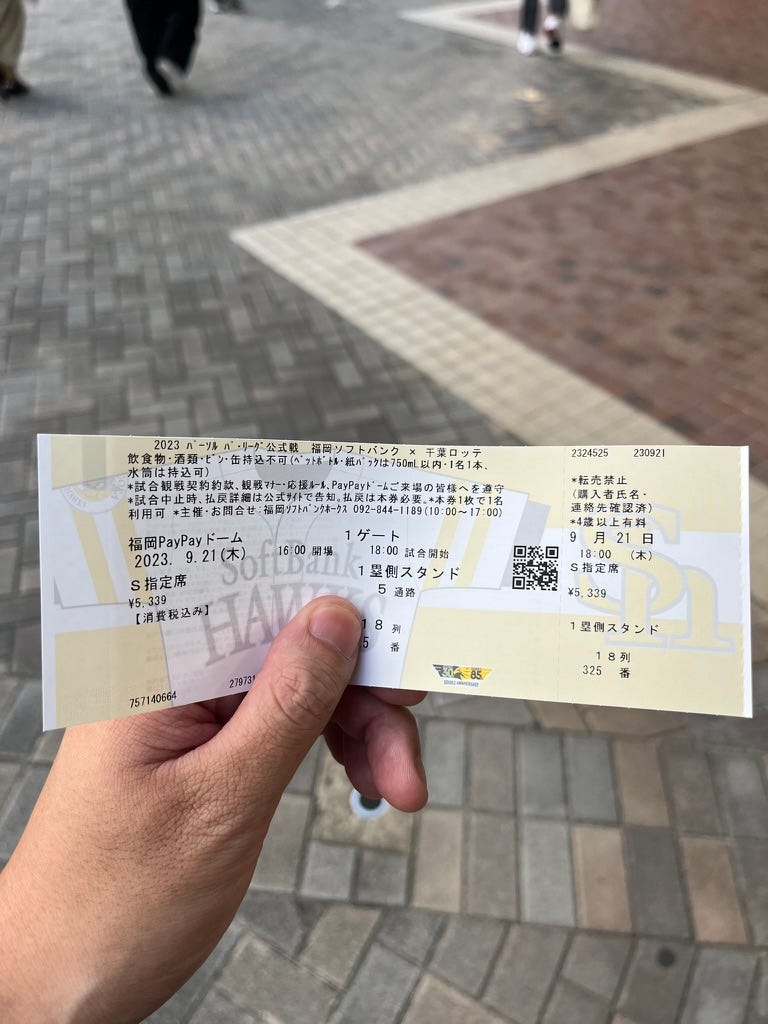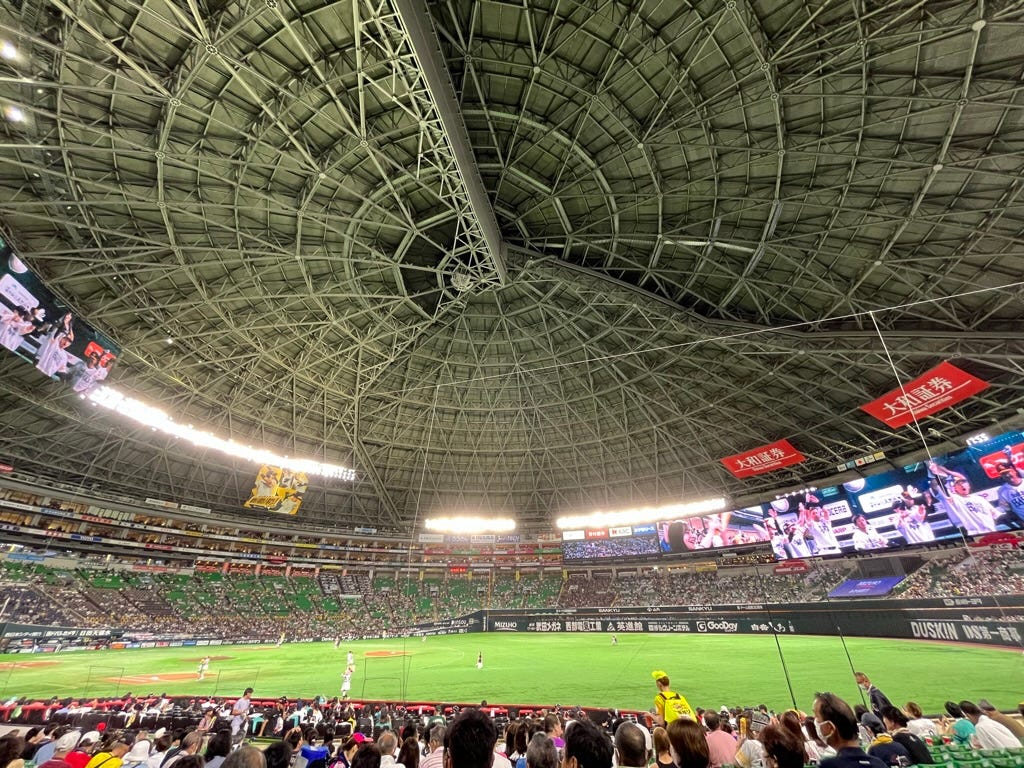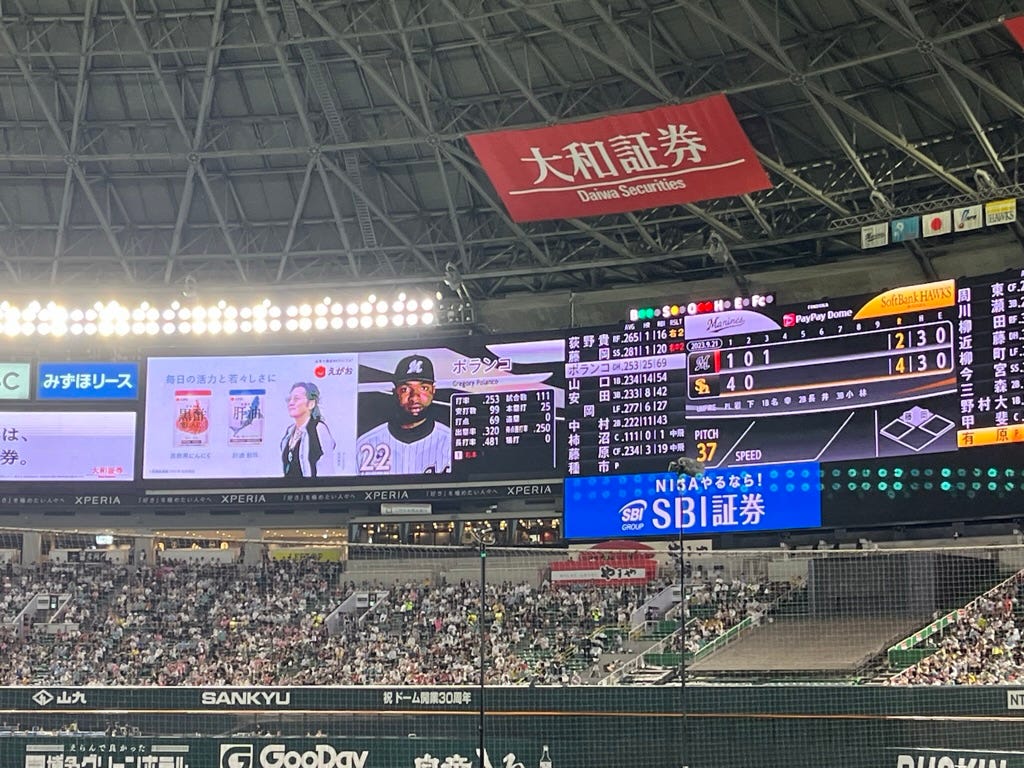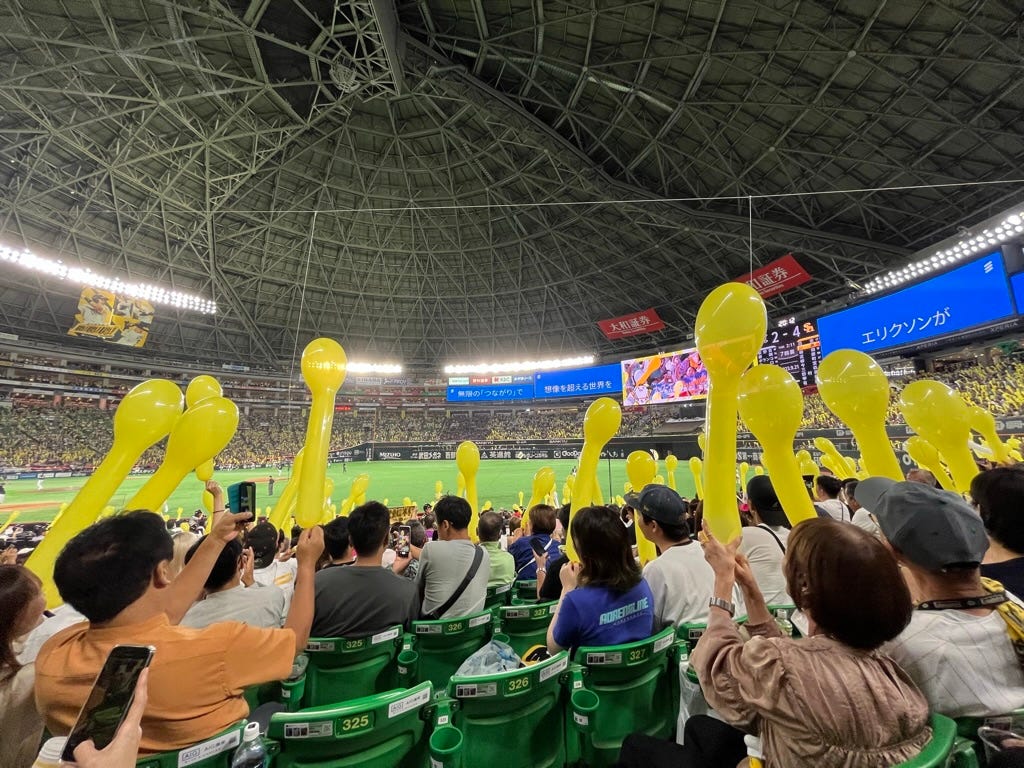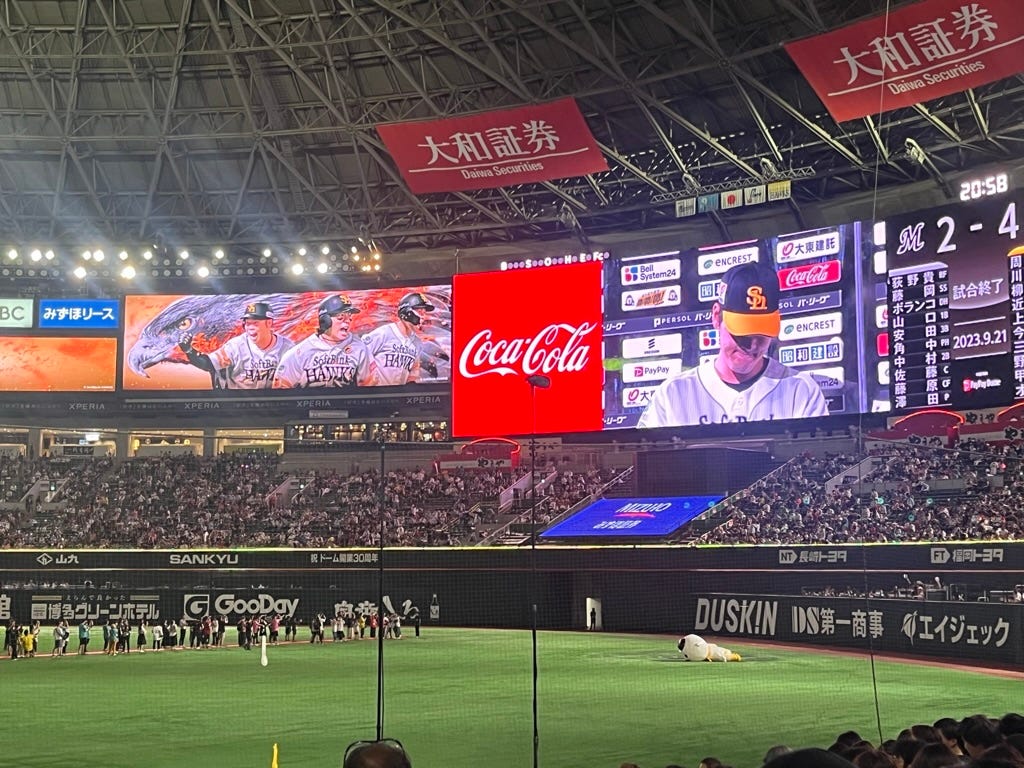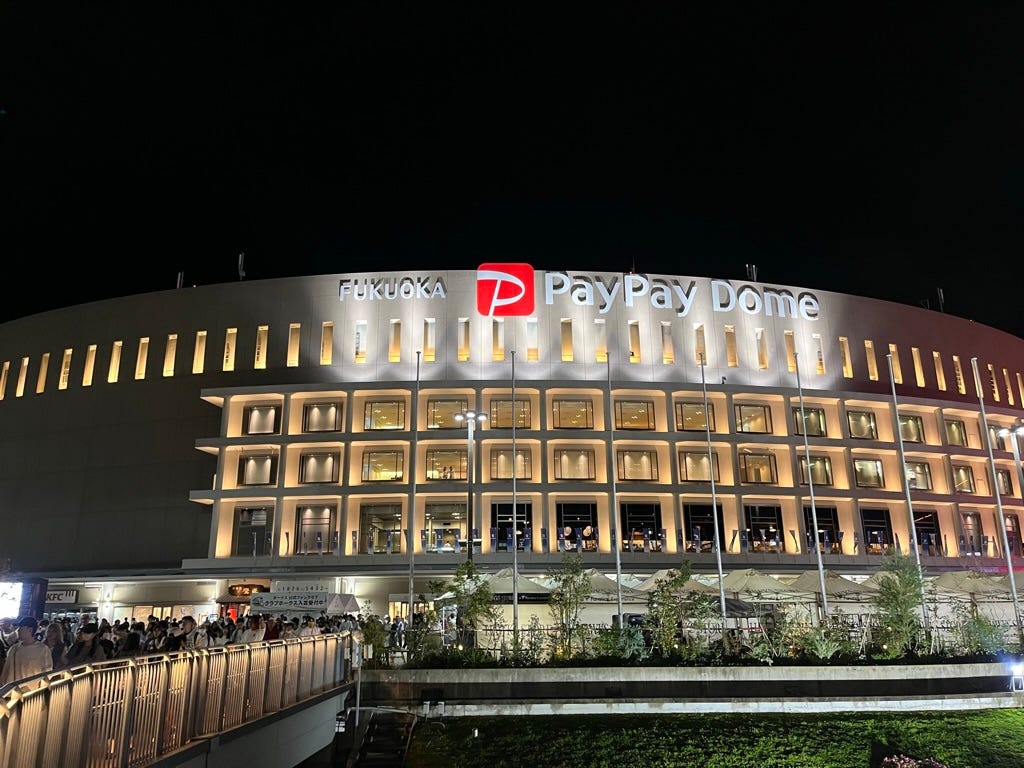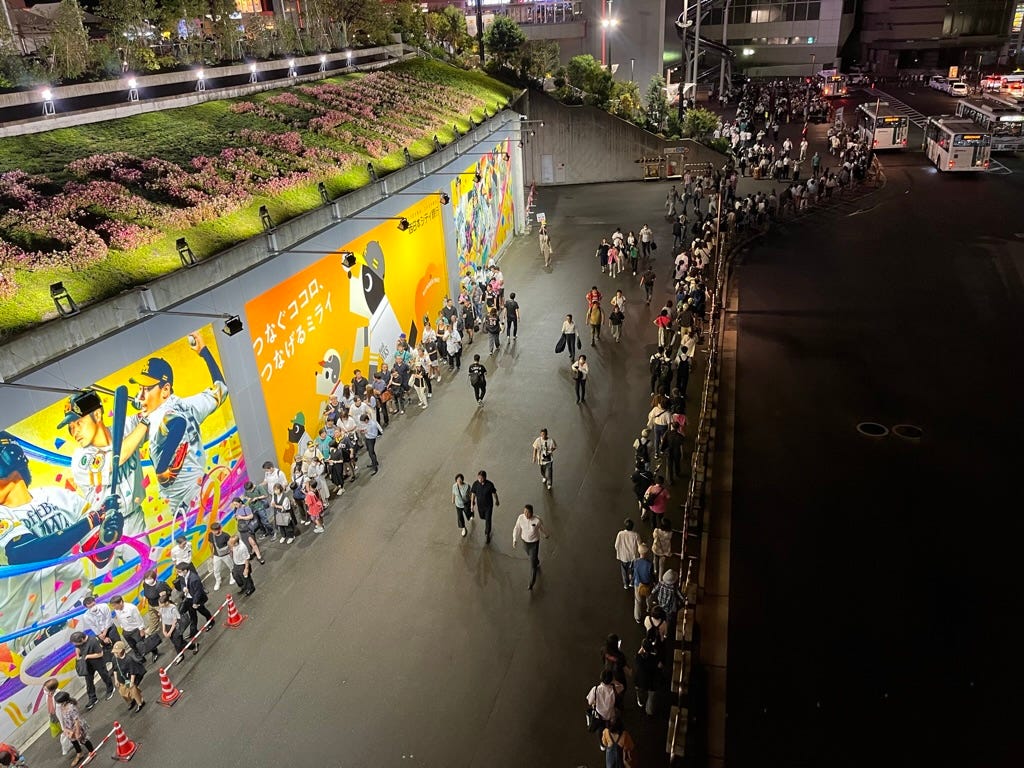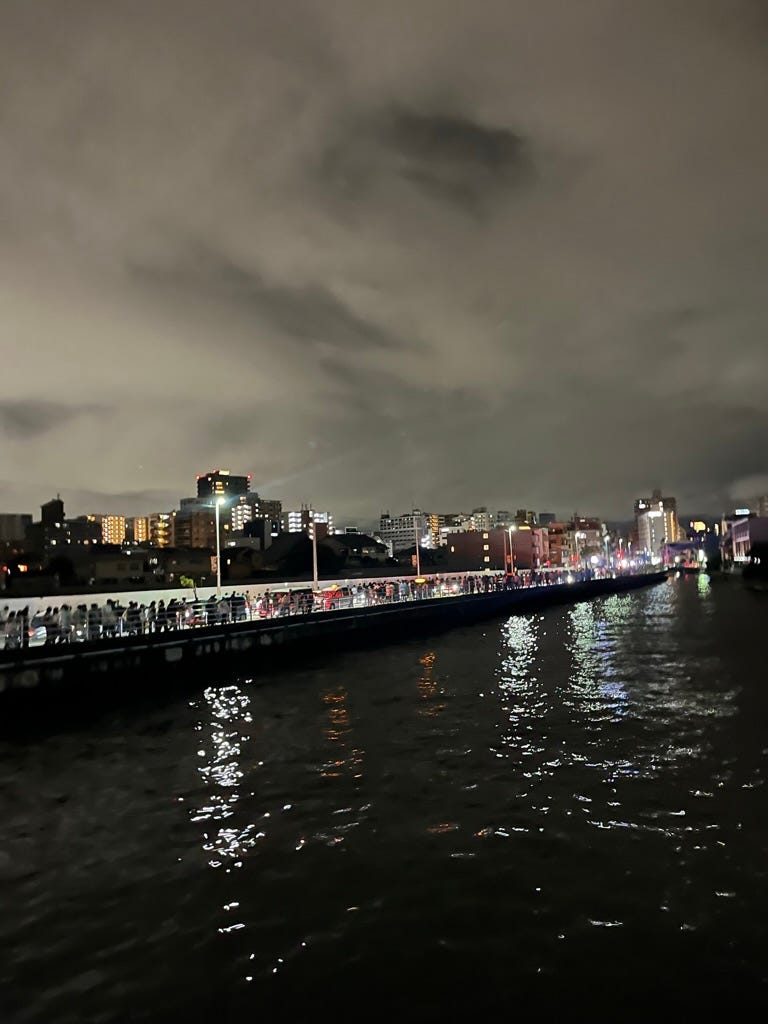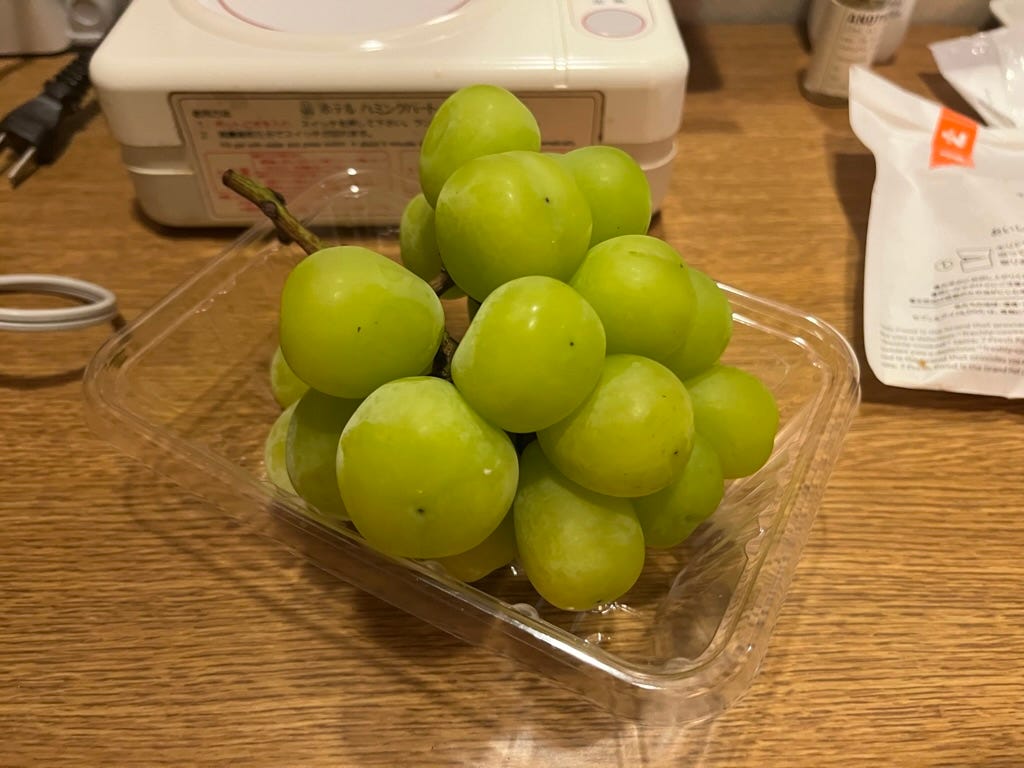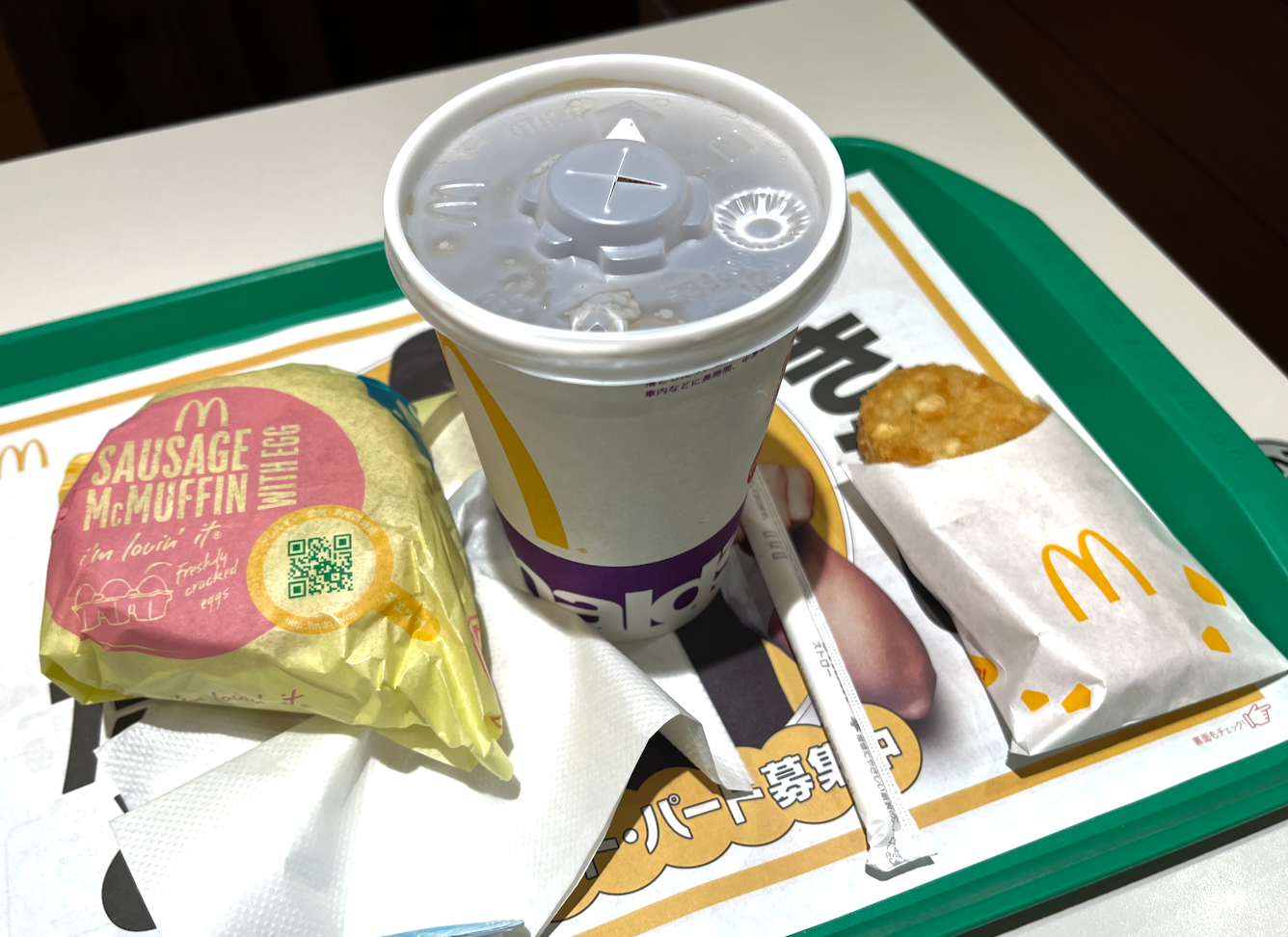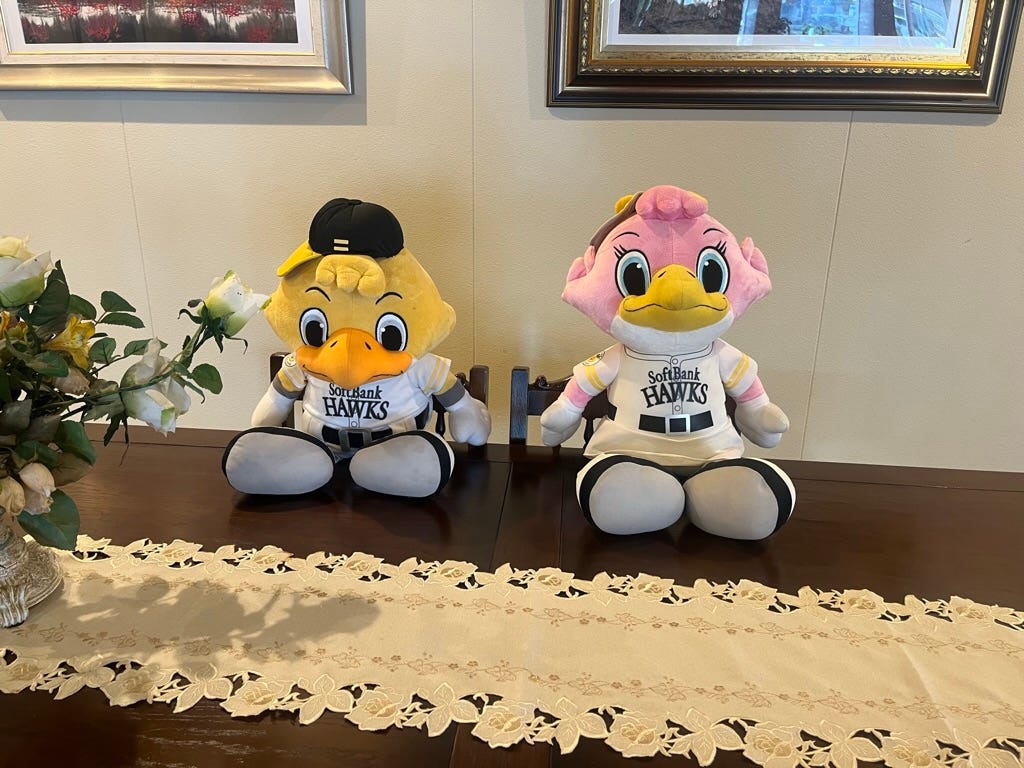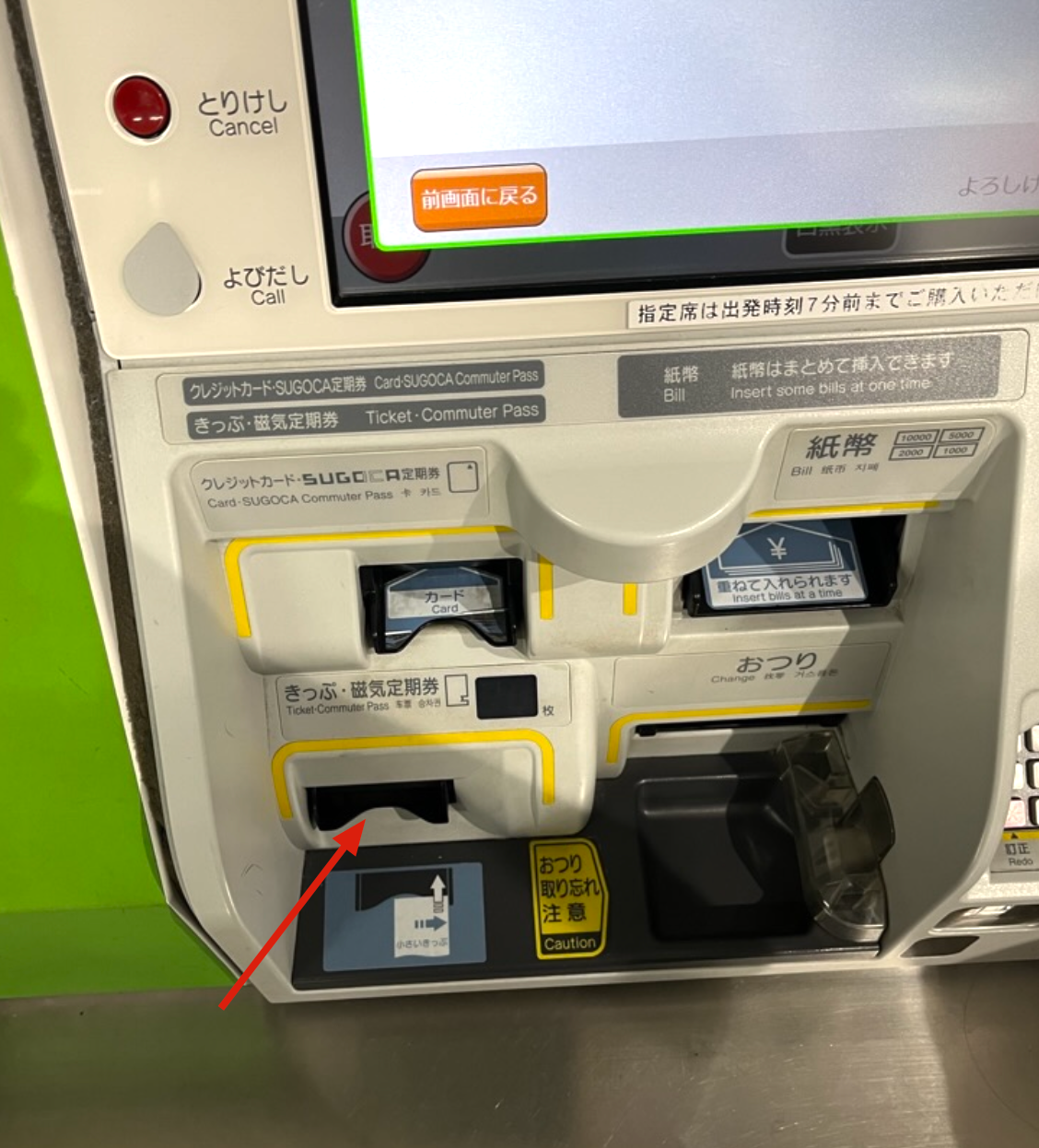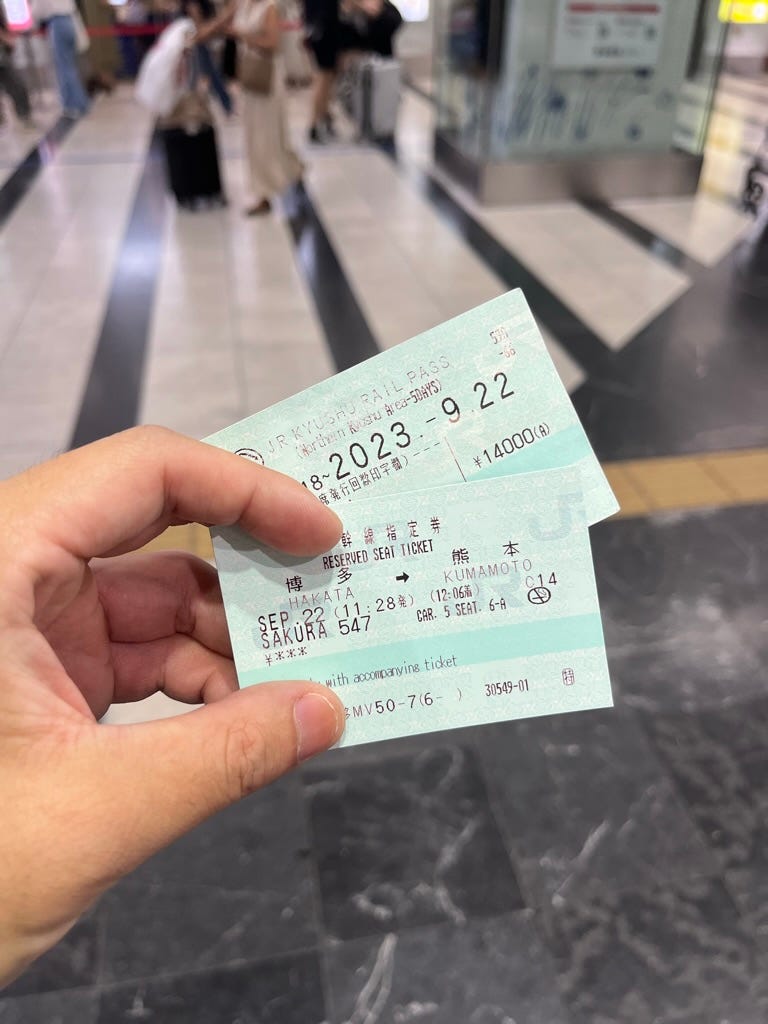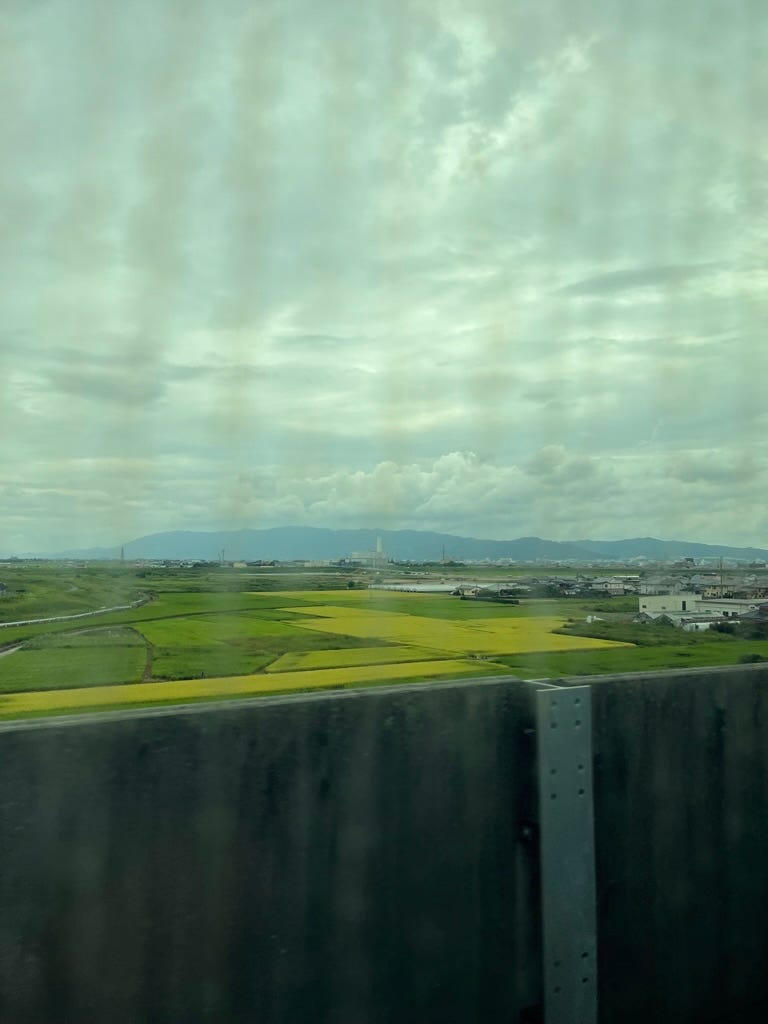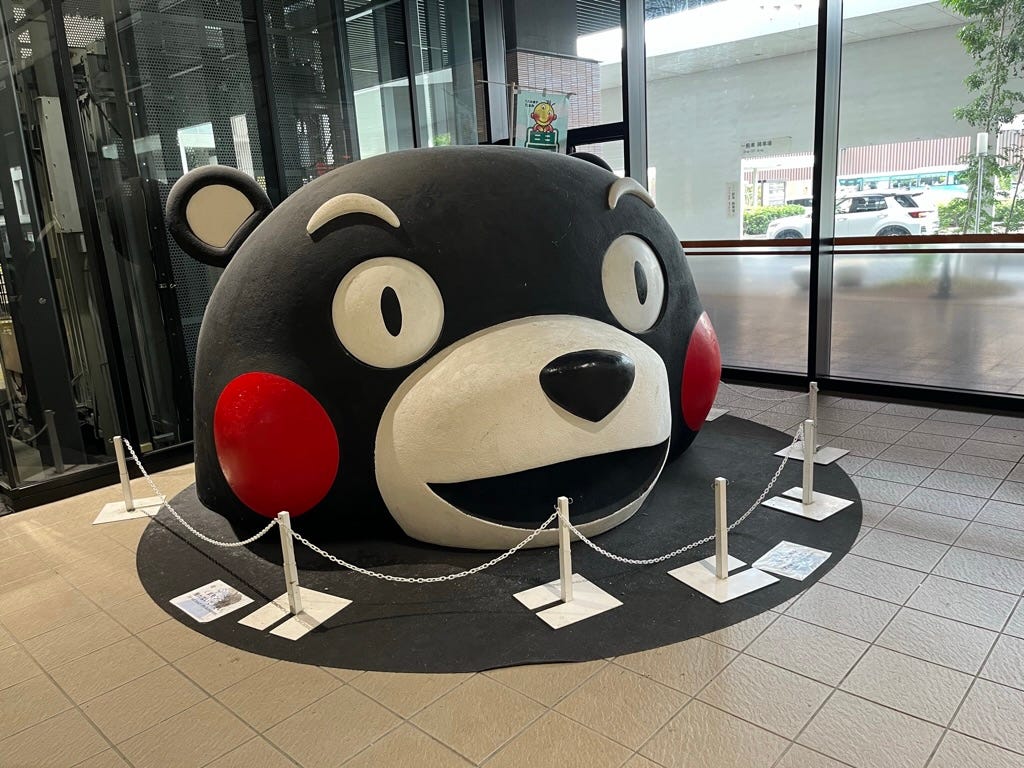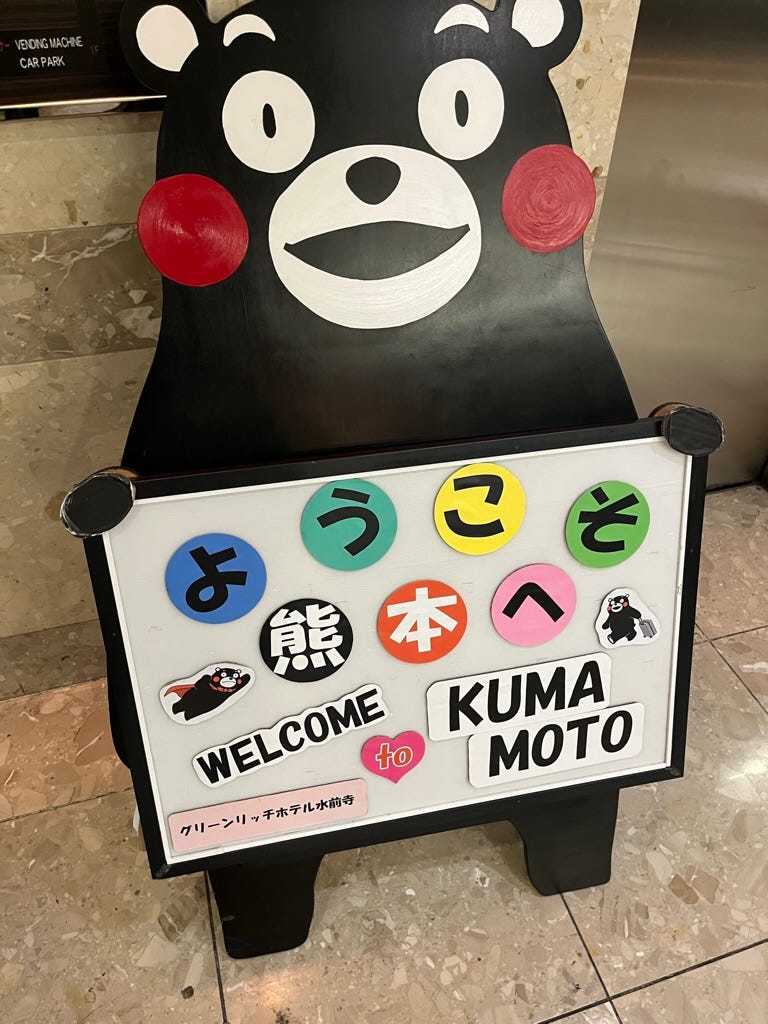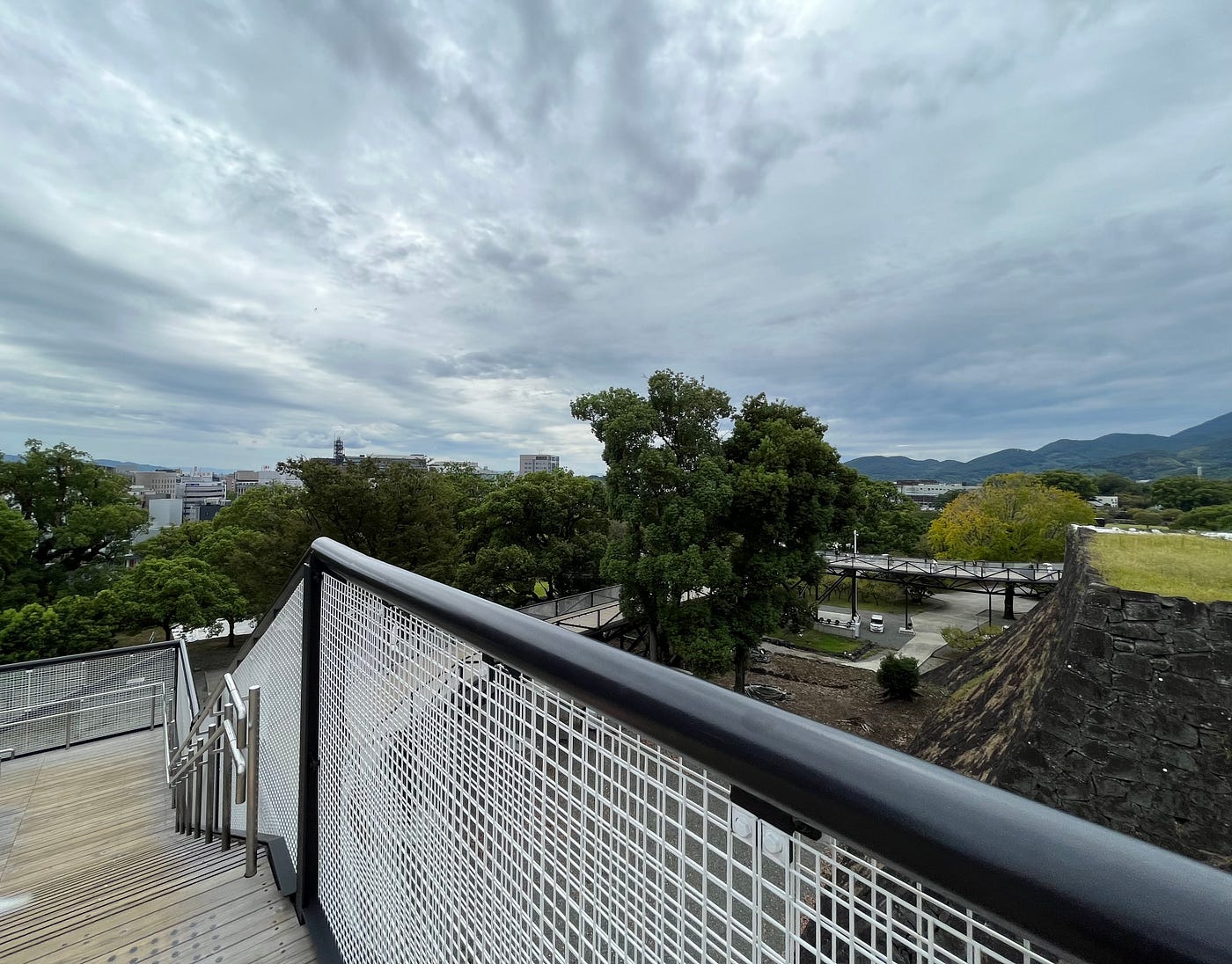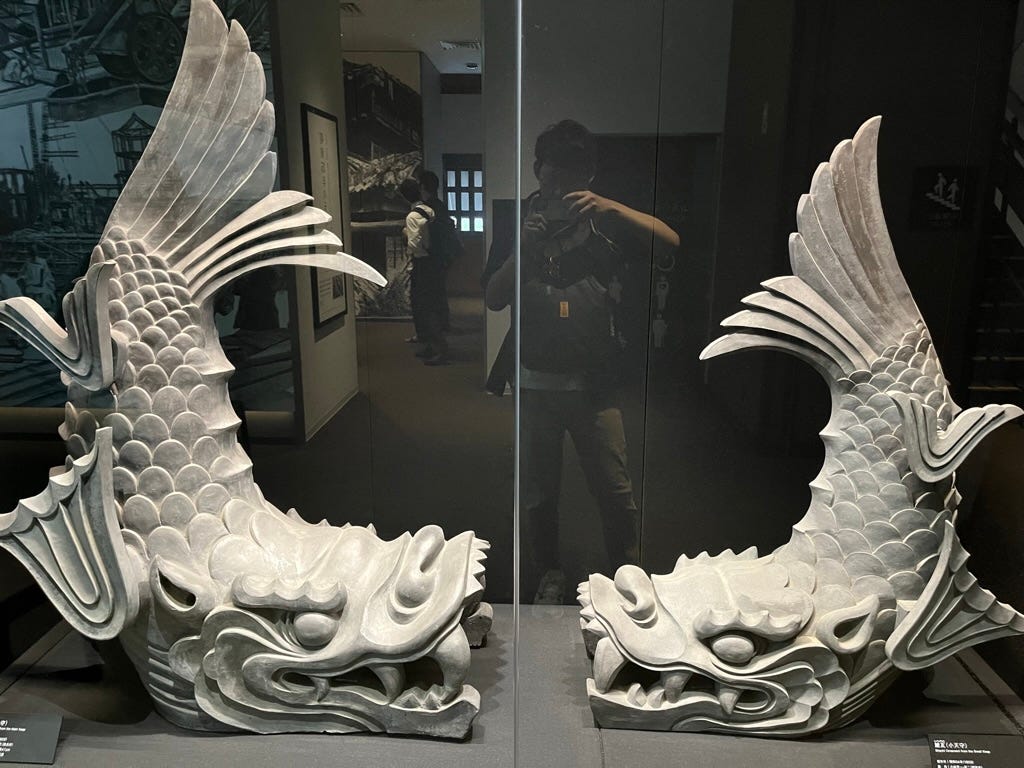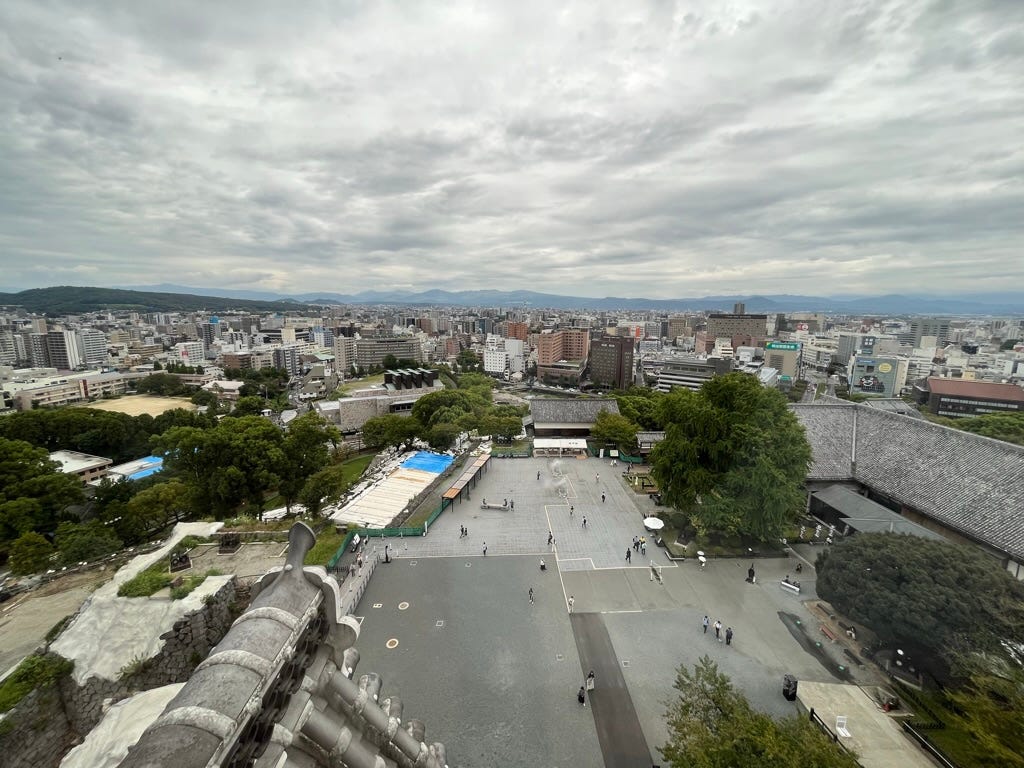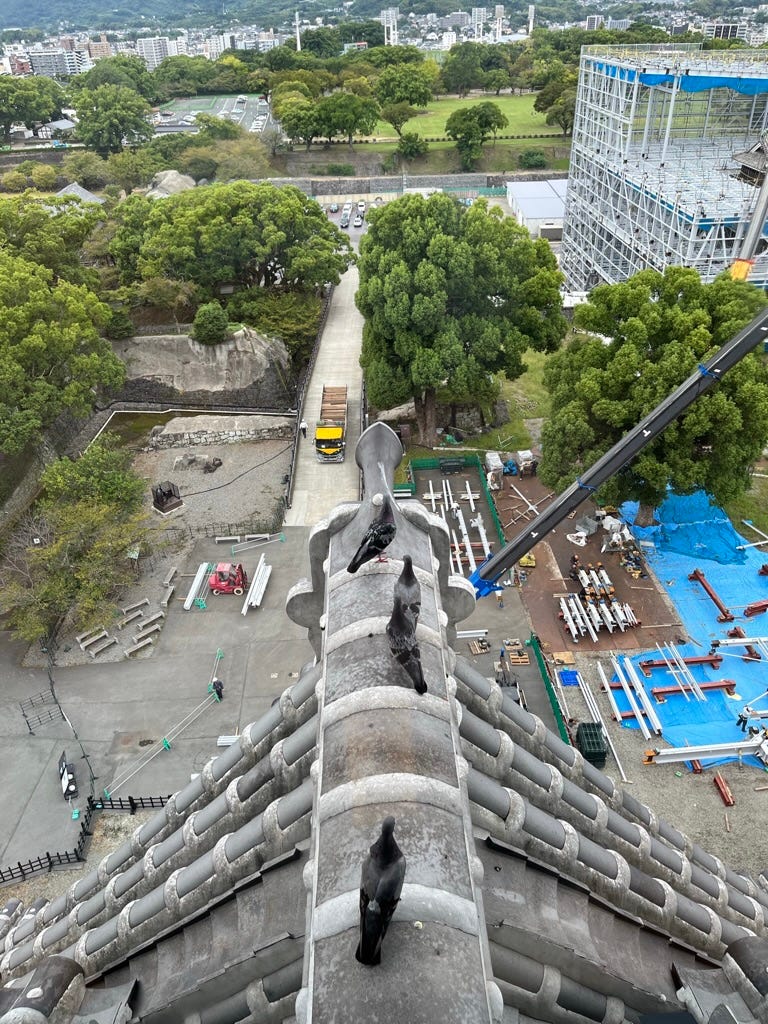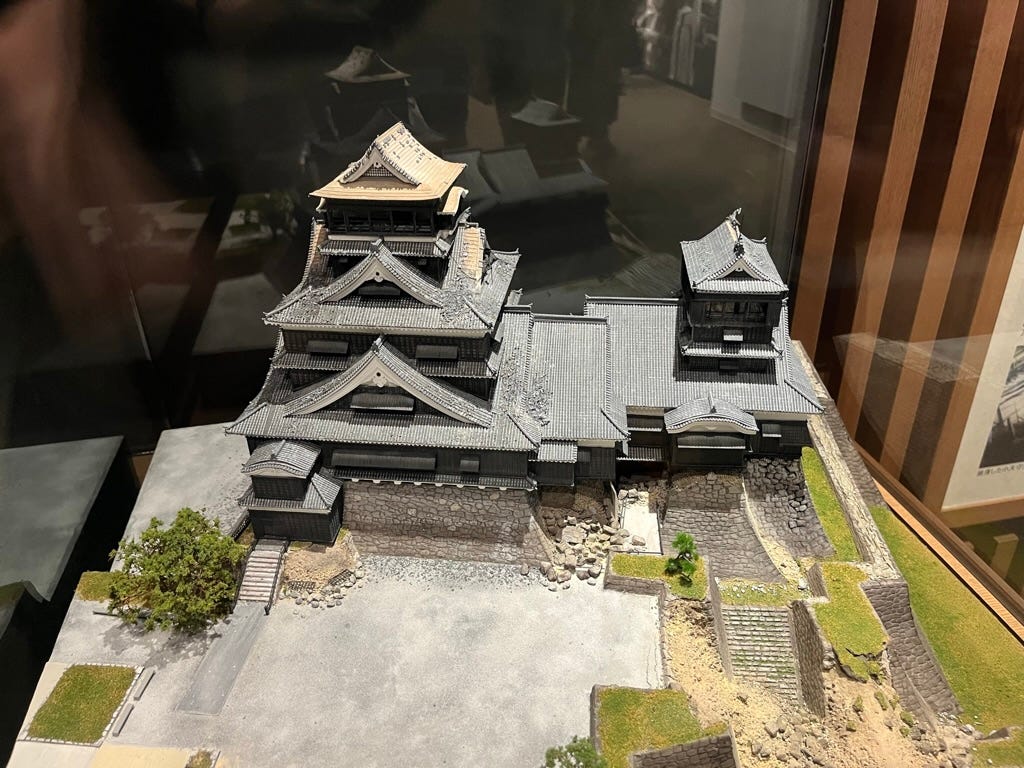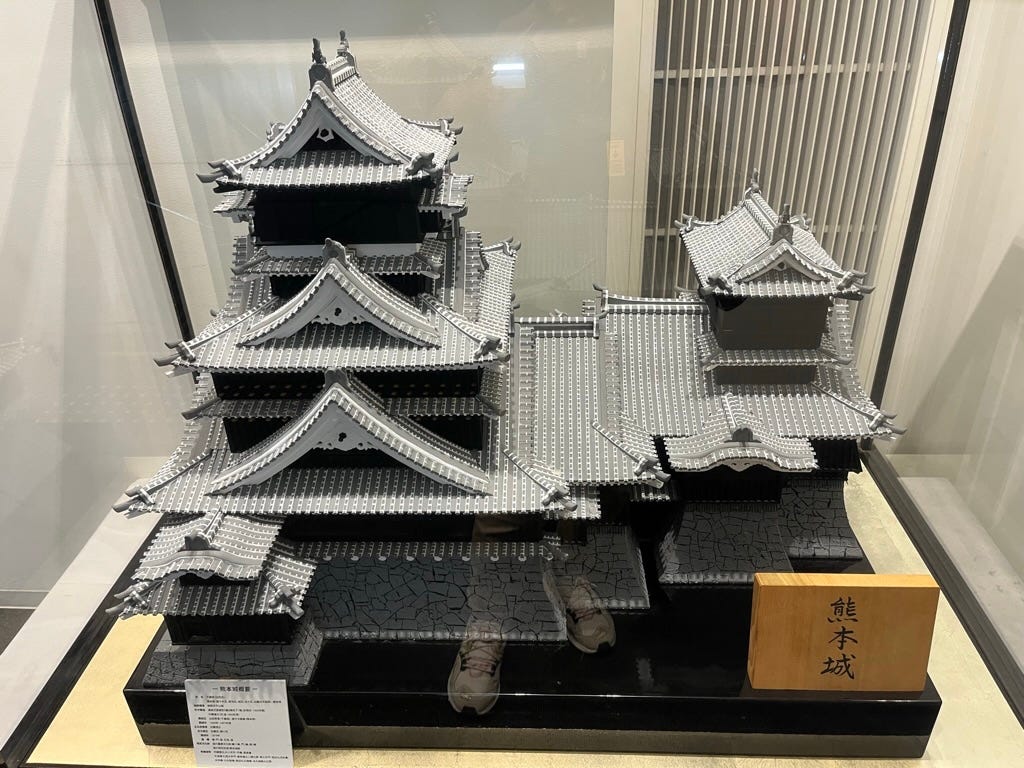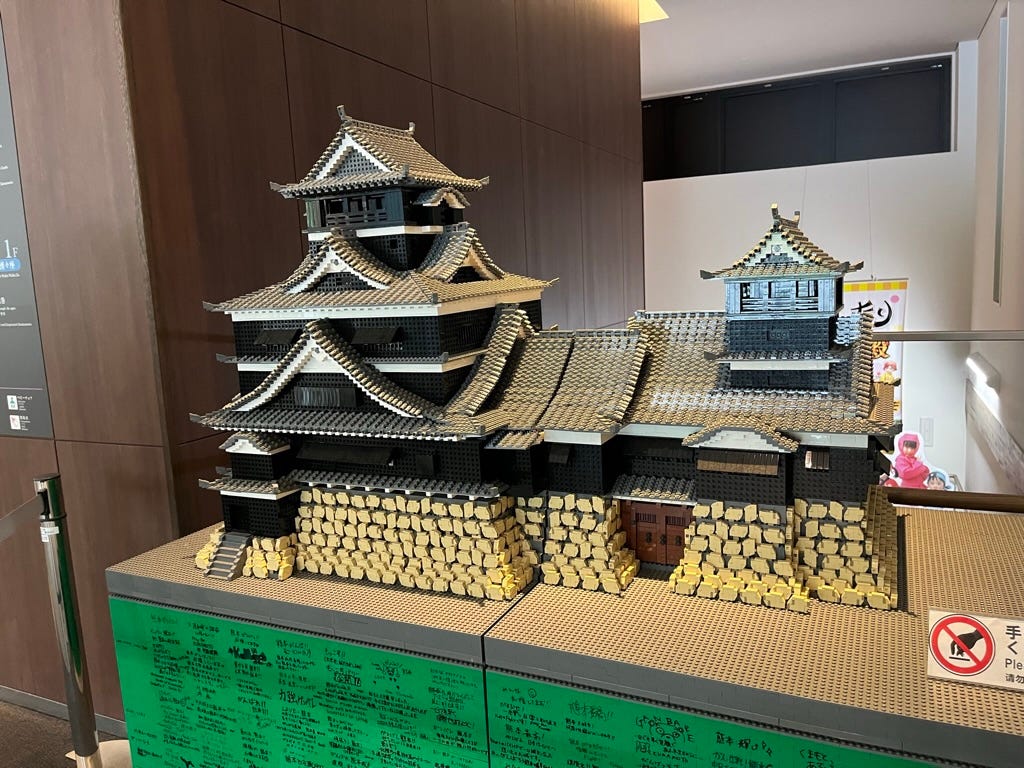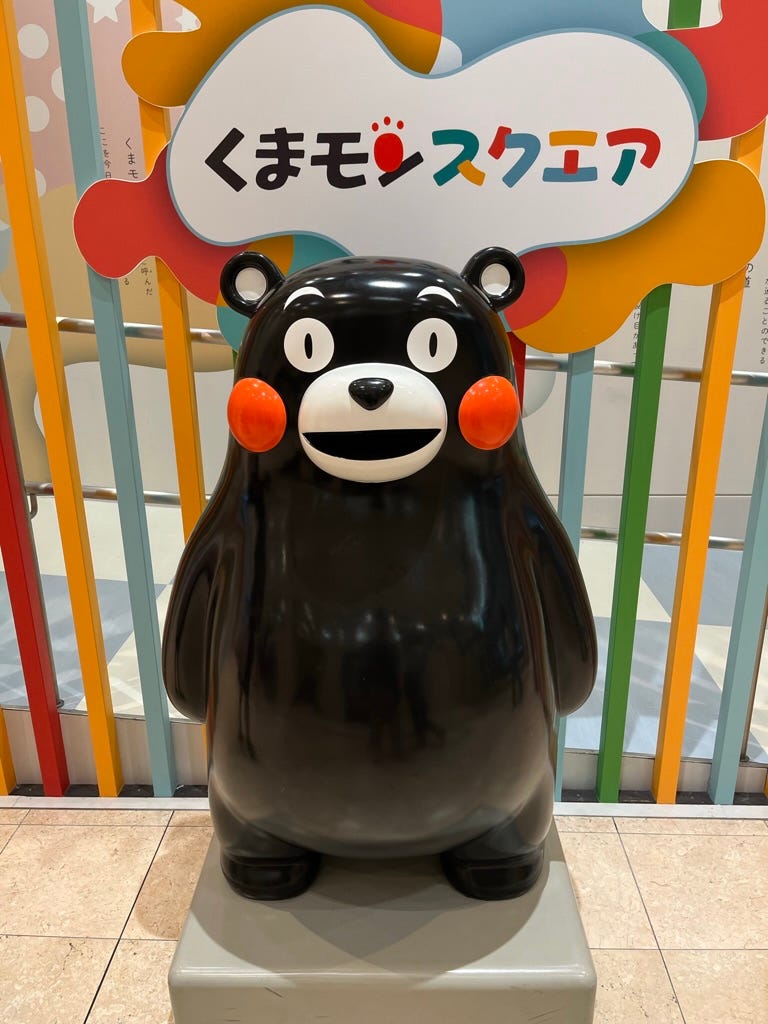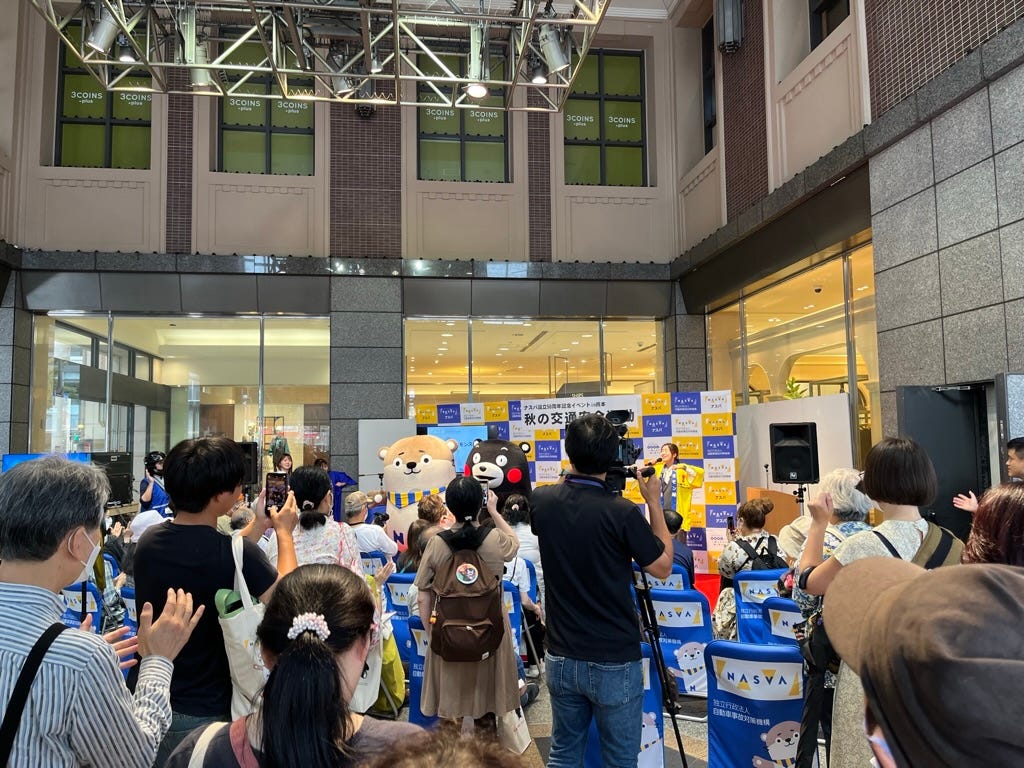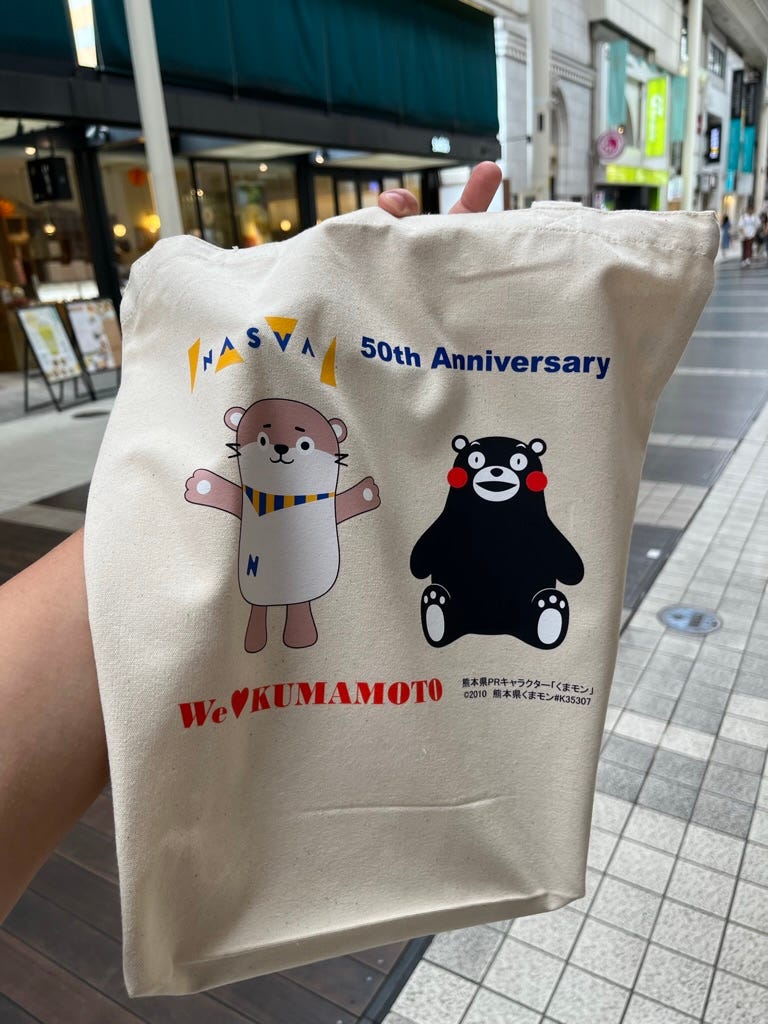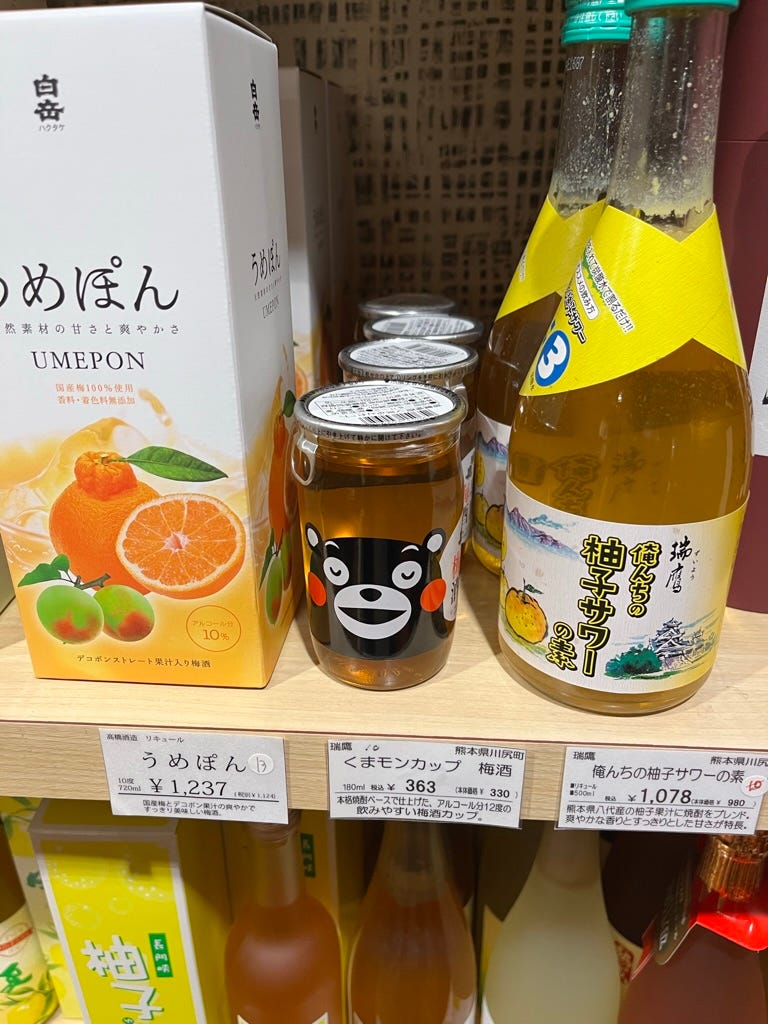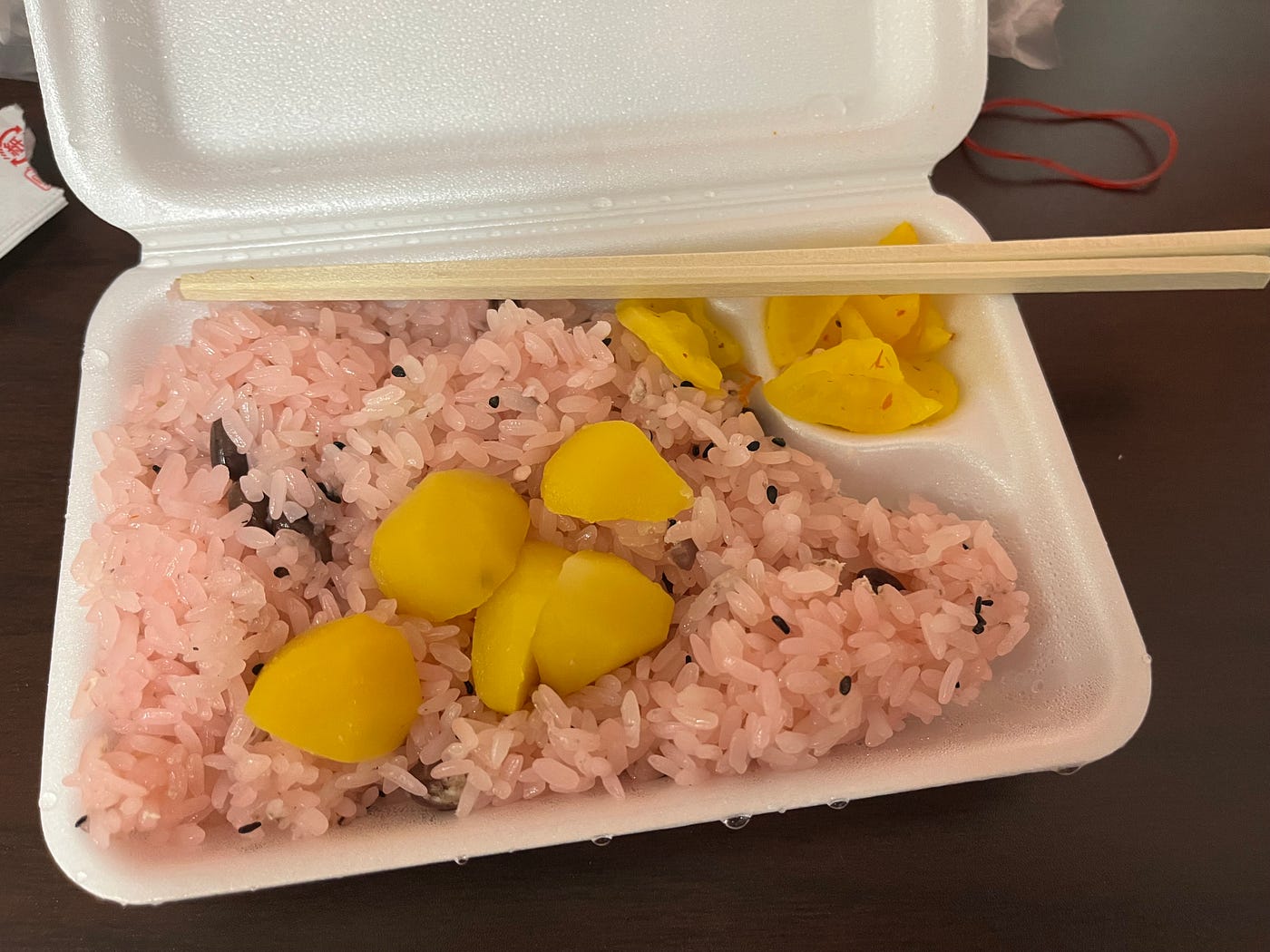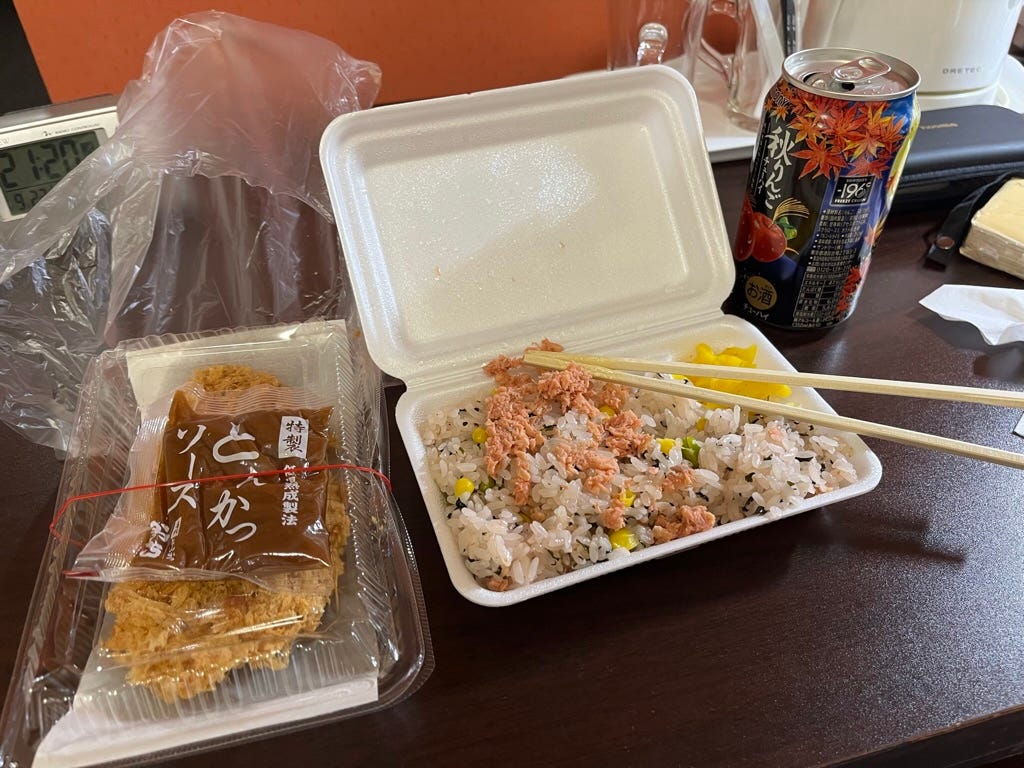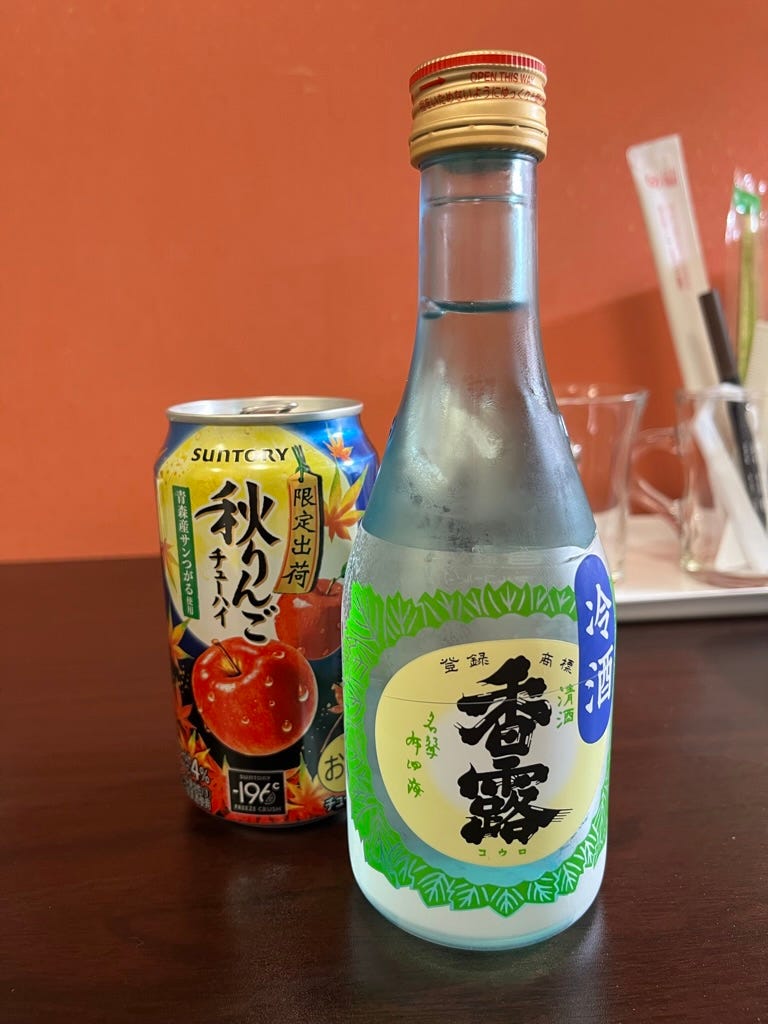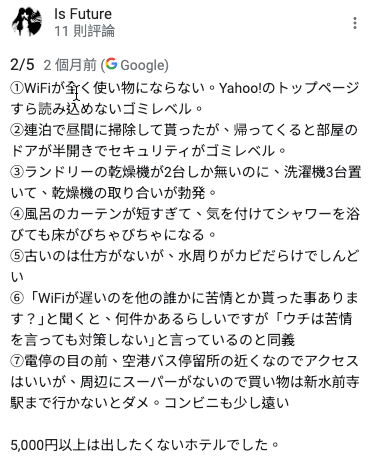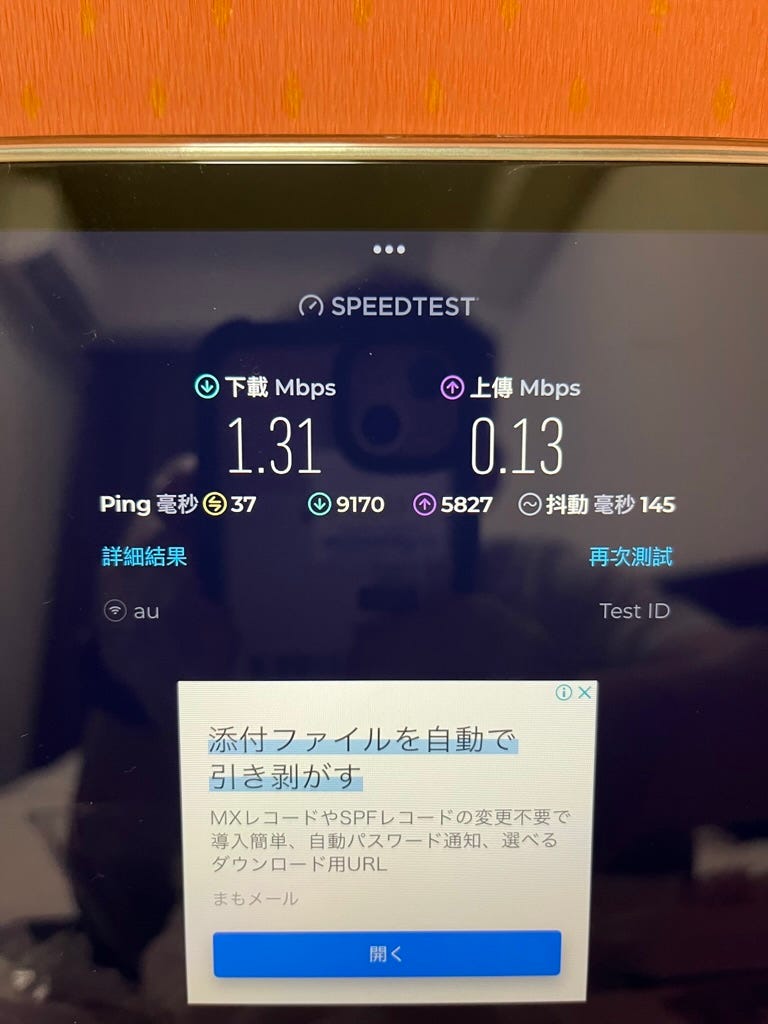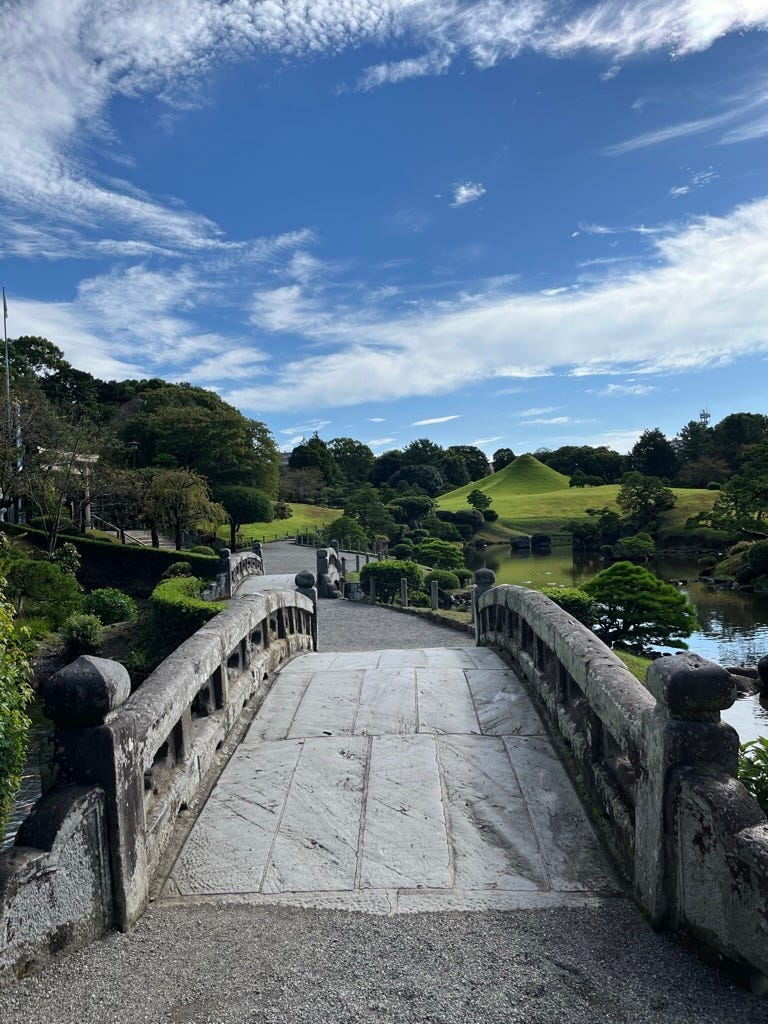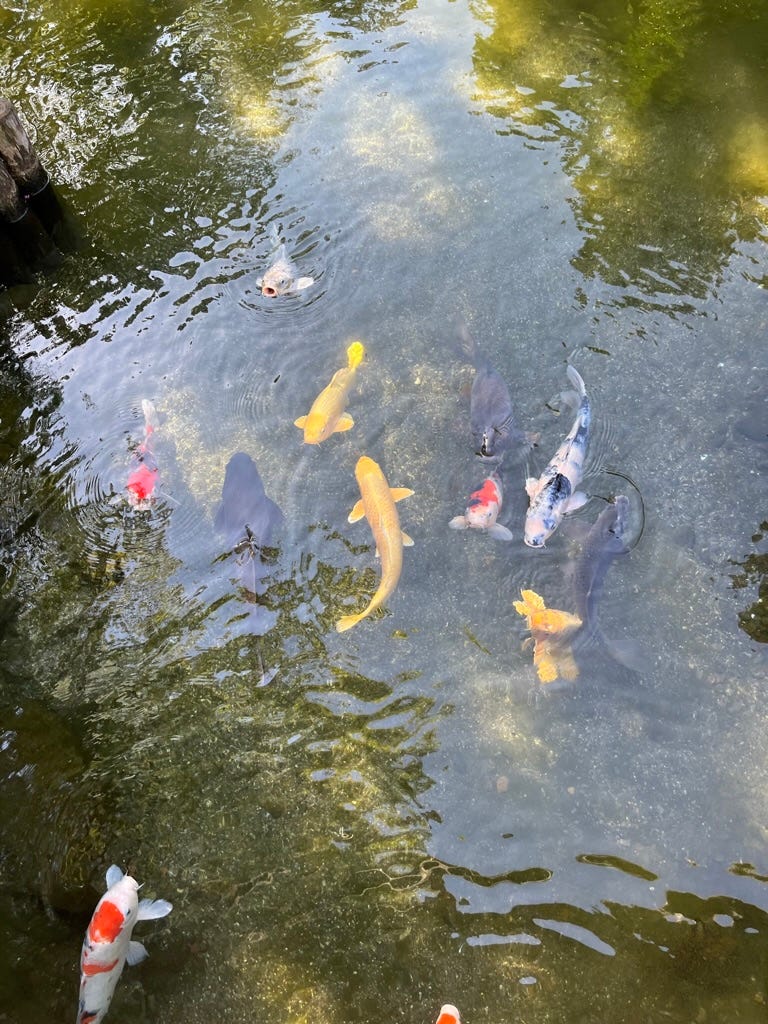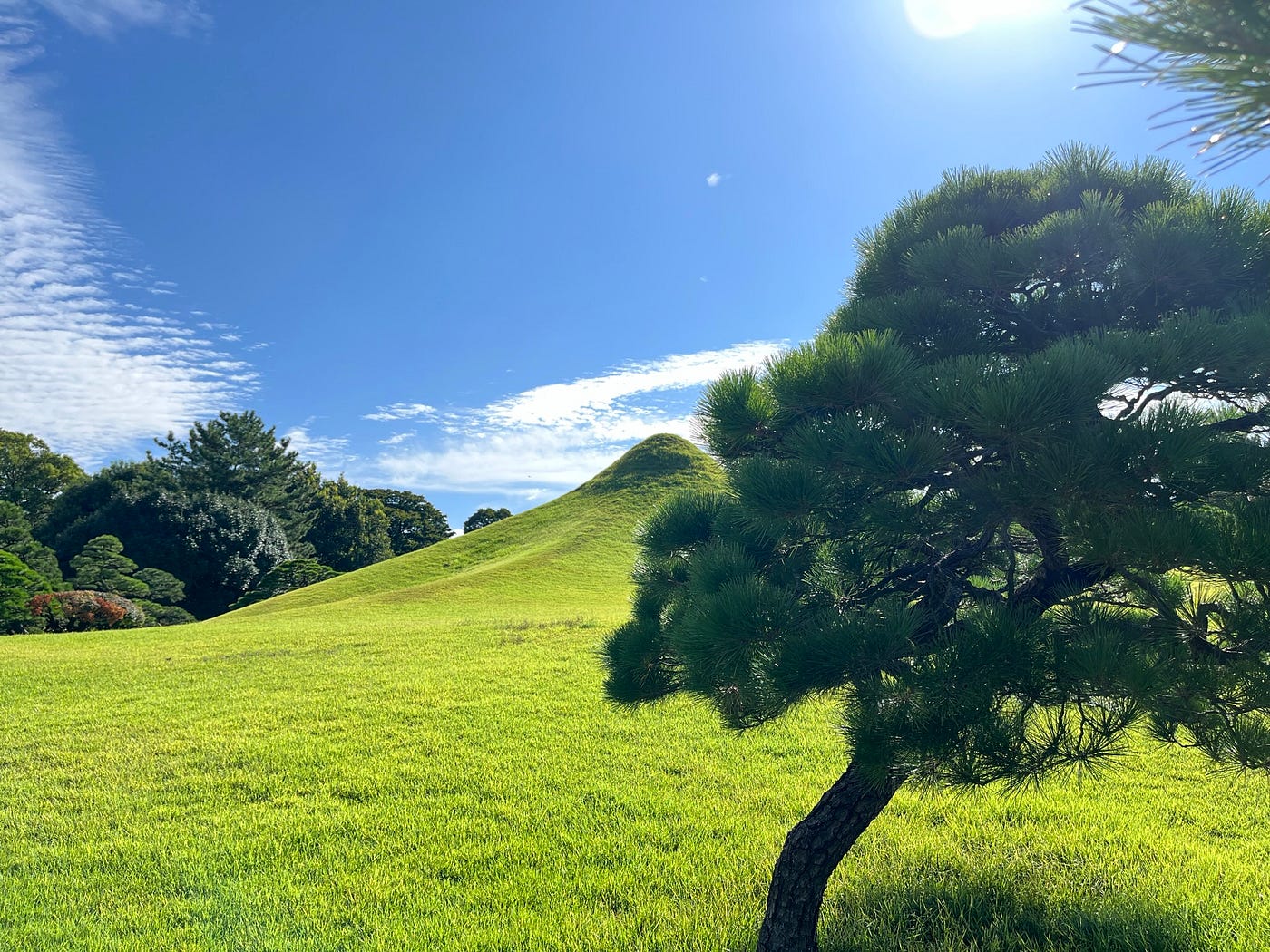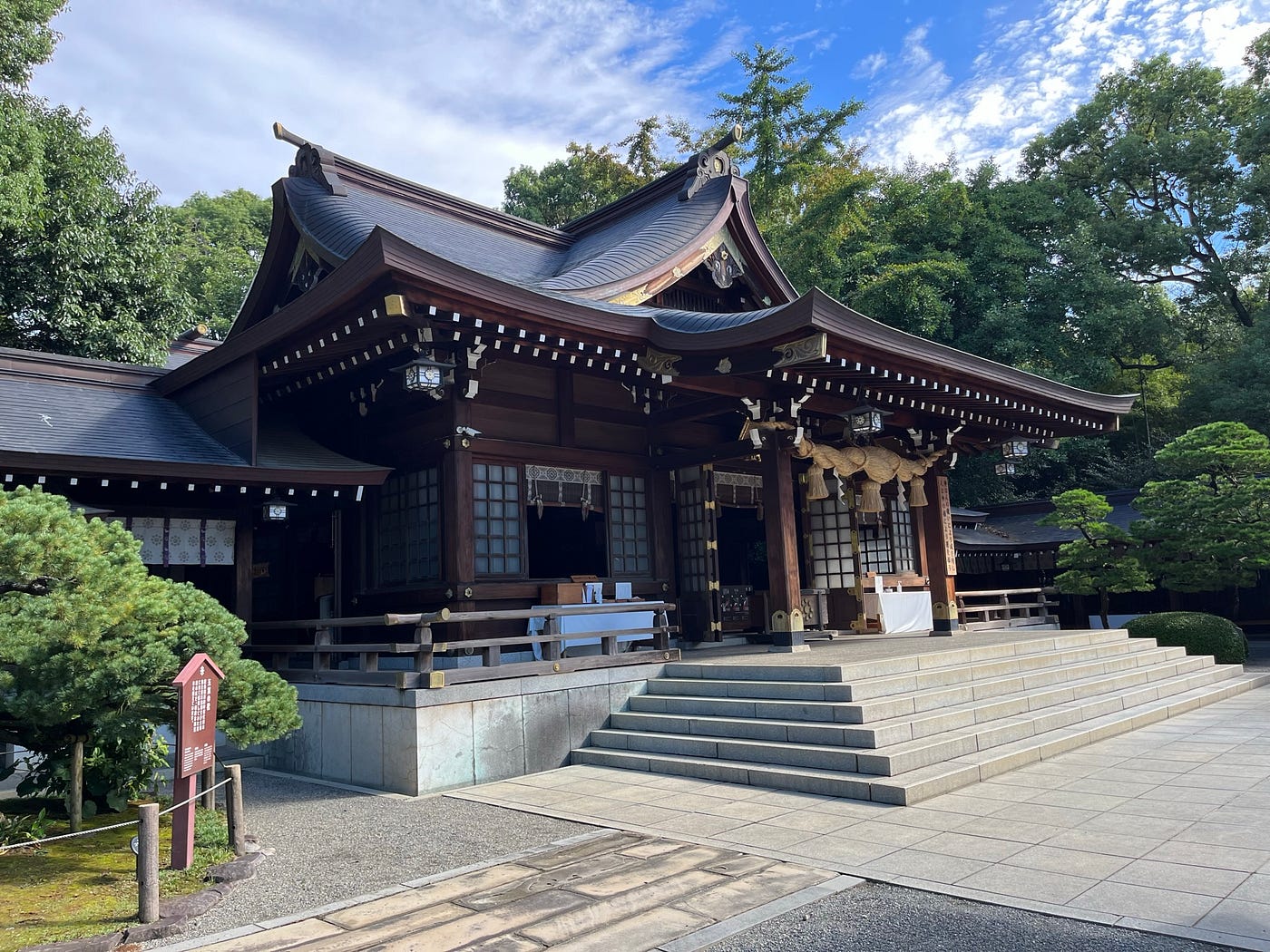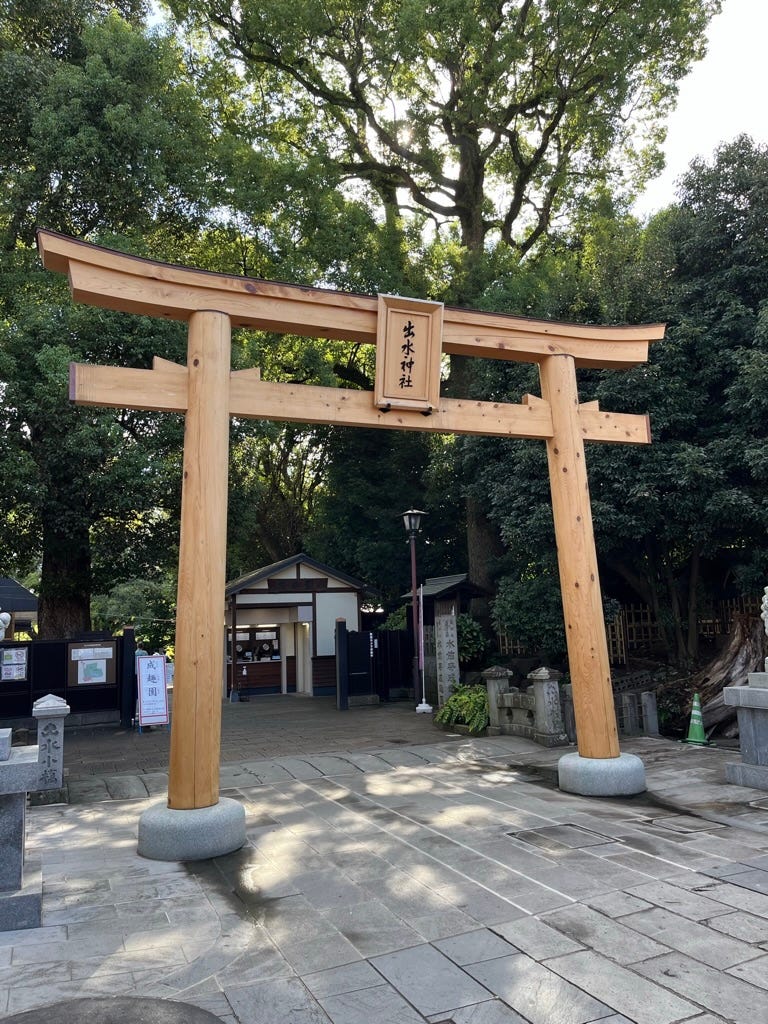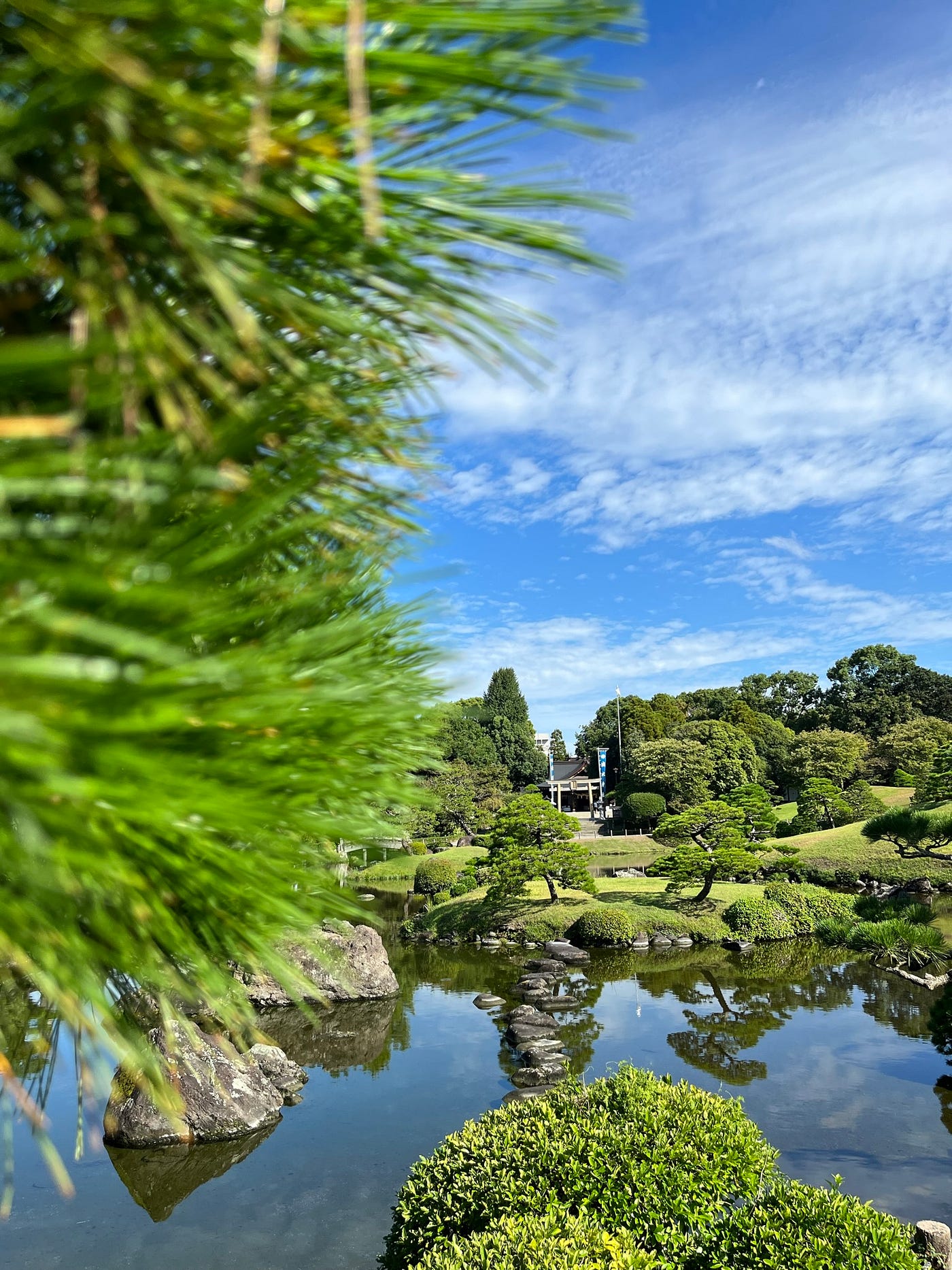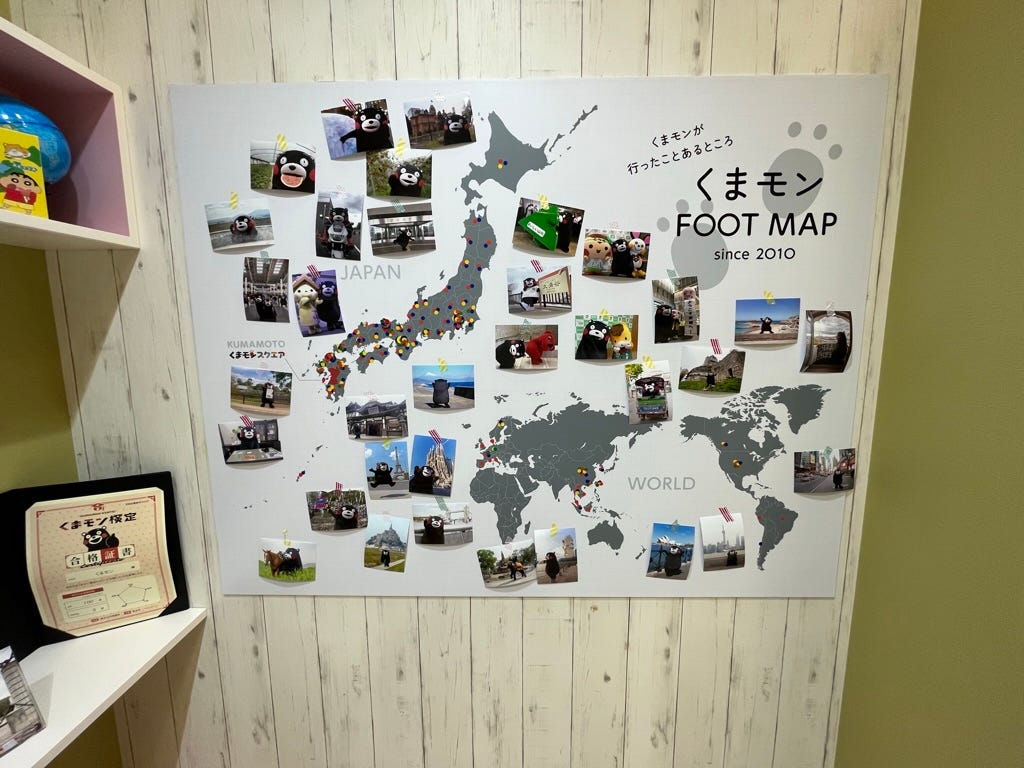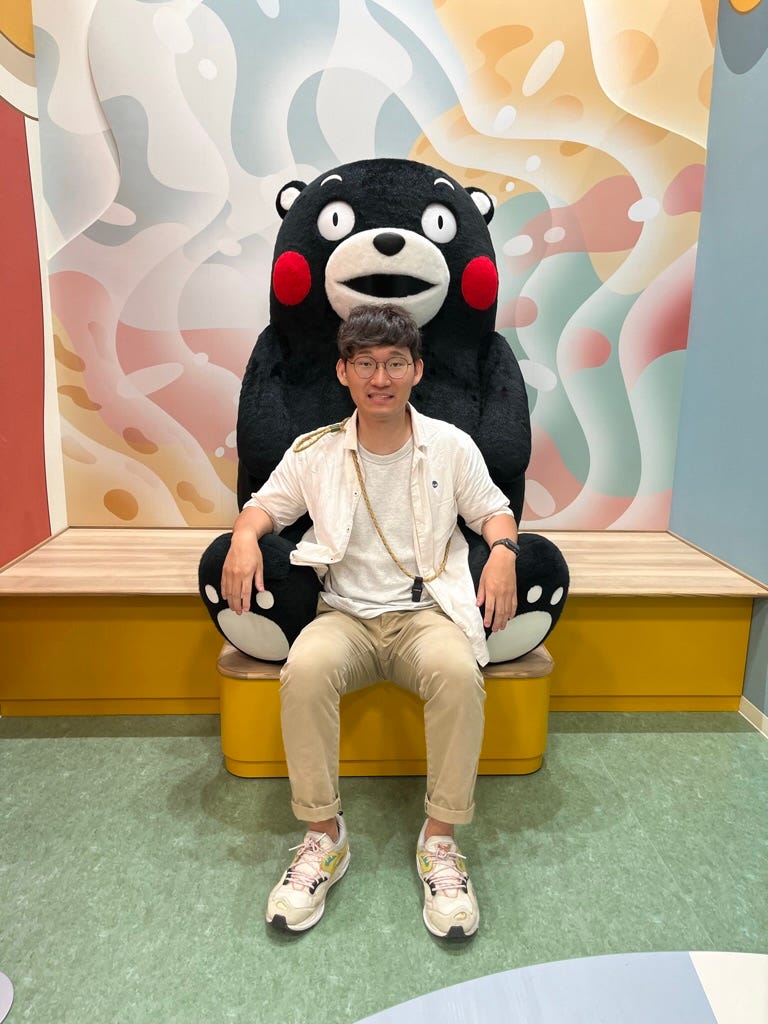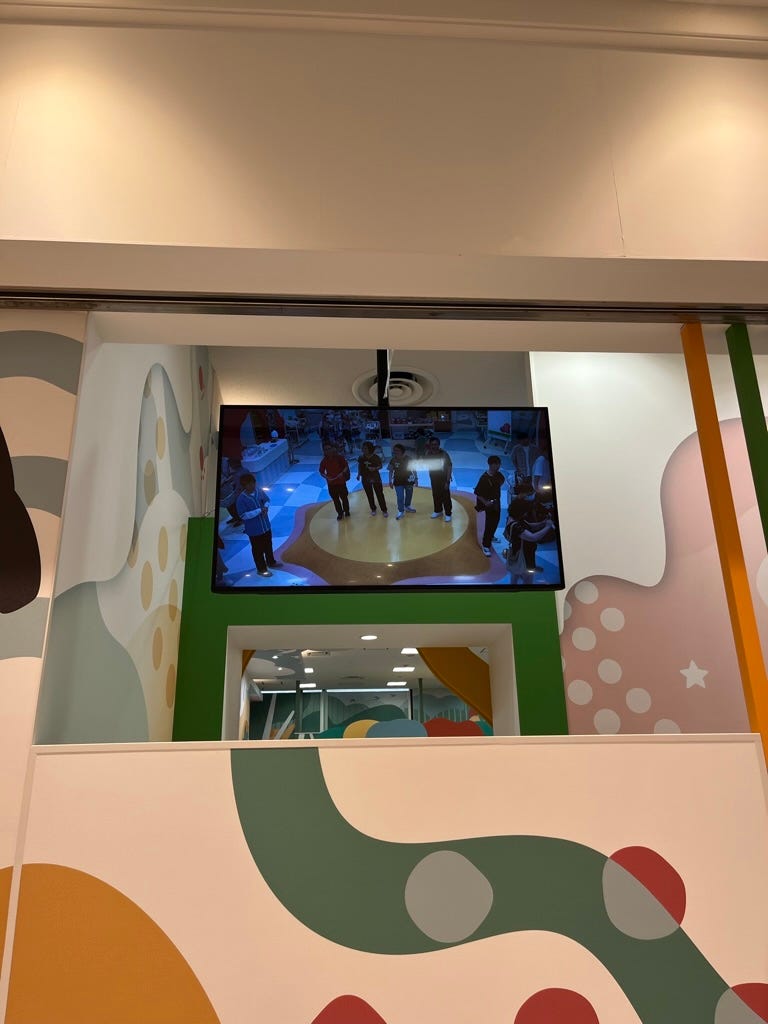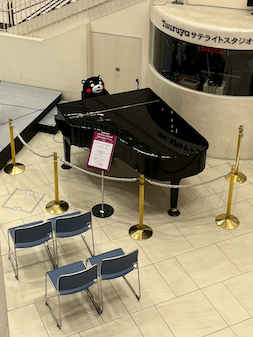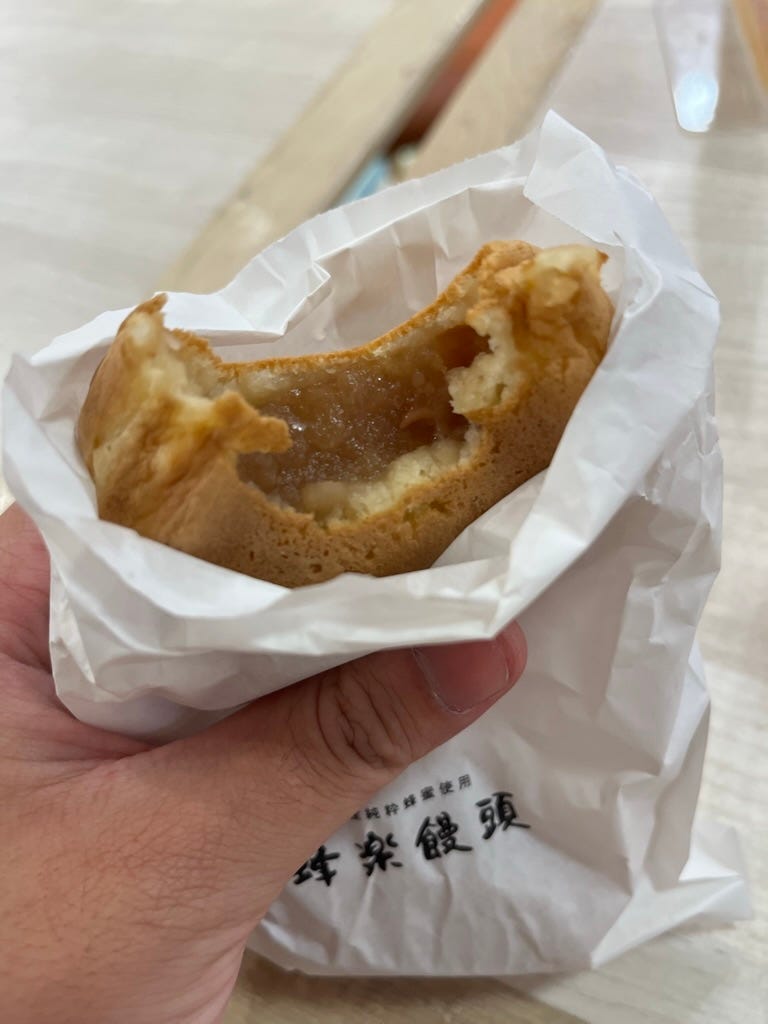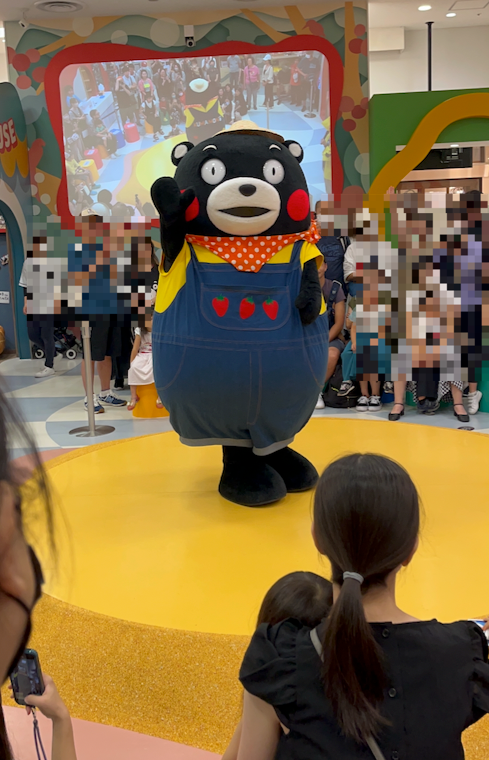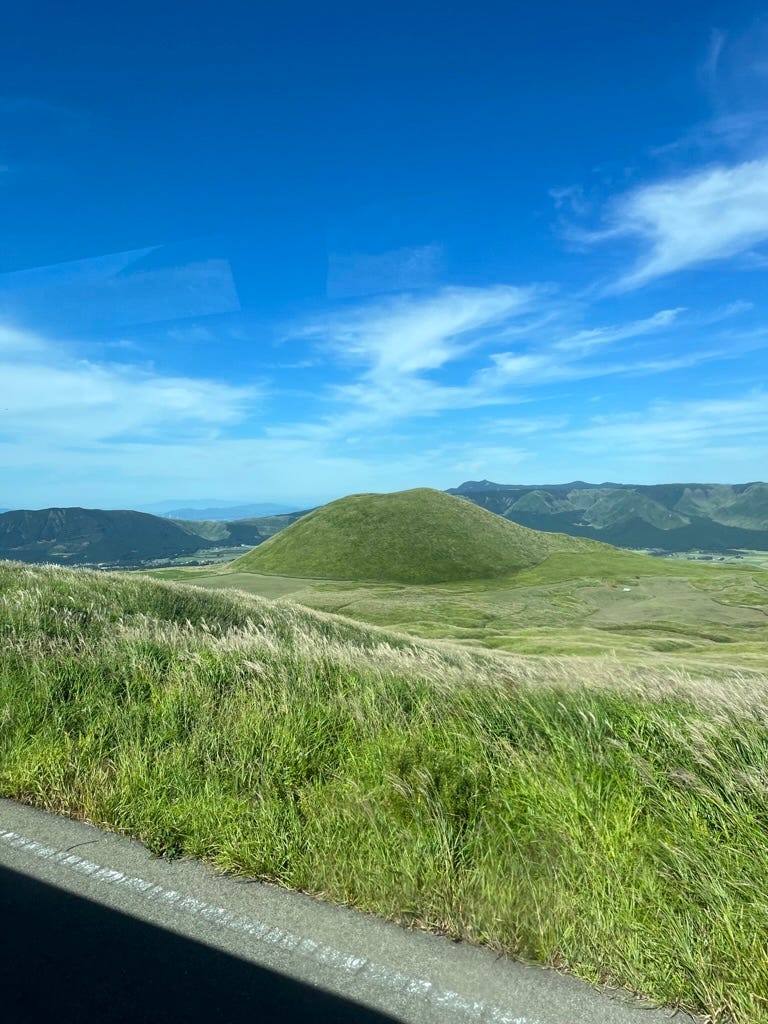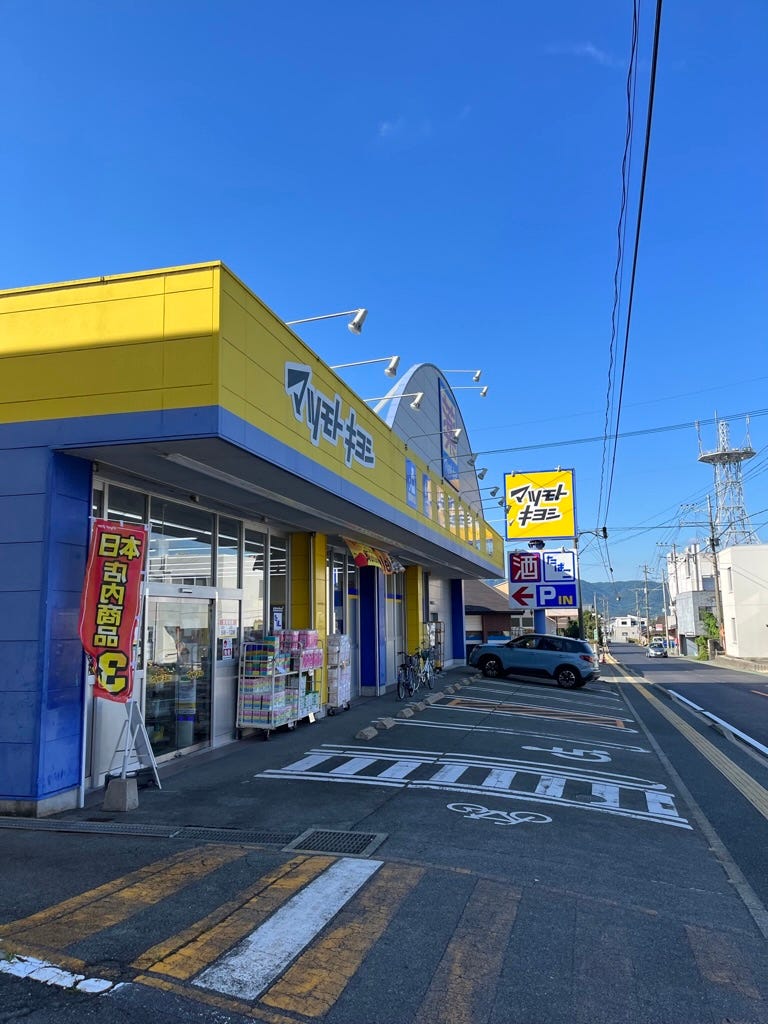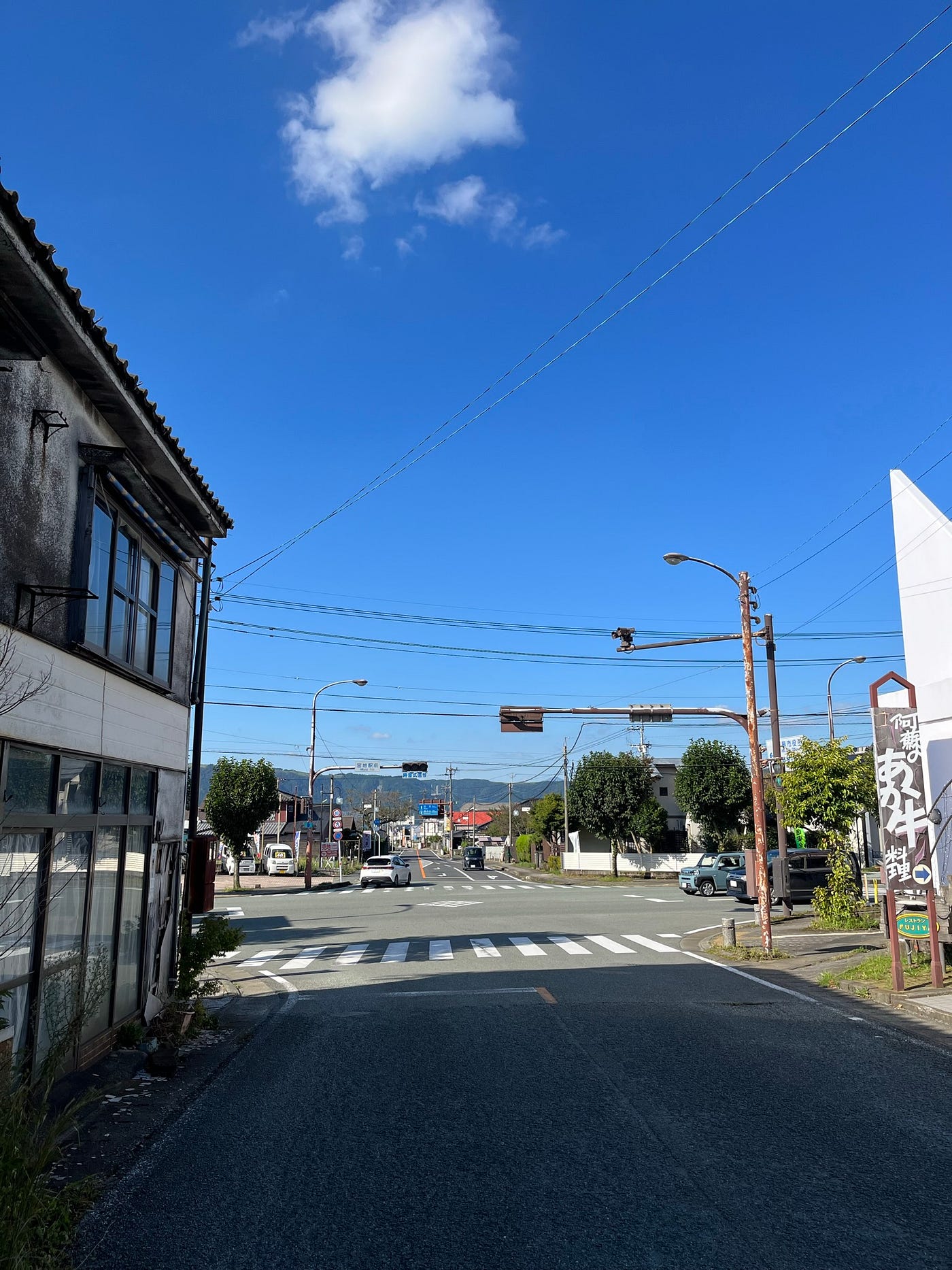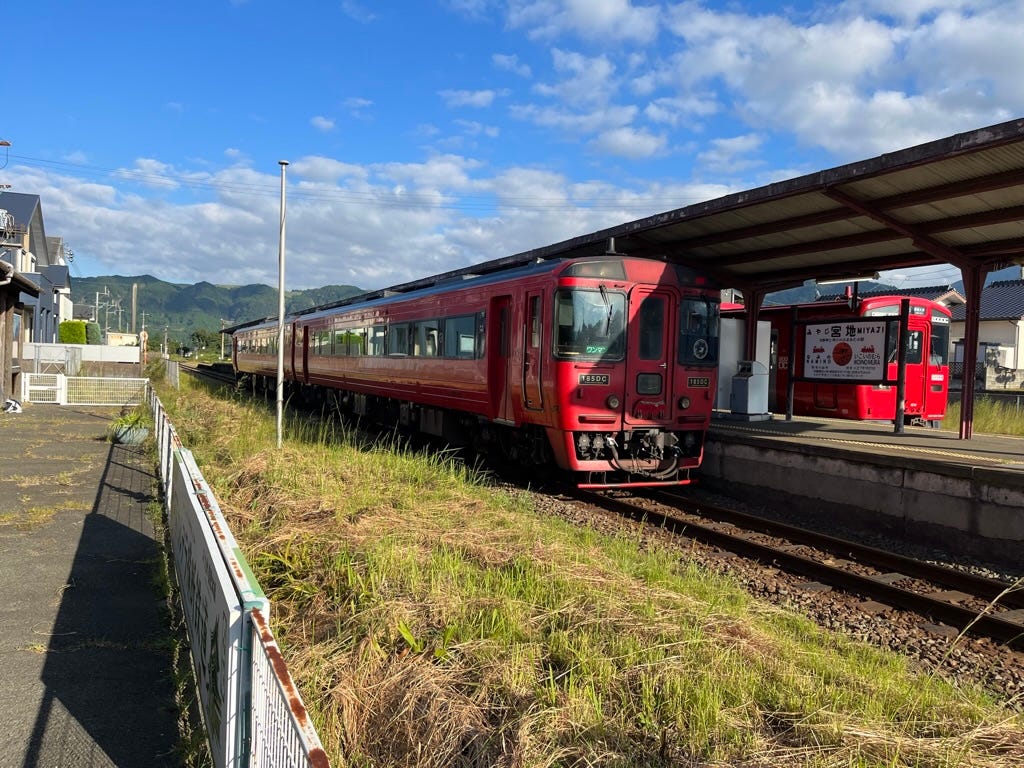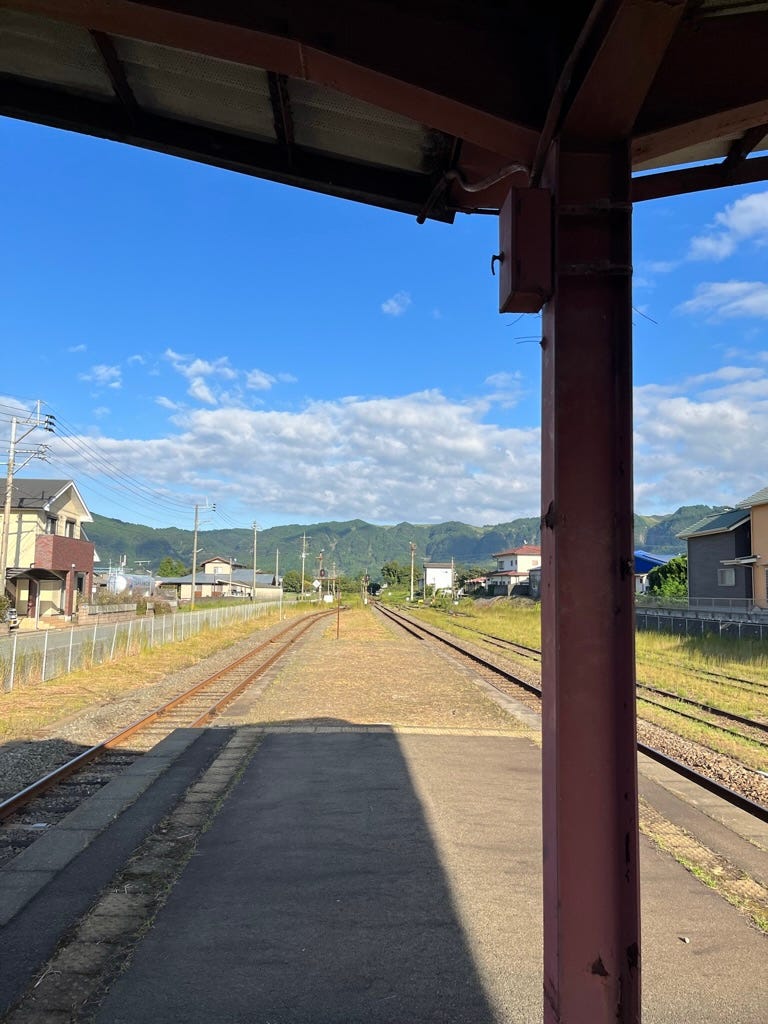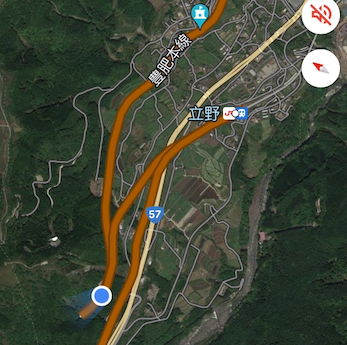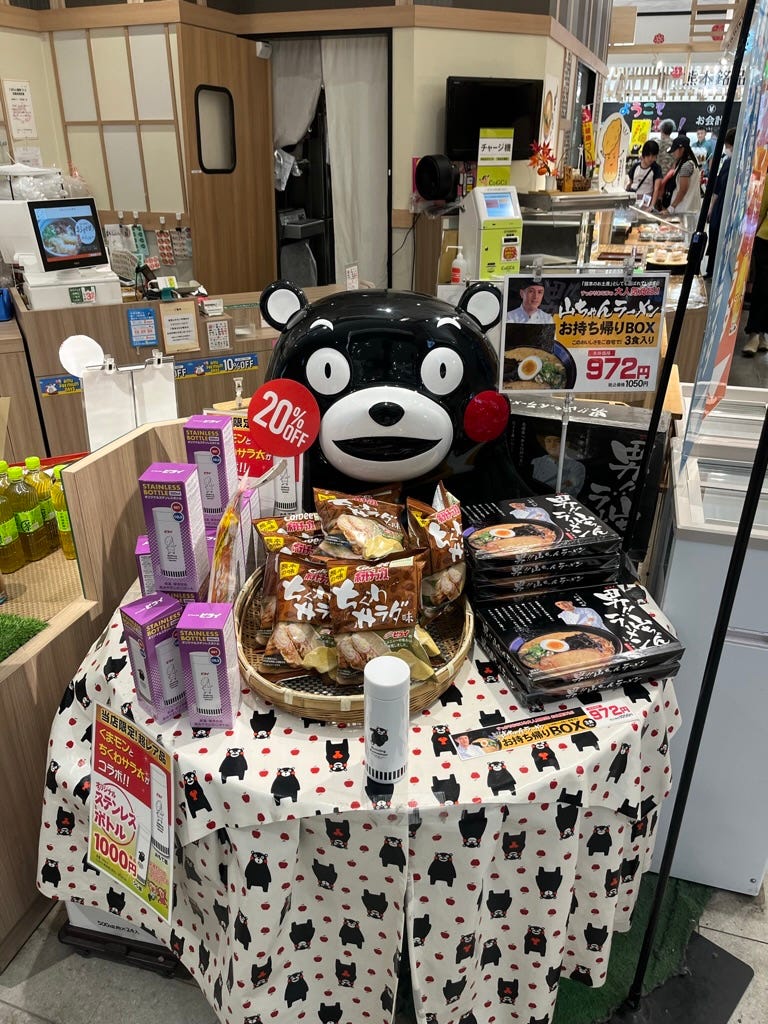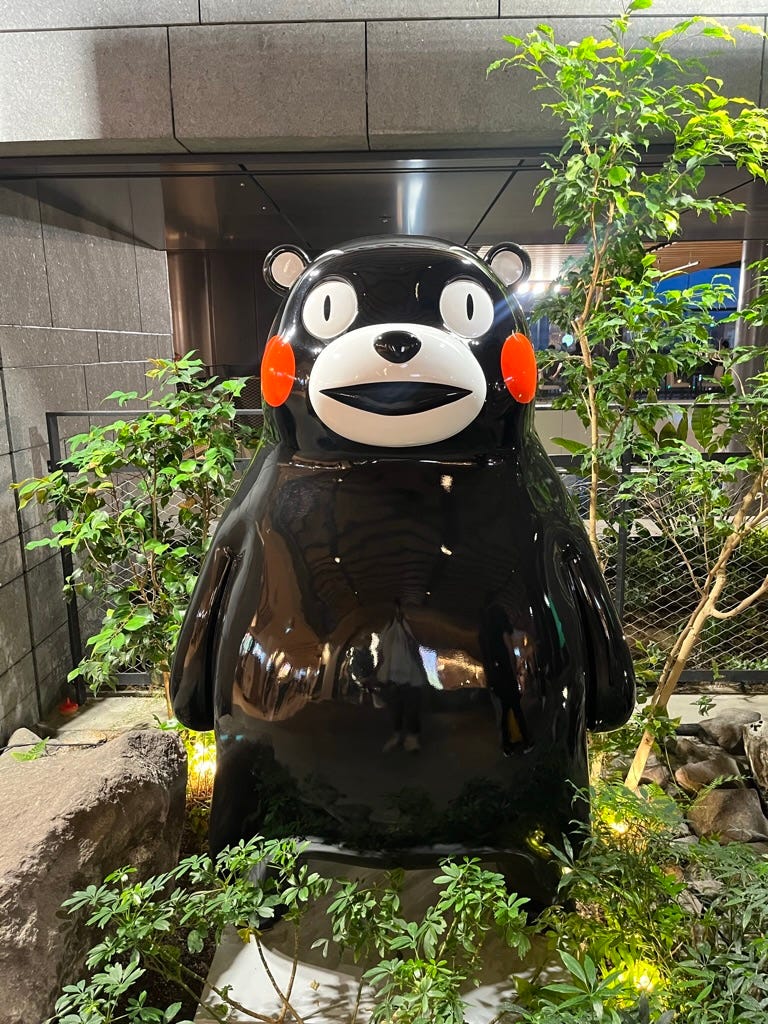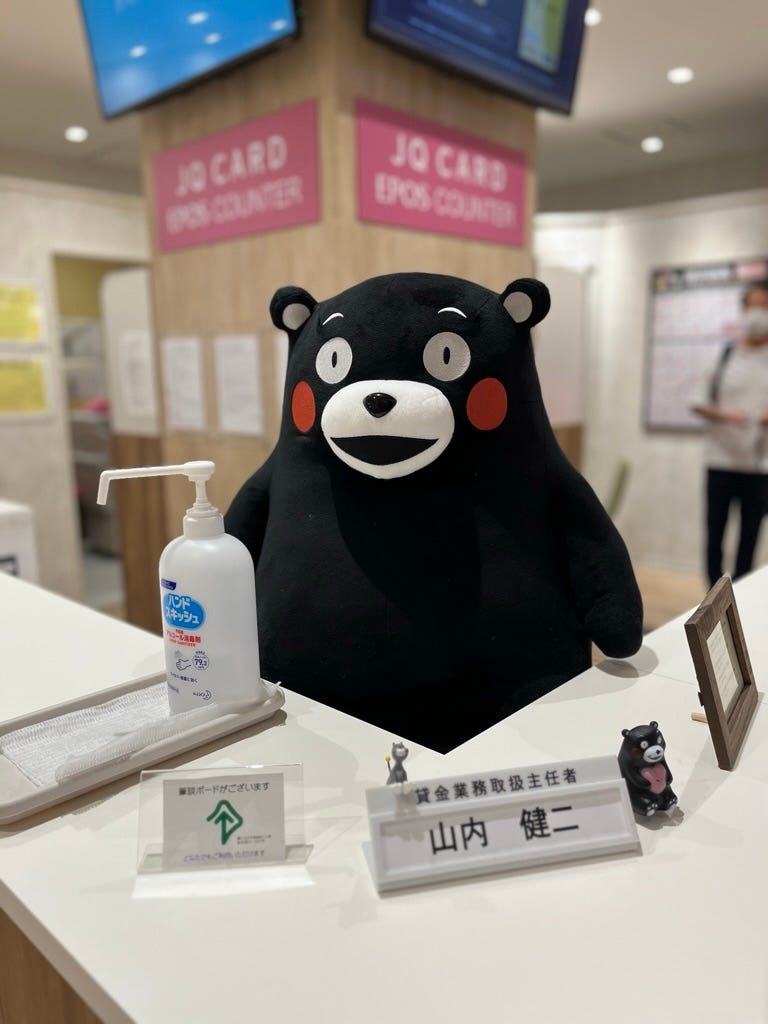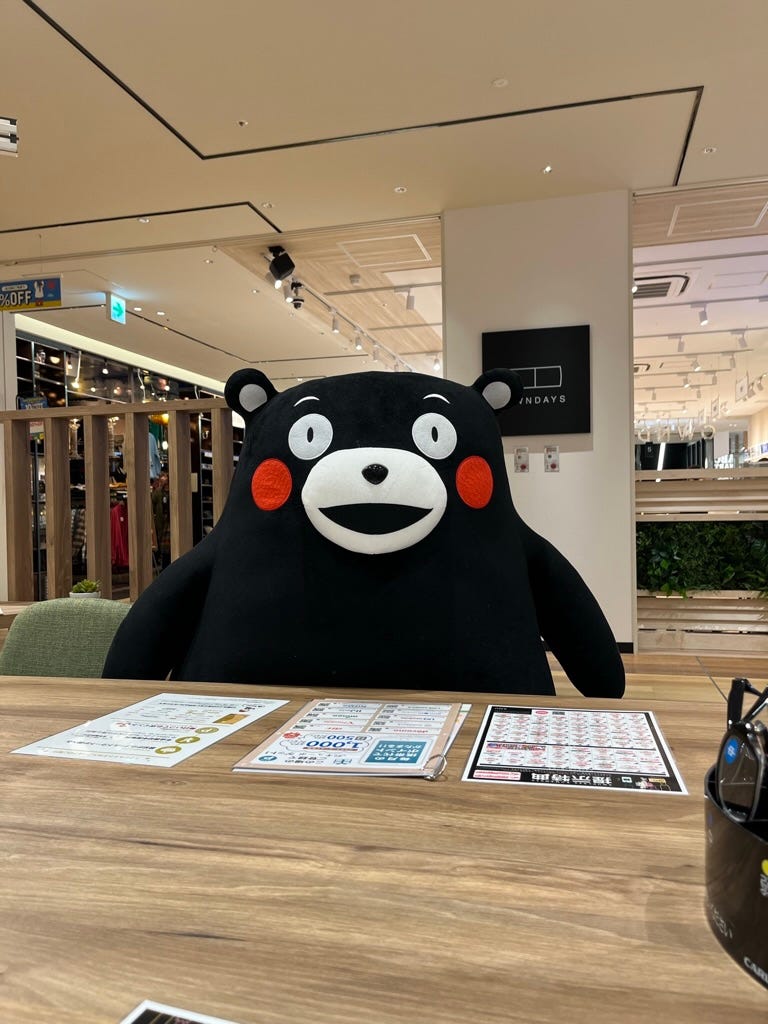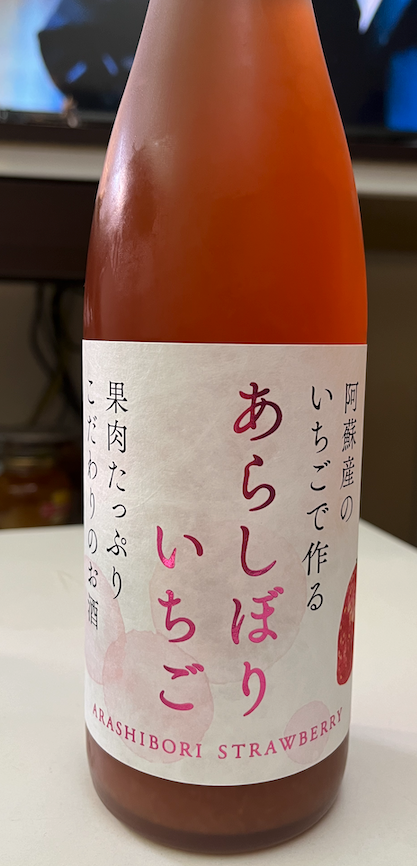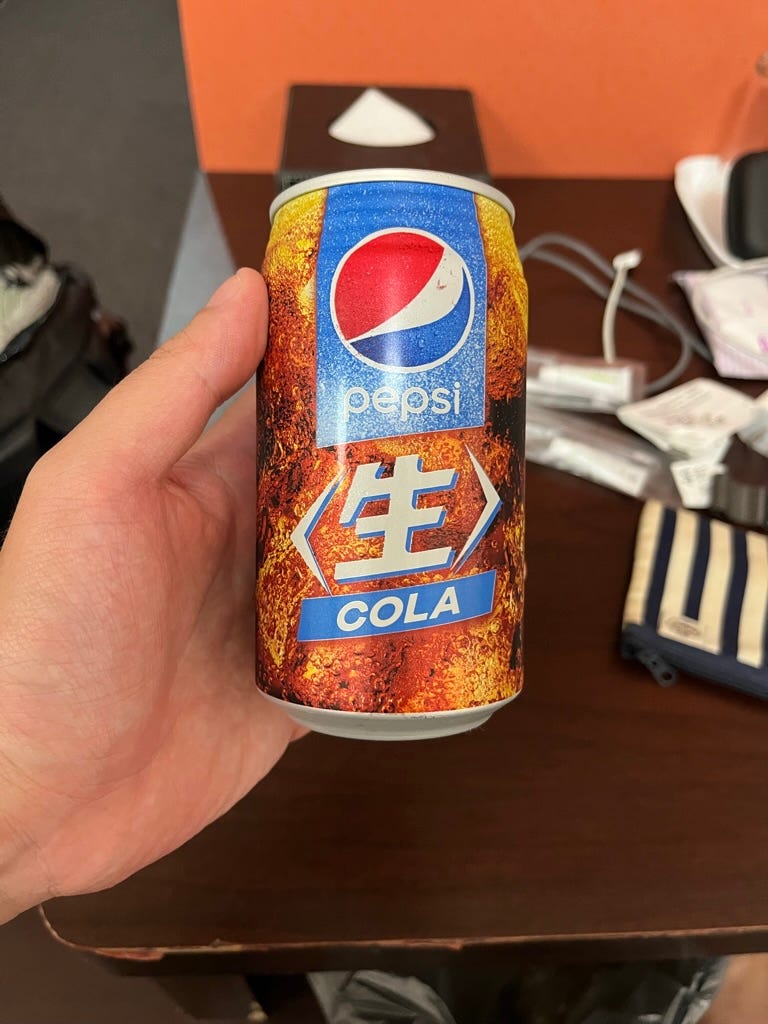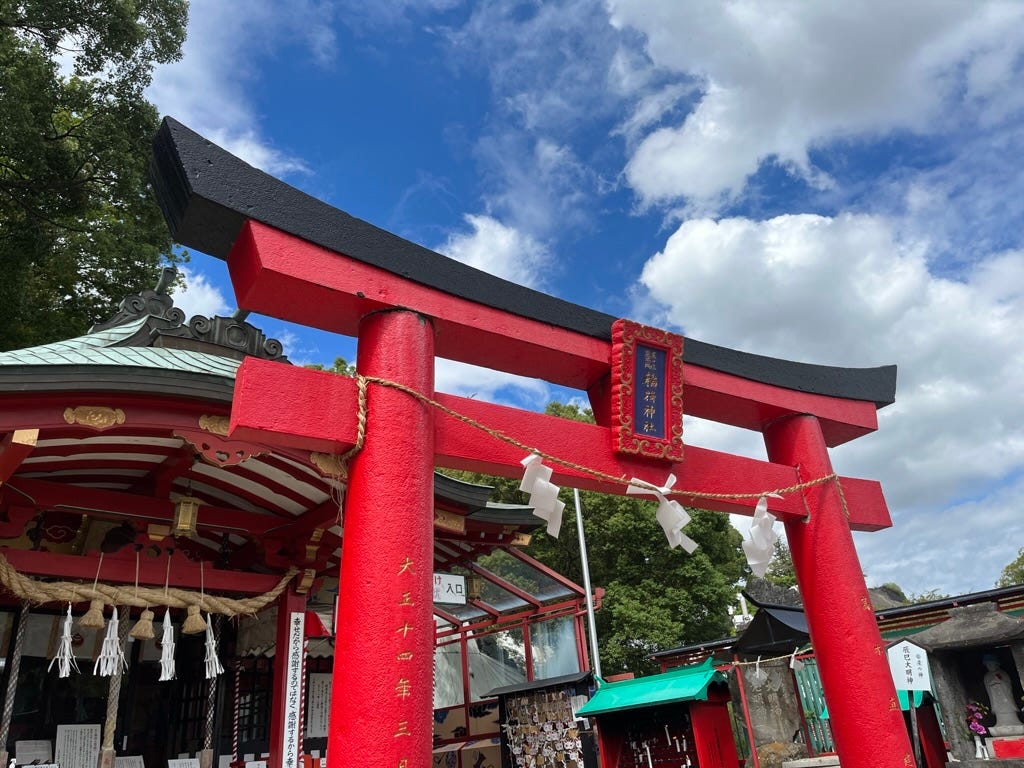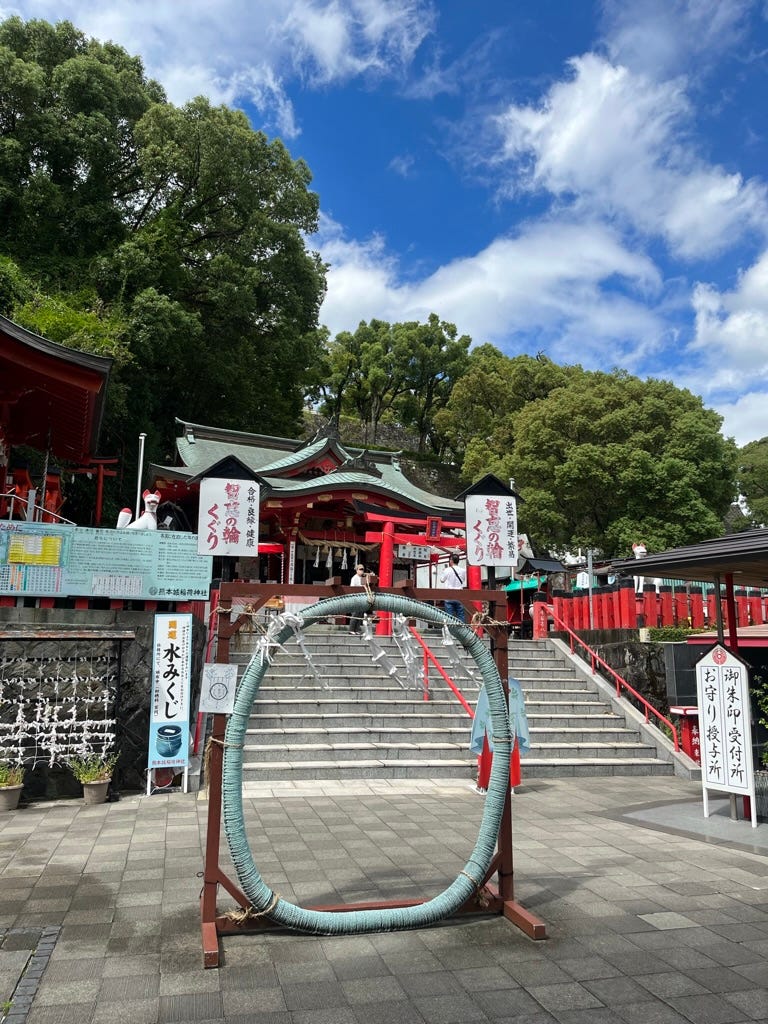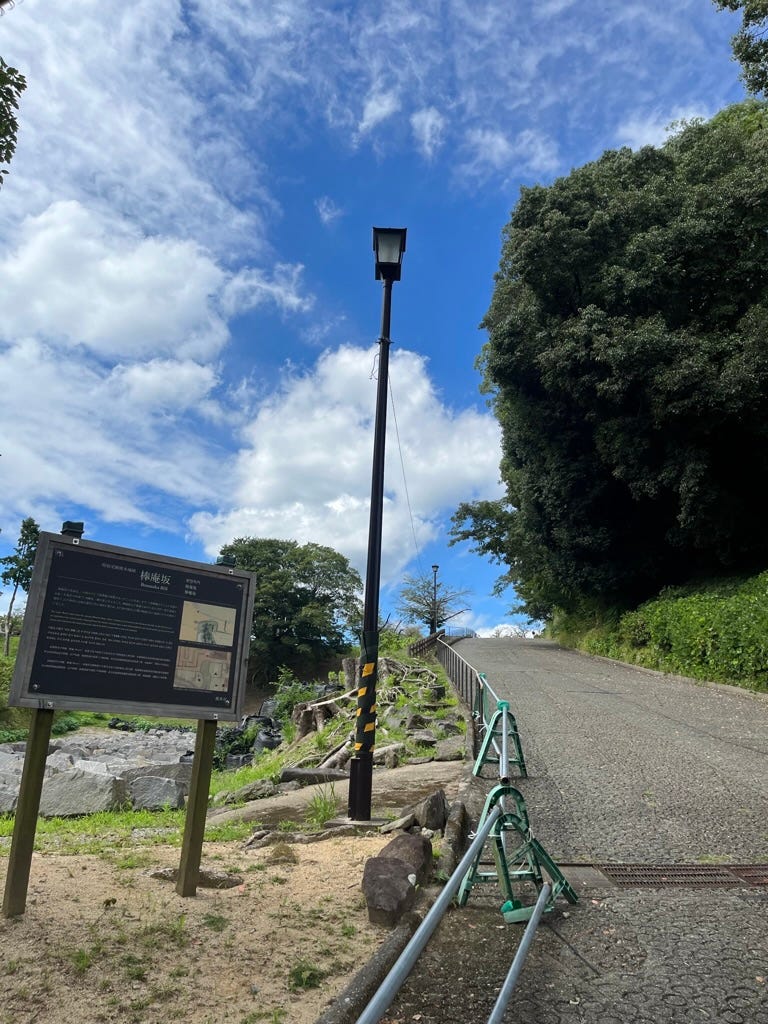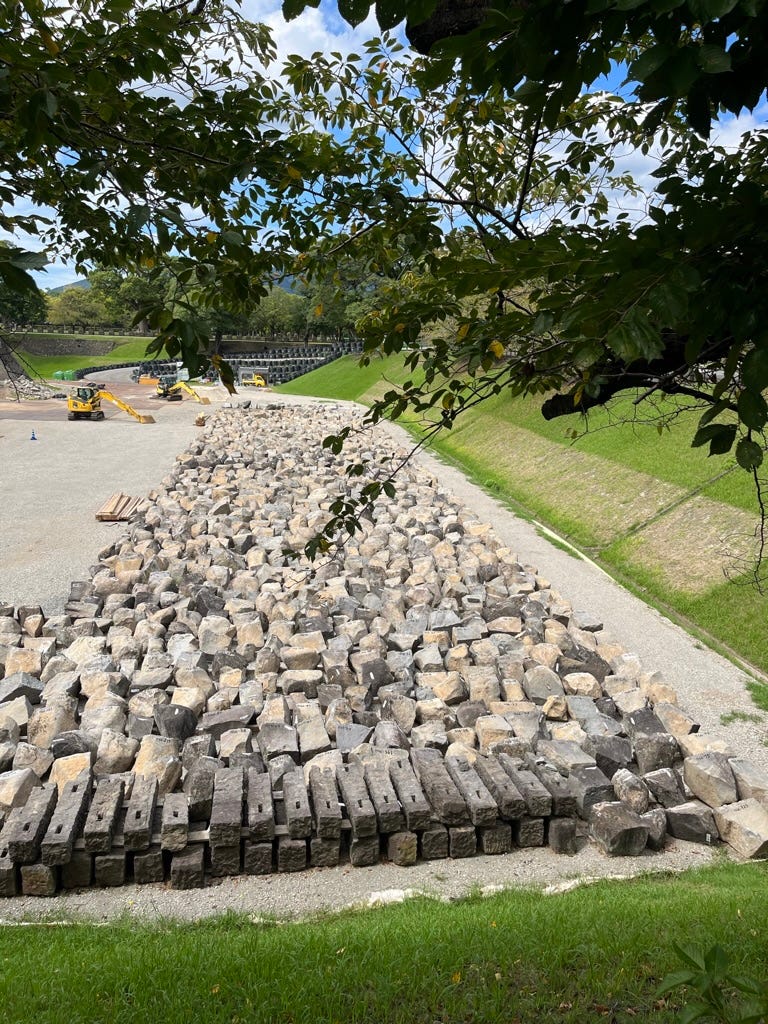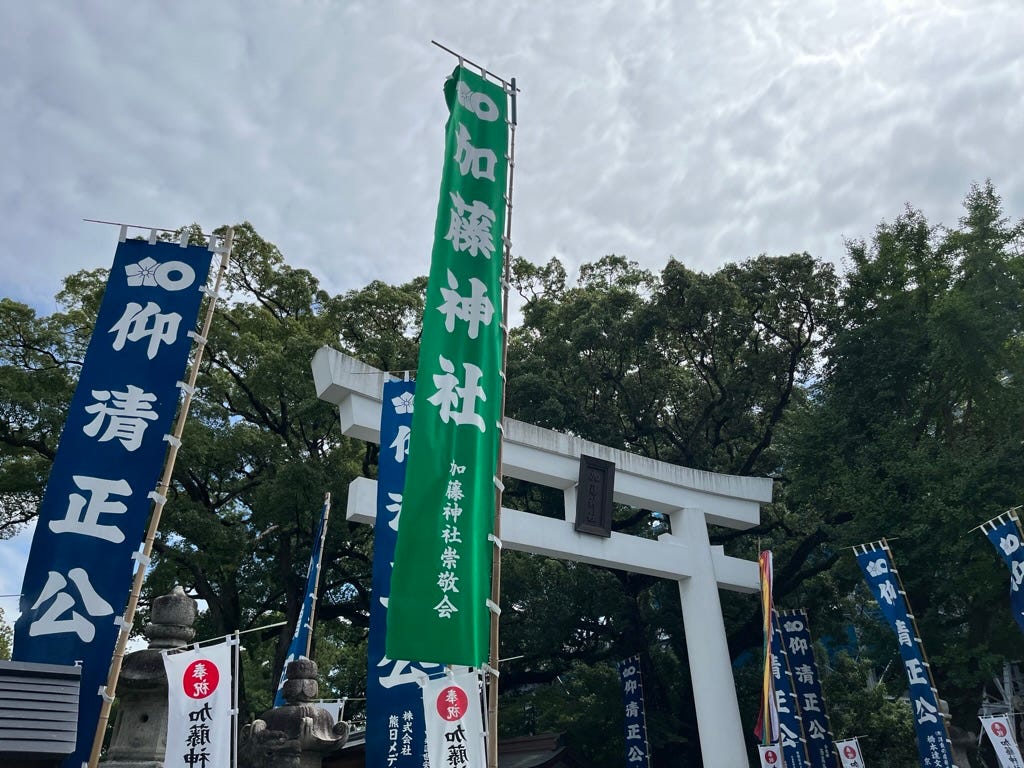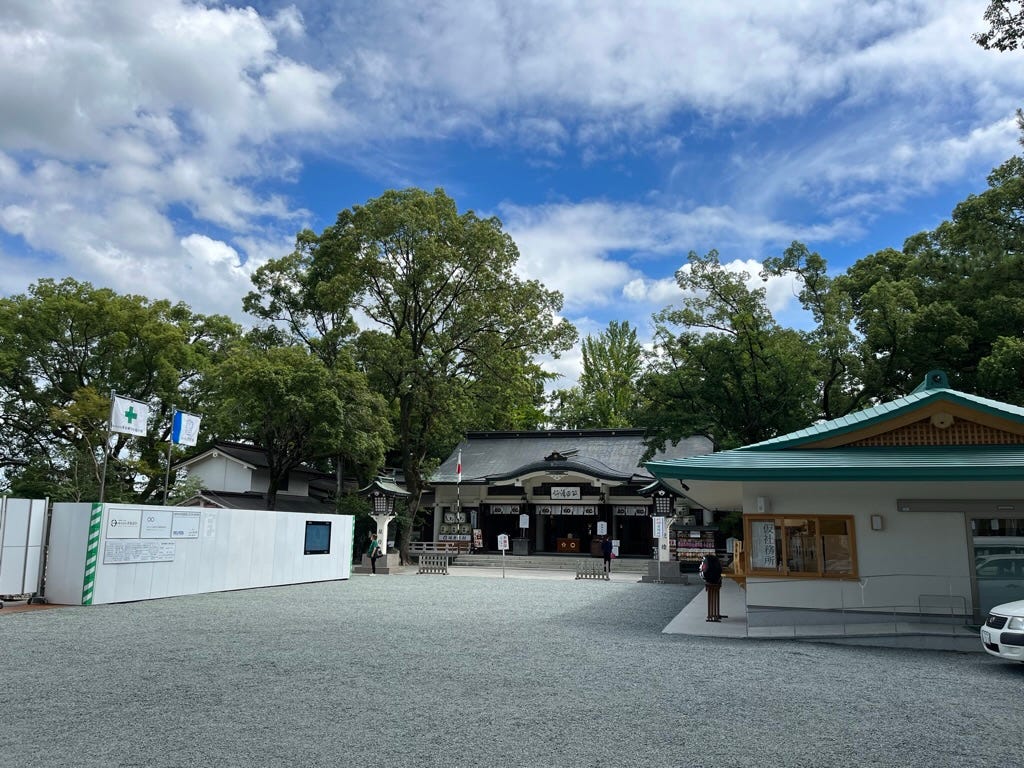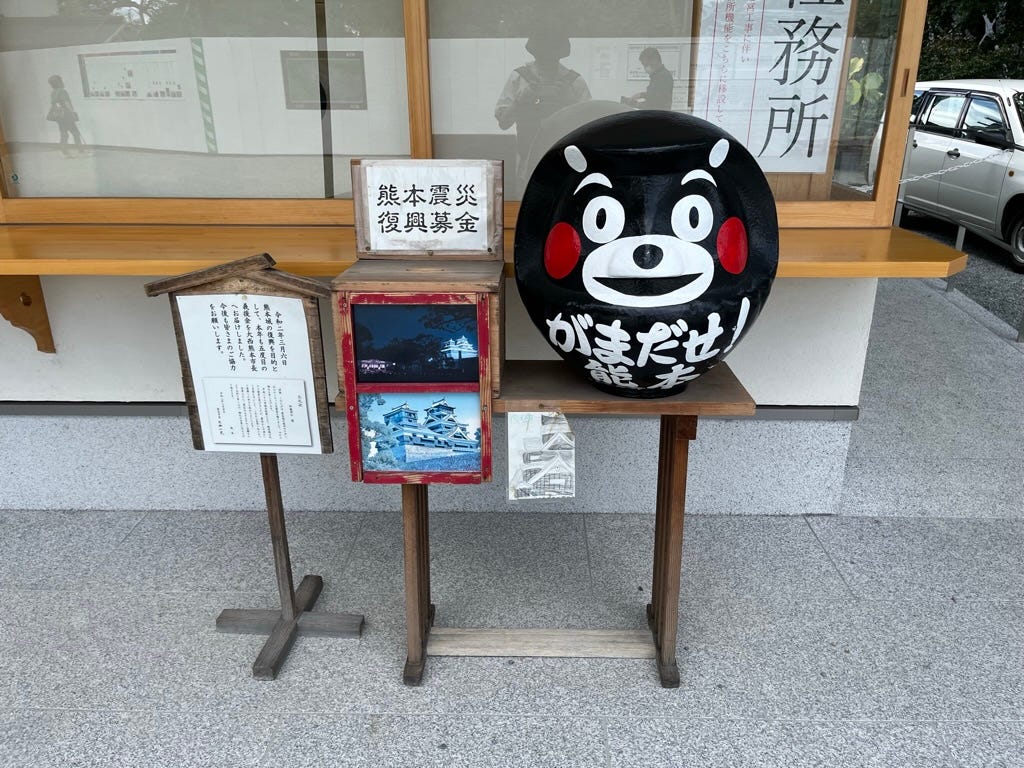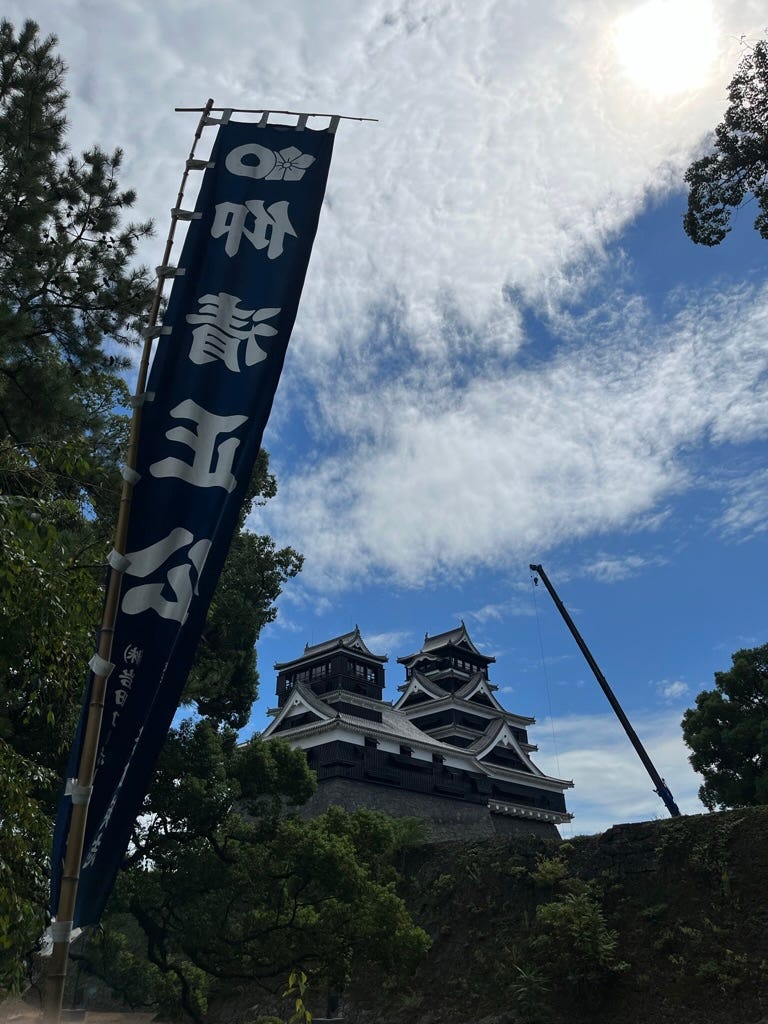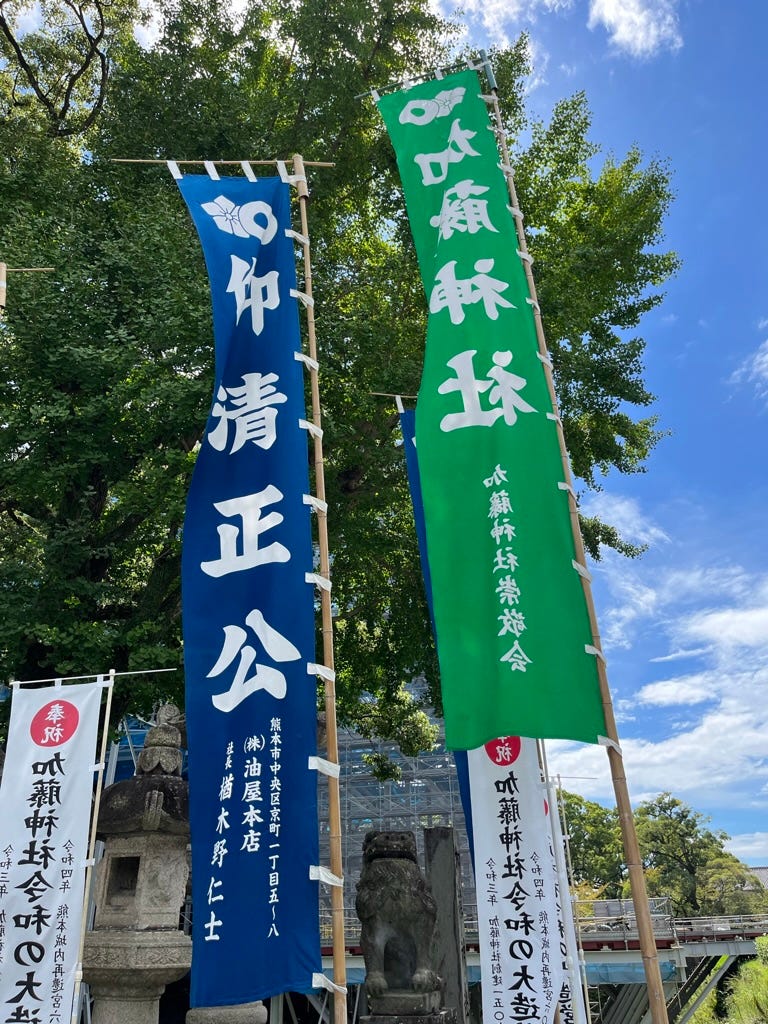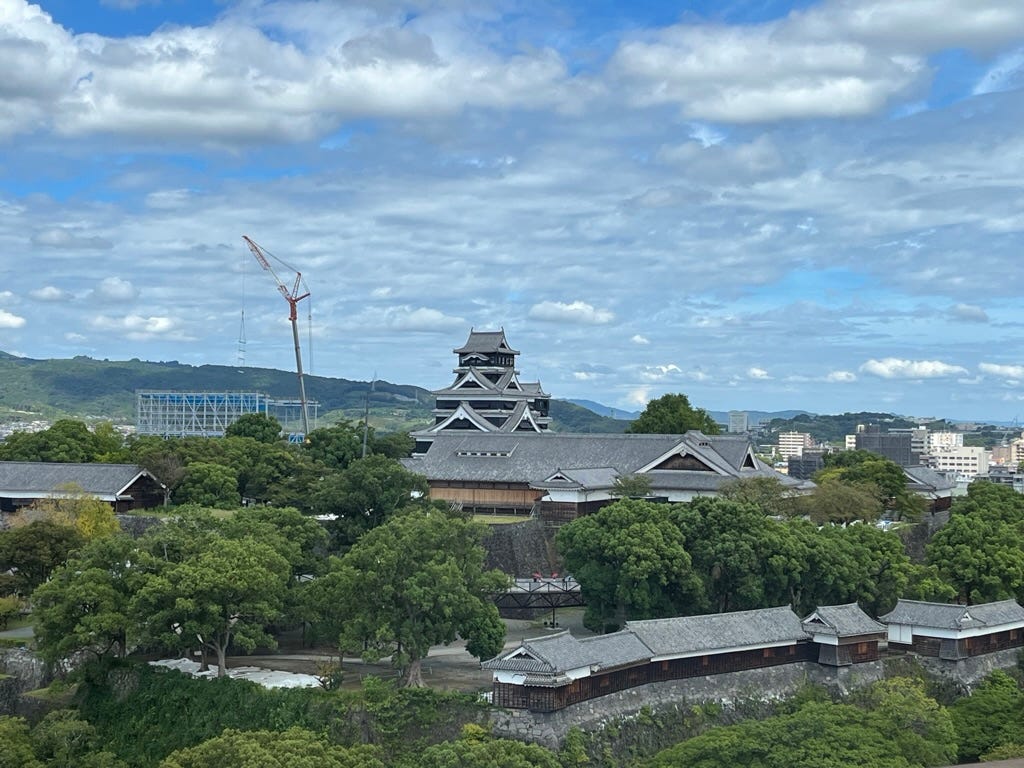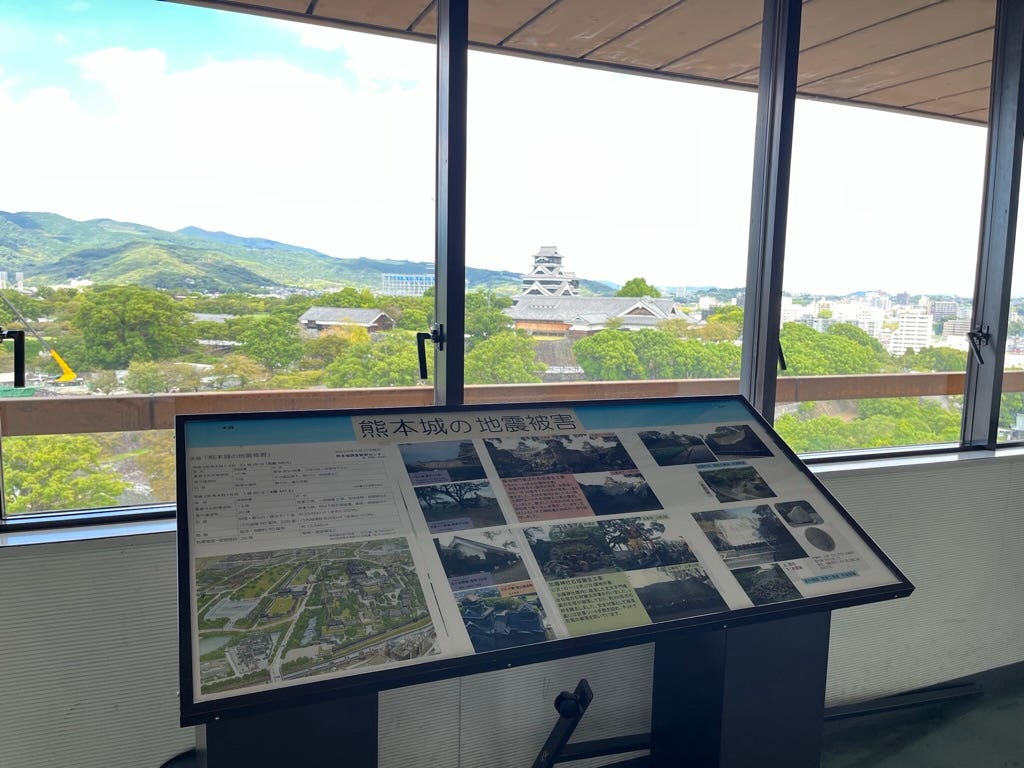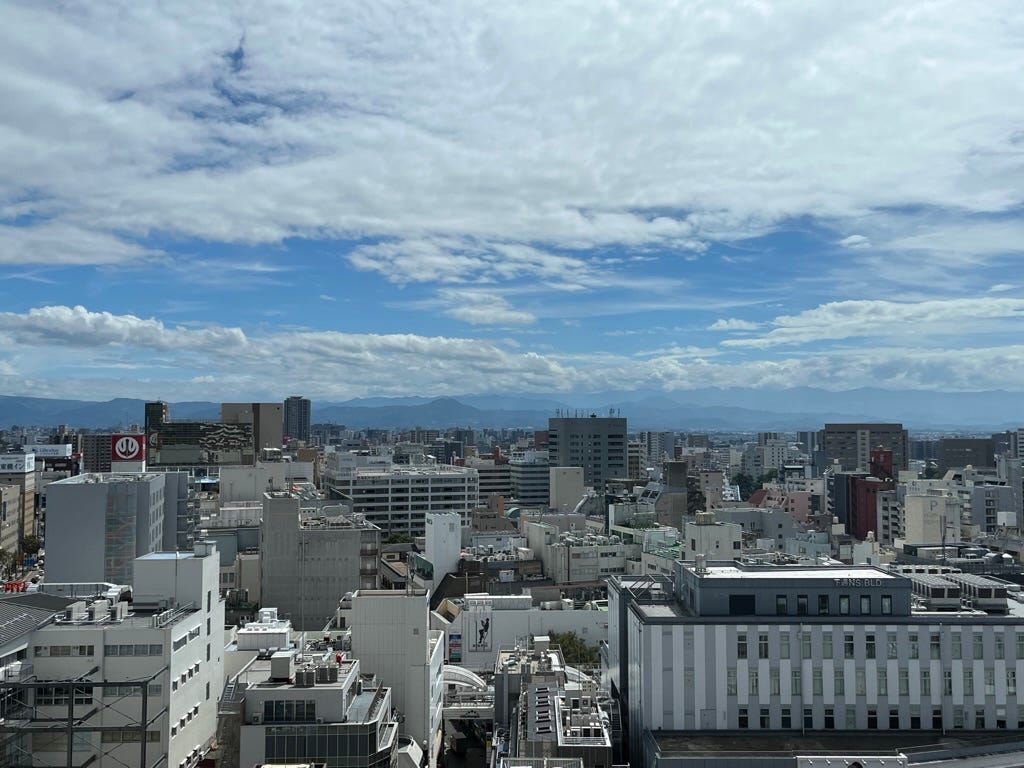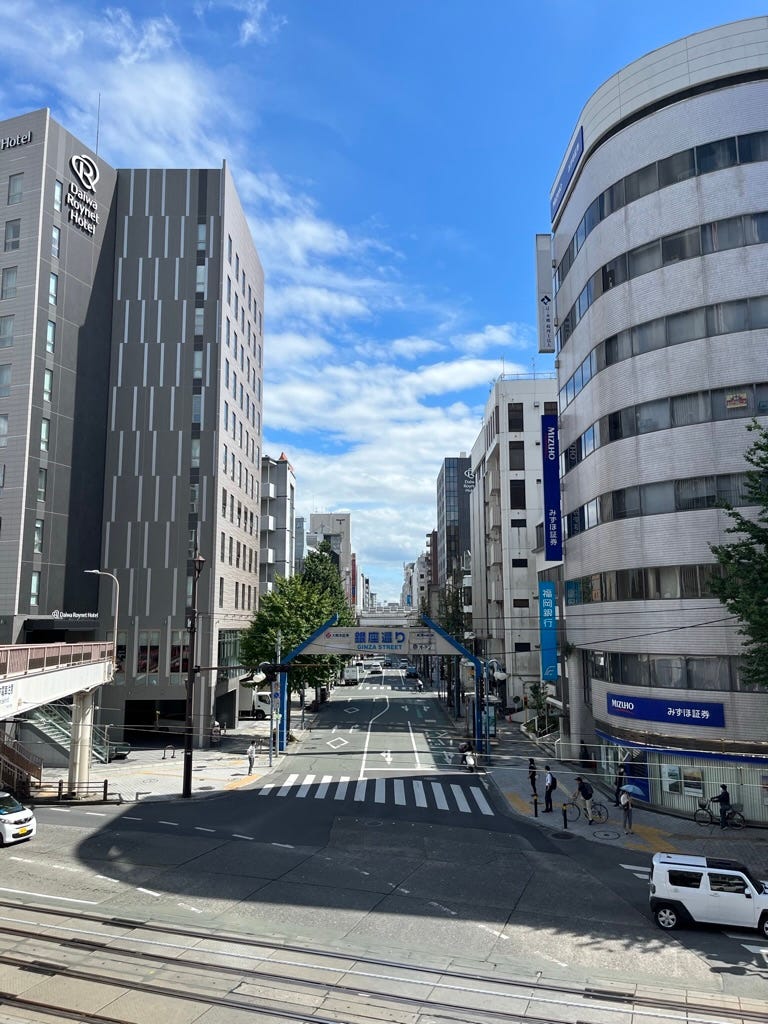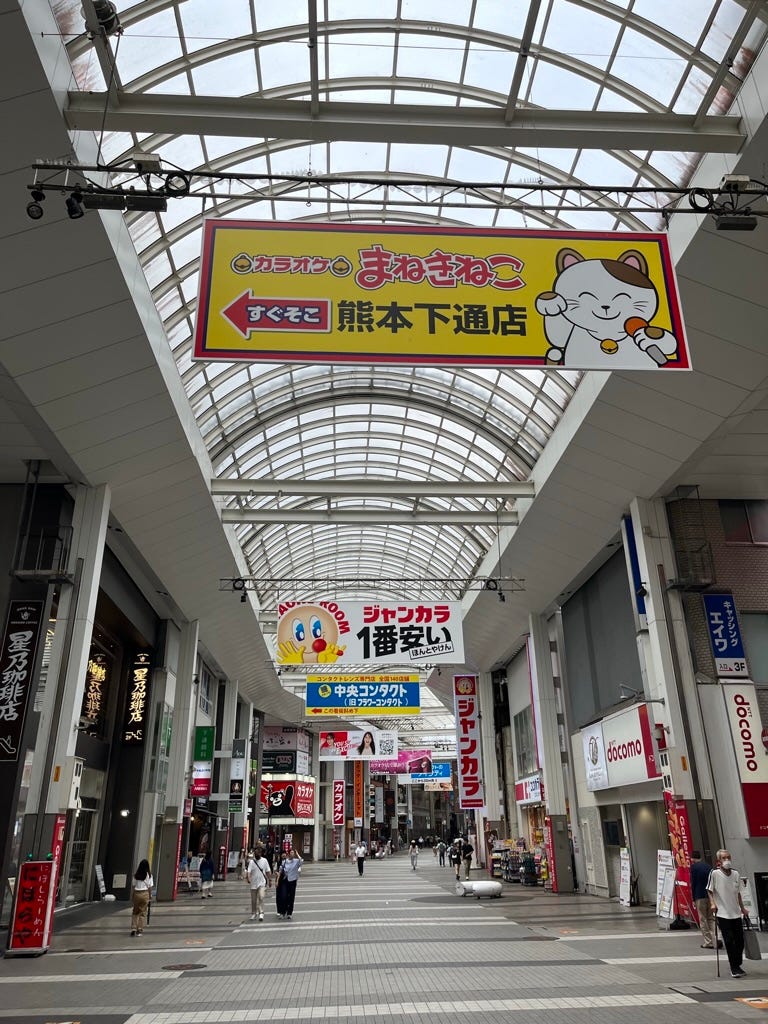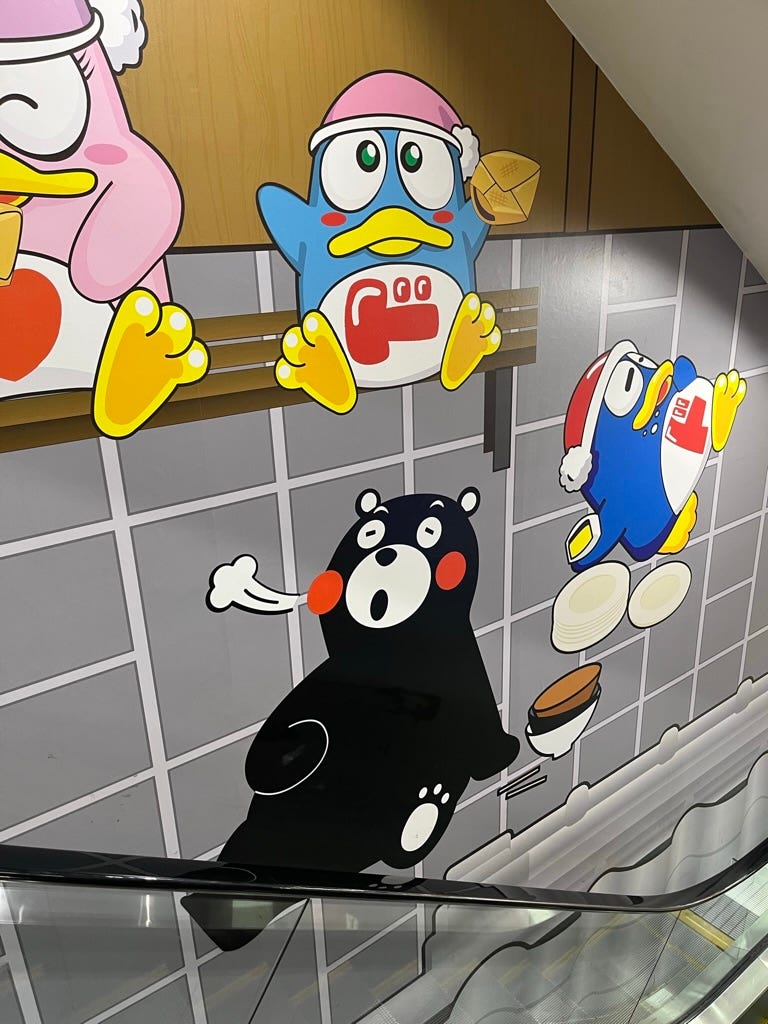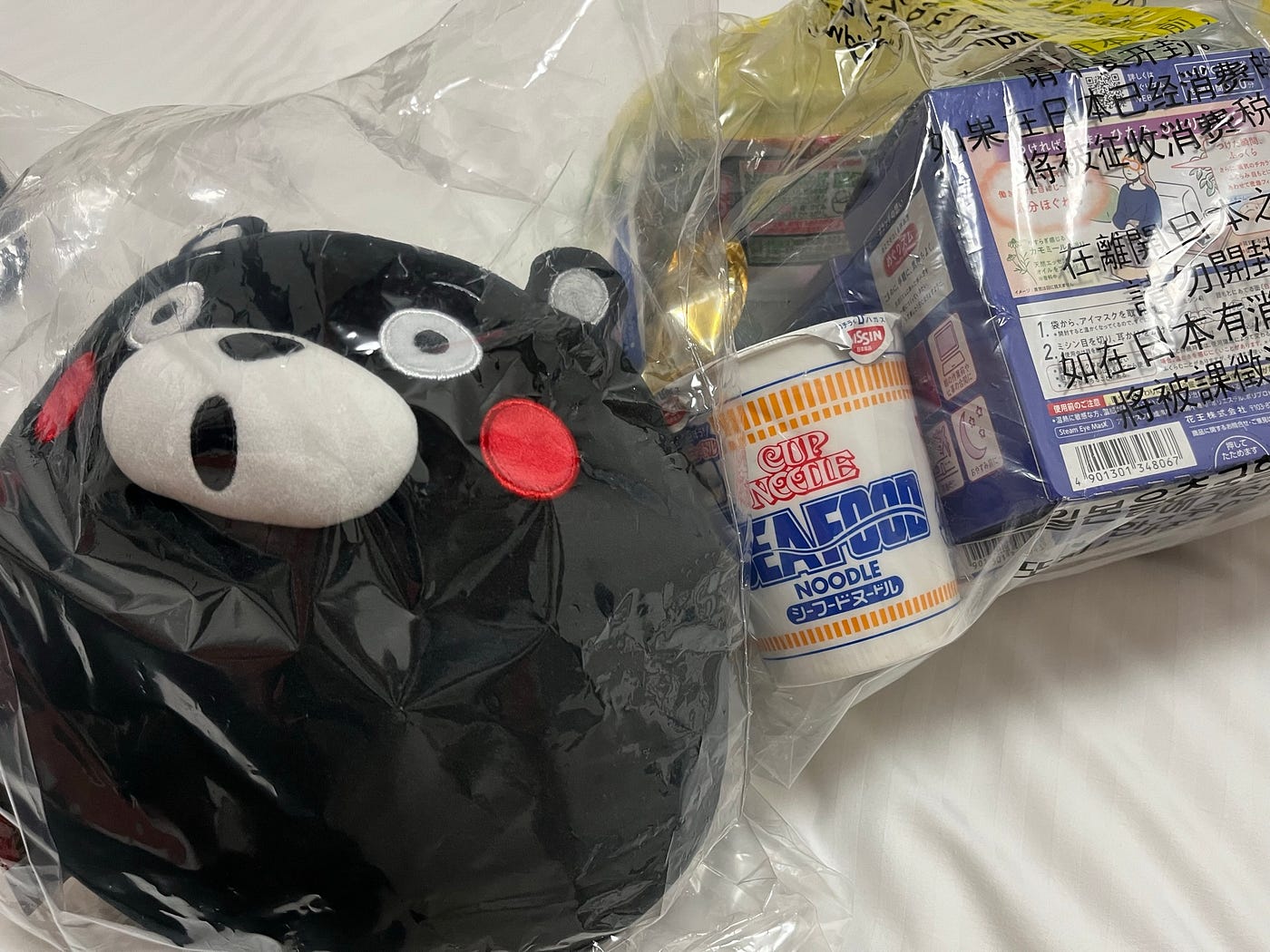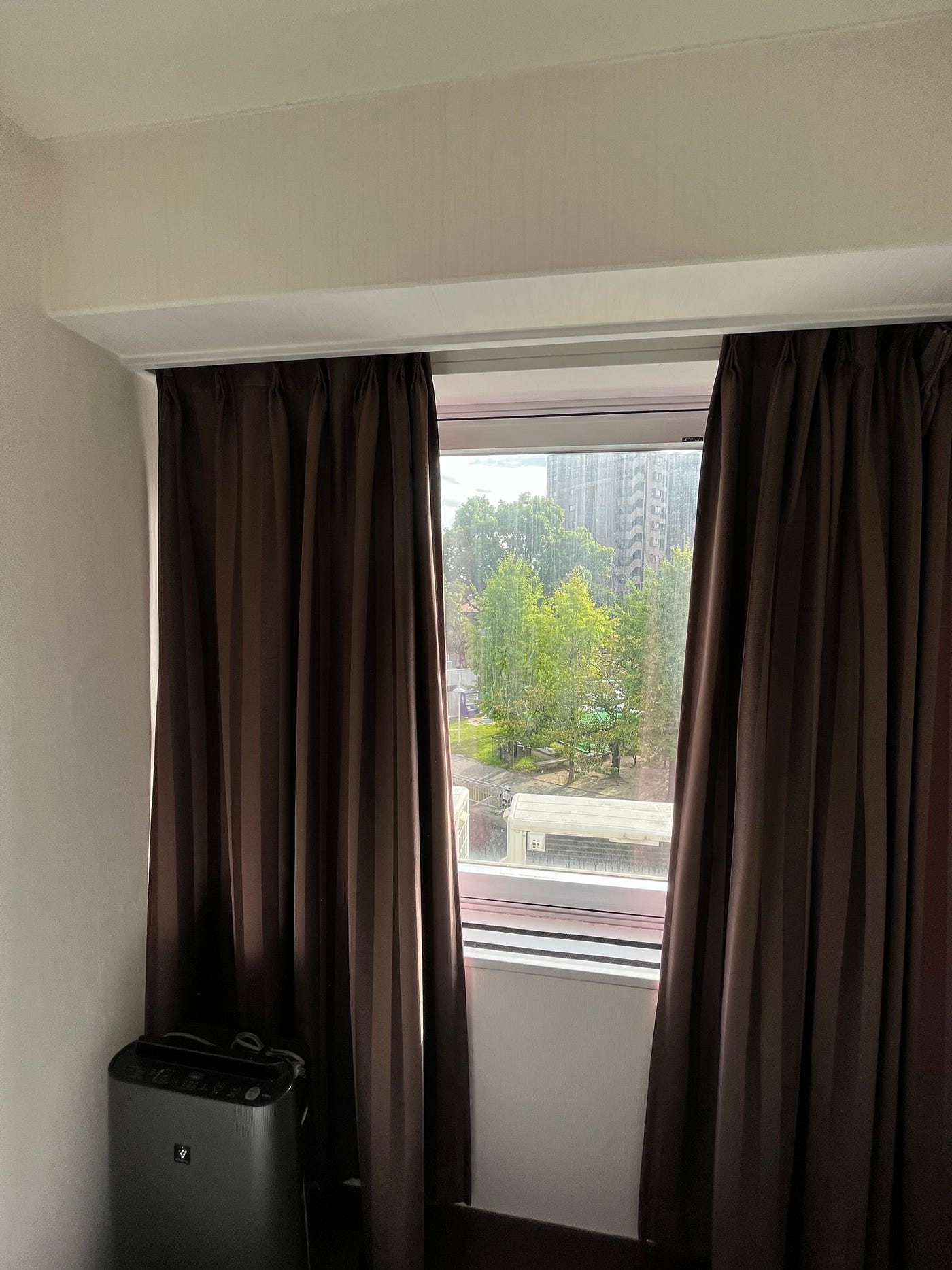⚠️⚠️⚠️ This site is deprecated. Click here to visit the new site and content. ⚠️⚠️⚠️
[Travelogue] 2023 Kyushu 10-Day Solo Trip
Record of a 10-day solo trip to Fukuoka, Nagasaki, and Kumamoto in Kyushu
[2024 Update] Second Visit to Kyushu
- Visited Kyushu for the second time in June 2024 (9 days + 2 days in Korea) Boarded the New Camellia cruise ship from Busan, Korea to Hakata, Japan, and explored Yufuin, Oita, Fukuoka, Shimonoseki, Ijima, and Sasebo
Preface
At the end of August, I officially left Pinkoi after nearly 3 years. I had been contemplating leaving for a while, and earlier in the year, I decided to take a break from work, explore outside, and reassess the situation upon my return. So, I embarked on trips with friends to “[Travelogue] 2023 Kansai & 🇯🇵 First Landing” and with colleagues to “[Travelogue] 2023 Tokyo & 🇯🇵 Second Landing.” However, upon returning, I felt a stronger urge to break free, coinciding with the completion of my tasks. I gathered my courage to step out of my comfort zone, seeking the next challenge!
The “[Travelogue] Flash Visit to Nagoya on 9/11” was purely accidental and felt more like a march than a relaxing trip.
Taking advantage of a rare opportunity, I decided to explore Japan once again. The original plan was to travel with a friend who was also on a break to 🇰🇷 Busan ➡️ 🇯🇵 Fukuoka ➡️ 🇯🇵 Kumamoto; traveling from Korea to Kumamoto, with a stop in Fukuoka where we could board the New Camellia cruise ship, arriving in Fukuoka after a 12-hour overnight journey, covering both commuting and accommodation.
However, my friend found a job in September and I couldn’t find a new travel companion at the moment. Not keen on extensive travel alone, I decided to forgo the 🇰🇷 Busan ➡️ 🇯🇵 Fukuoka segment and instead opted for the 🇯🇵 Fukuoka ➡️ 🇯🇵 Kumamoto route.
With a scattered schedule starting in October and plans to begin job hunting, I scheduled my departure at the end of September (9/17–9/26).
Summary / Retro
I’ll start with the summary and reflection. I came across a quote in a travel group that resonated with me: “Traveling is a continuous payment of tuition (time or money) for learning. The more experience you gain, the fewer pitfalls you’ll encounter.”
👍
- Coca-Cola, peach water, FamilyMart’s fruit juice, and Akia plum wine are delicious!
- Japanese professional baseball is worth watching! When buying tickets, opt for whole rows or aisle seats, and choose the cheaper options.
- The JR Pass may not always save money, but it definitely did in Kyushu! Saved at least over 1,000 TWD.
- Solo travel led to many interesting encounters; for example, helping a Japanese family get souvenirs from Mihara City, a kind foreign sister volunteering to take photos, a Taiwanese family on a boat tour, a TSMC employee completing the Aso journey together, and helping another family take photos in Kumamoto, only to meet them again at the airport and take more photos… and so on.
- Kumamon, the mascot of Kumamoto, can be found all over Kyushu (not just in Kumamoto).
- Kyushu (not just Kumamoto) is spacious with few people, allowing for easy access to renowned eateries and attractions without long queues, providing a comfortable experience.
- Made slight progress in Japanese, understanding numbers (though still double-checking with Google Translate), understanding phrases like “plastic bag needed,” “checkout,” “this,” “above,” “cash,” “credit card,” and imperative sentences for duty-free shopping (“XXX お願いします”).
- Completed writing the travelogue!
👎
- Accommodation this time was disappointing: When booking hotels in Japan, it’s essential to check reviews, especially negative ones, to assess whether you can tolerate any issues. Walk around the area on Street View to gauge the convenience.
- Spent too many days in Kumamoto this time; 2 days would have sufficed, allowing for a visit to Oita on other days. Moreover, Fukuoka is much closer to Kumamoto than Nagasaki: In the past, I would secure accommodation before planning sightseeing, given Kyushu’s vast expanse; it’s better to decide on destinations first and then arrange accommodation to access more attractions.
- Fukuoka offers much better accommodation options, prices, and quality compared to Kumamoto.
- Missed the festival in Yufuin this time (I went to Nagasaki that day): In the future, I’ll check for festival dates before planning trips; everyone recommends attending festivals, so it’s a must-do.
- The JR Pass allows for Shinkansen travel, but not on the “Nozomi” or “Mizuho” trains; additional tickets are required for these services.
- Solo travel with a language barrier can be quite lonely, often leading to introspection and solitude.
- Accommodation tends to be pricier for solo travelers.
- Spent too much time rushing through attractions this time; should slow down, savor the moment, and explore local cuisine leisurely, especially missing out on renowned eateries in Japan.
- The sun in Kyushu during this season is still scorching, so proper sun protection is necessary.
- Northern Nagasaki is mediocre (Dutch and Chinatown), while southern Nagasaki stands out more for its night views.
KKday Promotion
[Japan JR PASS Kyushu Area Railway Pass North Kyushu & South Kyushu & All Kyushu E-Ticket](https://www.kkday.com/en/product/3494-jr-kyushu-rail-pass?cid=19365&ud1=d78e0b15a08a){:target=”_blank”} [Nagasaki, Japan Huis Ten Bosch Ticket](https://www.kkday.com/en/product/3988-japan-nagasaki-huis-ten-bosch-ticket?cid=19365&ud1=d78e0b15a08a){:target=”_blank”} [Nagasaki Day Tour Glover Garden, Oura Tenshudo Church & Nagasaki Atomic Bomb Museum, Peace Park & Inasayama Night View (One of the Three Best Night Views in the World/Including Round-Trip Cable Car) Optional Huis Ten Bosch Fireworks Package Departing from Fukuoka/Chinese Group](https://www.kkday.com/en/product/152195-nagasaki-tour-saga-yutoku-inari-shrine-fukuoka-japan?cid=19365&ud1=d78e0b15a08a){:target=”_blank”} - One-stop shopping for Kyushu attractions, tickets, and experiences: “One Day Kumamoto, One Day Takachiho, One Day Aso/Kusasenri, One Day Miyazaki Itinerary, Fukuoka teamLab, Fukuoka Tower, Yanagawa Dazaifu River Cruise Package, Taipei Fukuoka Flight, Flight Plus Hotel”
Preparation
Travel
Initially considered entering Fukuoka and leaving Fukuoka, going back and forth to Kumamoto for one or two days (later proved to be correct XD, not many attractions in Kumamoto, don’t need to stay too long); found that China Airlines had a flight from Fukuoka to Kumamoto for only $1,000, so decided to take this flight.
Because there was plenty of time, I chose the most luxurious option, departing at noon and returning at noon, totaling 10 days including the flight time.
- Outbound: 9/17 CI 116 16:40 TPE -> 20:00 FUK
- Return: 9/26 CI 2195 (Newly Launched on 9/26) 12:30 KMJ -> 13:34 TPE
Price: $10,048
Due to the vast area of Kyushu, this time I bought the JR Pass Kyushu Rail Pass (5 days), thinking it would be worth it no matter how much I travel.
Accommodation (9 nights)
When arranging, without much consideration or research, I thought I hadn’t been to Fukuoka or Kumamoto; so I decided to split the stay into 5 days in Fukuoka and 4 days in Kumamoto.
Fukuoka 5 nights - Fukuoka Tenjin Benikea Carlton Hotel (Benikea Calton Hotel Fukuoka Tenjin)
- Price: $7,583, $1,516/night
- Transportation: Departing from Hakata Station, you can take the Nanakuma Line subway to Watanabe-dori Station or take a bus and walk 5 minutes to reach.
Kumamoto 4 nights - Green Rich Hotel Suizenji (Green Rich Hotel Suizenji)
JR Kumamoto -> Hotel
Hotel -> Kumamoto Airport
It’s difficult to find accommodation in Kumamoto (maybe because they are all booked by TSMC for business trips), with limited choices, higher prices compared to Fukuoka, and old facilities; finally found this relatively cheap hotel.
- Price: $8,157, $2,039/night
- Transportation: After exiting JR Kumamoto Station, transfer to the Houhi Main Line and then take the tram (get off at the City Sports Center Station). The transportation back to the airport is also very convenient, with direct airport shuttle buses available as soon as you exit.
Once the hotel is booked, you can proceed to fill out the online immigration application.
Joy
Original plan:
- 9/17 21:00 Arrive in Fukuoka, 22:00 Arrive at the hotel, maybe explore the street food stalls
- 9/18 Nagasaki (Shinchi Chinatown/Dejima/Nagasaki Peace Park/Oura Cathedral/Gunkanjima Digital Museum/Megane Bridge) - won’t visit all + Atomic Bomb Museum + Peace Park + Inasayama Mountain Top Observatory for night view
- 9/19 Yanagawa, Dazaifu day trip + LaLaport Fukuoka (optional)
- 9/20 Moji Port, Kokura Castle day trip + street food stalls
- 9/21 Shopping in Hakata (Fukuoka Tower, shrines, Canal City, Tenjin Underground Shopping Street…)
- 9/22 Shopping in Hakata + Travel to Kumamoto + Suizenji Jojuen Garden
- 9/23 Kumamoto City, Kumamoto Castle, Meeting with Kumamon
- 9/24 Aso Volcano day trip
- 9/25 Shimabara Castle, Shimabara Three Shiba Inu (quite far, considering)
- 9/26 10:00 Kumamoto Airport, 12:30 Departure
Go!
This trip was also very impulsive, bought the plane tickets and booked the accommodation on 9/10, planned the itinerary on 9/15, and departed on 9/17!
Day 1 Departure
The flight at 16:40 in the afternoon, plenty of time to wake up slowly and head out leisurely.
Arrived at Taipei Main Station A1 Airport MRT, opted for advance check-in as usual, completed the check-in and baggage drop at the station, and walked out of the airport upon arrival, no need to queue at the counter with people (For advance check-in information, please refer to the official website).
This time also used Airtag to track the luggage, no worries about lost luggage, and very convenient while waiting for the baggage carousel.
Around 13:00 arrived at the airport, wandered around after exiting.
Had an expensive and mediocre chicken dish, checked the luggage location casually; the luggage also made it to the airport with me.
After eating, it was only around 14:30, bought a Japanese book on a whim.
Encountered another plane taking the wrong runway, the entire airport had to reset; the plane took a big circle before taking off, delayed for about 30 minutes; the TV on the old plane was very small.
China Airlines collaborates with Wutong No. 5 to create the cutest desserts in the air, featuring Dinotaeng, the adorable short-tailed kangaroo, and the osmanthus oolong tea is quite delicious.
Due to a flight delay, I only left the airport around 9:00 PM.
After leaving the airport, you can see a sign indicating the direction to go and where to wait for the bus stop; besides going to Hakata, you can also go to other places, refer to this article or the official website; if you are going to a distant place, make sure to check the schedule.
Originally planned to take the direct bus to Hakata Station, but it seemed like the last bus was still an hour away (I forgot), so I changed to take bus 1 to Fukuoka Airport Domestic Line (Fukuoka Airport Subway Station), then took the subway to Hakata and transferred to the Nanakuma Line at Watanabe-dori Station.
Hello Fukuoka!
The hotel to check in is on the left side of the second photo.
Hotel room tour, overall a bit old, dim lighting, average soundproofing, and the air conditioning makes a slight noise, but still clean and tidy; however, I kind of regret not spending a little more to stay at the APA chain hotel nearby.
Originally planned to visit the food stalls on the first night, but due to fatigue, I just grabbed something from the convenience store and rested early to prepare for the next day’s itinerary.
Day 2 Nagasaki
View of Fukuoka city from outside the bed in the early morning.
Hakata Station
Taking the subway to Hakata is a bit roundabout, it’s faster to walk directly to Watanabe-dori and take a bus to Hakata.
Upon arrival in Hakata, go to the manned counter to exchange for the JR Pass (present your passport) and reserve a seat for the trip to Nagasaki. There are many foreigners exchanging for the JR Pass, so I waited for almost an hour before my turn. It is recommended to leave early or go to exchange in advance.
I bought a 5-day pass, which starts counting from the day of exchange. Use the pass with the date and amount for entering and exiting the station; the reserved seat ticket is just to know where your seat is and cannot be used to enter and exit the station. Keep the pass safe as you will need it for the next five days; if lost, it cannot be replaced!
There are two segments from Hakata to Nagasaki, first to Takeo Onsen and then change trains to Nagasaki from Takeo Onsen; changing trains on the same platform, they have the train times well calculated, so basically, after arriving, just walk to the opposite side to board the train.
When waiting for the train, I found that the trains in Kyushu are very distinctive!!
The seats are large and comfortable, and you can enjoy the scenery by the window.
Travel time: about 1 hour 50 minutes
Side note: Completed a citizen diplomacy mission ✅
When I was on the train, there was a family sitting next to me. The parents took their two children out to play, and one of the children suddenly vomited halfway through the journey. The father didn’t have tissues at hand, so he used a newspaper to wipe it. I handed him some tissues and wet wipes.
When it was time to get off the train, the father gave me a souvenir from Miyauchi City (shrimp rice crackers).
Nagasaki Station
After exiting Nagasaki Station, the weather was great! I was worried it might rain today.
After leaving the station, head towards the Nagasaki streetcar direction.
Nagasaki (South)
First, head south to Nagasaki Shinchi Chinatown.
It may be a unique spot for foreigners, but for Chinese people, it’s okay. They sell Nagasaki specialties like scratch bags, Changdian udon, Qiangbang noodles, xiaolongbao… But I wasn’t very hungry at the time, so I just passed by.
On the way to Glover Garden, I also passed by the Confucius Temple XD
Passing through the Dutch Slope (just a slope), then taking the escalator up to Glover Garden Entrance 2, the whole terrain is a large hill facing the sea.
Enter Glover Garden and admire the architecture style and interior decorations; it’s very similar to Fort San Domingo in Tamsui (because both were built by the Dutch).
Don’t forget to exchange for a free photo, where you can also overlook the cruise ships at Nagasaki Port.
On the way down the mountain, you will pass by the Oura Catholic Church, I didn’t go in, just took a photo and left.
Bought some scratch bags from Nagasaki to try, but I still think Taiwan’s taste better!
On the way back north to the Nagasaki Atomic Bomb Museum, stop by Meganebashi Bridge to take photos. The reflection in the water from the front view is really beautiful, worth a shot if you have time.
Nagasaki (North)
Visiting the Atomic Bomb Museum is more about immersion and reflection. The museum has designed many scenes (from the time of the explosion or immersive experiences), installation art, historical data, interviews; allowing visitors to immerse themselves in the historical atmosphere and reflect on the cruelty and horror of future wars.
After leaving the Atomic Bomb Explosion Point, you will arrive at Peace Park.
Colorful paper cranes are hung along the road (including the Atomic Bomb Museum) as a symbol of praying for peace.
Mount Inasa Night View
After leaving Peace Park, take a break at Dejima before heading to see Mount Inasa Night View, one of the world’s three major night views.
To get to Mount Inasa, walk a short distance from Dejima to the bus stop for the Inasa Ropeway (Fuchi Shrine Station). Then stroll to the station and wait for the cable car.
Unfortunately, the bus was delayed, and there was no electronic sign at the small station. After waiting for more than 5 minutes and thinking the bus might not be running that day, I quickly checked other nearby bus stops that go to Fuchi Shrine. I walked another 10 minutes to another bus stop to catch a different bus.
Funny thing is, halfway there, I saw the delayed bus coming… but it was too late Orz
Across from where I got off the bus is Fuchi Shrine. I walked up and passed through a kindergarten to reach the Nagasaki Ropeway (Fuchi Shrine Station). Since I didn’t plan to stay too late, I bought a round-trip ticket directly (cheaper, but if you stay too late, there might not be a cable car available, and you’ll have to take the bus back).
After getting off the cable car, there is another cable car for mountain viewing, but I didn’t try it. So, I walked straight towards the observation deck.
I forgot to take a photo of the observation deck, which is a 360-degree tower where you can see the entire Nagasaki city, harbor, and mountains without needing a ticket. You can start by watching the sunset from the west as the sun sets over the harbor and continue to enjoy the night view of the city from the east.
The observation deck is spacious and can accommodate many people.
After sunset, you can enjoy the beautiful night view of the entire Nagasaki city and the station.
Finally, take a last look at the night view of Nagasaki Station, buy a Nagasaki cake souvenir (later found out they are also sold in Hakata, with a shelf life of about 12 days, so it’s better to buy them later…), and get ready to return to Hakata.
_If you don’t want to visit all these places on your own, you can refer to KKday’s [**Nagasaki Day Tour Glover Garden · Oura Cathedral & Nagasaki Atomic Bomb Museum · Peace Park & Mount Inasa Night View (One of the World’s Three Major Night Views/Including Round-trip Cable Car) Optional Huis Ten Bosch Fireworks Plan Departing from Fukuoka/Chinese Tour**](https://www.kkday.com/zh-tw/product/152195-nagasaki-tour-saga-yutoku-inari-shrine-fukuoka-japan?cid=19365&ud1=d78e0b15a08a){:target=”blank”}
Encountered another delay, this time due to a JR (signal failure); arrived at Hakata almost an hour late (already tired), the driver was driving fast and it felt shaky.
Bought a late-night snack and returned to the hotel to rest.
Day 2 Yufuin and Dazaifu Day Trip + LalaPort Fukuoka
In the morning, first visit the Fukuoka (Tenjin) Tourist Information Center to buy a one-day pass (Fukuoka Tenjin, Hakata, or online ticket purchase available), you can calculate if it’s cheaper.
KKday Kyushu Ticket Dazaifu Yufuin Tour Package (Taoyuan Airport Pickup)
Nishitetsu - A day trip to the ancient city of Dazaifu and the water town of Yufuin.
Additionally, you will receive two coupon books, the Dazaifu book has a voucher for a free plum branch cake.
The order is not fixed, but the boat tour has a time limit, it ends after 2 pm; so just follow the itinerary, Fukuoka -> Yanagawa -> Dazaifu -> Fukuoka.
After buying the tickets, go to the manned window, show the ticket to the station staff, and you can board the train directly (no need to reserve seats) to Yanagawa.
Travel time: about 1 hour 10 minutes
Yanagawa Boat Tour
After exiting the station, you will see staff wearing white vests (if there is no service center nearby, you can ask), they will provide you with a map + return route + timetable and guide you to take the shuttle bus to the boarding point.
When exiting the station, go to the manned ticket gate, the staff will tear off the ticket from Fukuoka to Yanagawa station.
Originally thought of walking the distance, but upon exiting, saw staff guiding with care, so fortunately took the bus.
Arrived at the boarding point and waited for the next boat, coincidentally met a Taiwanese family traveling in front, joined them on the spot, chatted along the way (after all, I was traveling alone and don’t speak Japanese, hardly talked to anyone in Kyushu).
The water is very clean, this season’s lush green is not as beautiful, but relatively fewer people.
The boatman will introduce the passing sights along the way, and sing songs (most Taiwanese would have heard, many old songs).
When crossing the bridge, the boatman will ask everyone to bow their heads to avoid hitting, quite interesting; there is not much shade on the way, a bit sunny.
You will pass by an ice shop on the way, selling fruit ice, you can buy one to cool off; the boatman will also give each person an ice pack to cool down (very thoughtful).
I chatted with the Taiwanese family’s father who was in front of me all the way, and in the end, I even got a business card.
After getting off the boat, I couldn’t find a free shuttle seat, and I ended up queuing for the wrong queue and was refused to board the shuttle (not the West Rail Pass); you need to study the boarding point on the map (Chuanliu Shipyard (Chongzhinan)) or ask directly for a faster way.
I later walked to take the bus back to the West Rail Yanagawa Station.
Dazaifu
From Yanagawa to Dazaifu, you need to transfer to the train to Dazaifu at Futsukaichi Station (to another platform).
Travel time: about 1 hour
Take the Tabito-go train to Dazaifu, via Gojo (2.5 Go QQ); it’s a bit like going from Beitou to Xinbeitou, just one train back and forth.
There is a section in the middle of the train that displays artifacts from Dazaifu and you can write postcards, you can go take a look.
Dazaifu Station is also beautiful, and the Lawson outside has a very Japanese vibe.
On the right side of the exit is the only pentagonal (Japanese qualified) bowl Ichiran Ramen in the world.
After eating ramen, try a plum branch cake, which is not really related to plums, more like red bean grilled rice cake, it tastes better when the skin is freshly made!
I forgot to exchange the return voucher given by the West Rail Pass, spent 150 yen to buy one myself; seeing that the expiration date is only one day, I couldn’t bring it back to Taiwan.
Continue along Omotesando towards Dazaifu and you will pass by one of the most beautiful Starbucks in Japan, the space is quite large but crowded, so I left without stopping.
The bridge leading to the shrine should be quite nice to take photos at night + fewer people, too many people make it difficult to take good photos.
After visiting, return to Dazaifu Station and head back to Fukuoka Lalaport.
Fukuoka Lalaport
Similarly, return to Nijinomachi from Dazaifu Station and transfer to a train bound for Hakata. Get off at Ohashi (Fukuoka), go left after exiting the station to find the direct bus to Lalaport. Hop on, and you will arrive at Fukuoka Lalaport after one stop.
Total travel time: about 50 minutes
Upon arrival, you will see the huge Fukuoka Gundam outside.
Lalaport is large, great for shopping, and suitable for families. There is a large playground upstairs where children play and people rest.
Upstairs, there is a Jump Shop selling merchandise related to Shonen Jump Weekly, including Haikyuu!!, One Piece, Hunter x Hunter, Jujutsu Kaisen, Chainsaw Man, and more. I bought some Jujutsu Kaisen merchandise.
If you spend over 5000 Japanese Yen, you can get a tax refund, but it seems to be refunded through their app or something, a bit complicated, and food is not included.
Go to the food street and have a Miyazaki beef bowl. Before leaving, I bought some snacks to take back (curry bread, like Mizuhoan daifuku).
The Gundam that lights up at night is quite impressive.
For the return direct bus, do not take it from where you originally got off. Follow the signs inside the building and take the bus directly from the bus stop inside the building.
Return to the hotel to rest, using a tablet (the TV is too old and lacks smart functions). The curry bread is crispy and delicious, with meat filling inside, and the daifuku is good too, but I prefer Benzaiten.
Day 3 Moji Port, Kokura Castle, Canal City Hakata, Nakasu Yatai
In the early morning, head to Hakata Station again, take the JR to Moji Port, and then return to Kokura Castle.
[_KKday Itinerary Reference: Japan Fukuoka Kitakyushu One-Day Charter Tour Dazaifu Tenmangu Shrine, Moji Port, Karato Market, Kanmon Strait, Akama Shrine_](https://www.kkday.com/zh-tw/product/157874?cid=19365&ud1=d78e0b15a08a){:target=”_blank”}
Upon arrival, you will see the huge Fukuoka Gundam outside.
Lalaport is large, great for shopping, and suitable for families. There is a large playground upstairs where children play and people rest.
Upstairs, there is a Jump Shop selling merchandise related to Shonen Jump Weekly, including Haikyuu!!, One Piece, Hunter x Hunter, Jujutsu Kaisen, Chainsaw Man, and more. I bought some Jujutsu Kaisen merchandise.
If you spend over 5000 Japanese Yen, you can get a tax refund, but it seems to be refunded through their app or something, a bit complicated, and food is not included.
Go to the food street and have a Miyazaki beef bowl. Before leaving, I bought some snacks to take back (curry bread, like Mizuhoan daifuku).
The Gundam that lights up at night is quite impressive.
For the return direct bus, do not take it from where you originally got off. Follow the signs inside the building and take the bus directly from the bus stop inside the building.
Return to the hotel to rest, using a tablet (the TV is too old and lacks smart functions). The curry bread is crispy and delicious, with meat filling inside, and the daifuku is good too, but I prefer Benzaiten.
Arrived at Moji Port without any surprises or dangers (worried about being fined).
Walking out of the station is Moji Port, usually deserted; happened to catch the Blue Wing Moji Suspension Bridge being lowered.
After it’s lowered, you can walk to the observation tower at the back and overlook the entire Moji Port.
Coming out of the tower, you can take a walk around Moji Port.
For lunch, try the famous curry in Moji Port.
Kokura Castle
Moji is very close to Kokura, but Kokura is a small station, quite desolate when you exit, got lost looking for the entrance to Kokura and ended up circling a big round, when in fact the entrance is on the side of the Mall outside Kokura.
Kokura Castle is small, with quite a few things to see inside, just that the view from the main keep is quite ordinary (you can see the Mall from the front).
After visiting, return to the station and take a train back to Hakata, obediently taking the JR, but as it’s a small station, only local trains are available, so it took more than an hour to slowly return.
Canal City Hakata
Returning to Hakata with time to spare, went to Canal City Hakata and wandered around the city center.
Didn’t check specifically, thought it was some kind of “castle” or “moat”, turns out it’s a department store XD, indeed with a “moat” and water fountain performances.
There are plenty of places to shop around here, including a Jump Shop.
Still early, wandered around and ended up eating Hakata Gion Teppan Gyoza.
The skin is crispy, with soup inside, very delicious; due to the language barrier, the waitress was cute and gestured with her hands and belly to indicate 2 portions (1 portion only has 8 pieces, you need 16 pieces to be full), didn’t catch on at the time, so only ordered one portion + Hakata’s famous Meitai.
Nakasu Yatai
After eating, I took a stroll through the Nakasu food stalls before it got dark.
It was still early, so I first went to explore the Tenjin Parco department store and planned to come back to see the night view later.
Upstairs, there was Animate, and I got the first draw of the gachapon and got Gojo from Jujutsu Kaisen.
The night view of the Nakasu food stalls gave off a festive atmosphere.
The flashy Japanese advertising signs were eye-catching.
The Nakasu food stalls are roadside eateries on this side, bustling with people; they offer ramen, oden, and grilled food, but nothing particularly caught my attention, so I didn’t go in to eat.
Returned to the hotel to drink and have a late-night snack for rest.
Day 4 Visit to Sumiyoshi Shrine, Kushida Shrine, Tenjin Underground Street, Fukuoka Tower, Fukuoka SoftBank Hawks Baseball Game
A day of walking in Fukuoka, starting by visiting the nearby Sumiyoshi Shrine after leaving the hotel.
Sumiyoshi Shrine
It’s small, so if it’s not nearby, you probably wouldn’t go out of your way to visit.
Passed by Hakata Canal City again on the way to Kushida Shrine.
Saw where the food trucks were parked in the morning, so small and cute.
Kushida Shrine
Kushida Shrine is relatively large, and I also drew a fortune slip. Seeing “suddenly successful in job hunting” gave me hope for my job search.
There were floats displayed for the Hakata Gion Yamakasa Festival, very grand and spectacular.
Continuing the walk in Fukuoka, at noon, walked to Hakata Miyachiku (Japan’s No. 1 Miyazaki Beef Specialty Store Hakata Miyachiku) to taste Miyazaki beef.
This Miyazaki beef steak with beer costs around NT$650, delicious and affordable! The Miyazaki beef was juicy and had no strange smell.
Tenjin Underground Street
After lunch, I wandered around Tenjin Chikagai and Tenjin Underground Street, bought souvenir cookies and cakes, and also went to the supermarket to try the popular seedless muscat grapes on skewers.
While wandering in Tenjin, I encountered the wild Kumamon Chief.
First, return to the hotel to drop off the souvenirs purchased + rest for a while before heading to Fukuoka Tower + watching a baseball game.
Fukuoka Tower
Take a bus from the city to Fukuoka Tower.
[_KKday Japan Kyushu Fukuoka Tower E-Ticket_](https://www.kkday.com/zh-tw/product/18813-japan-fukuoka-tower-e-ticket?cid=19365&ud1=d78e0b15a08a){:target=”_blank”}
Fukuoka Tower’s full mirror design looks beautiful from the outside, I think it’s even more beautiful than the Tokyo Skytree!
(Thanks to a passerby sister for taking the photo)
However, because the tower is located on the outermost side of the city facing the sea, the view from the top is average; not sure how the night view is.
After leaving Fukuoka Tower, slowly walk to the next stop, Fukuoka PayPay Baseball Stadium, with a taste of the sea.
Fukuoka SoftBank Hawks Baseball Game
Many people (probably about 70% full), but tickets are still available on-site.
Ticket Buying Episode
When buying tickets, I encountered an elderly man at the counter who was nervous and shaking because he couldn’t understand the language of a foreigner; I also got nervous XD; in a moment of confusion, I chose the last row in the middle of the front viewing platform (with people on both sides), which turned out to be super awkward, having to excuse myself all the way in and out, and the seats were very small, squeezed in between Japanese people, not knowing a word of Japanese, very awkward… Sat through the entire game in a serious and awkward manner.
Ticket price is almost $1,500 TWD, thinking I should have bought the cheapest lousy seat to watch comfortably on my own.
I must say the visual effects of the dome (very close to the baseball field), and the entire large screen animation display are very good.
The traditional cheerleading of the Fukuoka SoftBank Hawks team involves inflating balloons (using a manual pump) in the 7th inning and then releasing them, as for the trash… it’s left unattended and someone will clean it up later.
The home team won 4:2 in the end, more exciting than the CPBL, with pitchers throwing at speeds around 145km per hour, each inning had both offense and defense, very few three-up-three-down innings; but the pace of the game was fast and comfortable to watch.
However, in terms of cheerleading, Taiwan is still richer than Japan.
Indoor fireworks are set off in the dome after a home victory, very cool!
Bought a SoftBank Hawks towel as a souvenir of the visit, also relieving the embarrassment of not being able to enter the Hanshin Tigers Koshien Baseball Stadium last time due to sold-out tickets.
The venue was crowded, but everyone didn’t stand too close and walked slowly. We followed everyone to the nearest Tangren Street subway station because it felt like a long wait for the bus.
Back to the hotel to rest and taste the seedless muscat grapes bought in the afternoon, very sweet, a bit too sweet.
Day 5 Kumamoto (Kumamoto Castle, Tsuruya Department Store)
Early in the morning, check out and stroll around the pharmacy near the hotel.
Found nothing special, had a McDonald’s breakfast (McMuffin with egg and iced Americano for $107) and came back to pick up luggage to take the JR to Kumamoto.
Finally said goodbye to this hotel. The lobby had Fukuoka SoftBank Hawks dolls, and outside there was a Taiwanese flag hanging, quite impressive because next door was a friendship convenience store run by Chinese people, with many Chinese customers.
Fukuoka Hakata -> Kumamoto
Reserved seats at the station’s electronic machine. Thought it was a bit far, so reserved a seat with luggage.
Follow the instructions to reserve a seat:
- Select language first, select language first, select language first (otherwise cannot be changed after inserting the ticket card, have to start over)
- Insert JR Pass ticket card
- Select departure and arrival stations (search by English station name)
- Select train and seat
- Complete
If there are any issues, there are station staff available to ask. Originally, there was a train departing in 15 minutes with no seats, so had to buy tickets for another train departing in 45 minutes.
But it was okay not to buy that train. Walking from Hakata Station to the Shinkansen platform heading to Kagoshima (via Kumamoto) took about 10 minutes, a bit far to go around, too rushed.
Managed to use the JR Pass on the last day before it expired.
Originally worried that my 27-inch suitcase (about 69 x 50 x 29 cm) might not fit in the overhead luggage rack and had to buy extra-large luggage with a seat, it is required to buy if it exceeds 160 cm on three sides.
The 27-inch suitcase was a bit tight when placed vertically and could block the neighboring seat; when placed in the luggage rack, it was stable, but still had to lift it up to place it. Buying a window seat was a concern as it might block the aisle when taking or placing luggage; fortunately, a kind Japanese man offered to switch seats to help with the luggage.
Upon arrival in Kumamoto, saw a huge Kumamon bear, then transferred to the JR & subway to the hotel to store luggage (Municipal Gymnasium-mae Station).
Kumamoto is full of Kumamon bears everywhere…
Kumamoto Castle
After settling in the hotel, took the tram to Kumamoto Castle (to Torichosuji Station).
You can first visit Sakura no Babajo Castle Saien (forgot to take photos) below to replenish energy. You can buy Kumamoto Castle tickets here. There are not many people here, but when you go up to the entrance of Kumamoto Castle, you will encounter many groups blocking the way.
Ticket options: Kumamoto Castle 800, Kumamoto Castle + the building behind it after buying a ticket (Historical and Cultural Experience Yuyuza) 850, Kumamoto Castle + the building behind it after buying a ticket (Historical and Cultural Experience Yuyuza) + Kumamoto Museum 1,100.
I bought Kumamoto Castle + Yuyuza, thinking it was only an additional 50 yen, but after looking around, it was average. It provided more information on the exhibits inside Kumamoto Castle and earthquake-related artifacts, suitable for photography and experiencing.
Kumamoto Castle’s main tower has been restored and opened to the public in 2023, while other buildings are still under maintenance (you can see the crane).
The new addition is a skywalk directly planned to lead all the way to Kumamoto Castle.
After ascending the main tower, you can see the skywalk you walked along.
Overlooking the square in front of Kumamoto Castle and the historical sites still under continuous maintenance behind.
A model depicting the situation after the earthquake.
A souvenir shop next to the square houses a model of Kumamoto Castle, completing my mission of collecting the three major famous castles!
Returning to the ticket booth, I visited Yuyu-za; inside, there are models of Kumamoto Castle and a Kumamoto Castle made of LEGO, very cool.
Due to the unfavorable weather, I didn’t continue to the museum or Kato Shrine.
Walking back to Toricho-sujin Station, this is where the covered shopping street and the local Tsuruya Department Store of Kumamoto are located. The first floor of the east wing of the department store was completely renovated a few months ago to become Kumamon Square (Kumamon’s office).
While wandering around the shopping street, I happened to come across a public event featuring Kumamon x Traffic Safety and received a Kumamon tote bag.
This area is not very interesting to explore; only Tsutaya Bookstore and the Muji building are worth visiting. When you get off at Kumamoto Station, you can feel that there are many elderly people and few young people. The local Tsuruya Department Store is mostly frequented by elderly people, selling mostly women’s clothing and household items, with fewer items for young people.
I bought some Kumamon merchandise at the Kumamon specialty store in Tsuruya Department Store, then went to the underground street of the department store to buy alcohol and food (dinner + supper) to eat back at the hotel.
The fragrant dew is a Kumamoto local sake recommended by the store, sweet and smooth to drink, but I feel the rice flavor is not strong. Green Rich Hotel Suizenji 2023/09
It is worth mentioning the hotel, in the past, I actually wouldn’t pay much attention to reviews; as long as it’s around 3 stars or above, it’s fine; the soundproofing of this one is not good, and I encountered a whole floor of elementary school graduation trips, with doors opening and closing loudly day and night for two consecutive days, very disturbing.
After checking the detailed reviews on Google/Agoda, I feel somewhat disheartened.
Poor soundproofing seems to be a common problem in old hotels, which I can tolerate (I brought earplugs myself); but as mentioned in previous reviews, the hotel’s WiFi is just a sham.
The WiFi signal is available throughout the hotel, but even with a full signal in the room, the speed is still very slow, websites won’t load, you have to stand by the door to get a normal internet speed, it’s almost like the hotel has no internet.
The price is not attractive either, it’s better to stay in Fukuoka, for the same price, you can stay at APA in Fukuoka.
After this experience, I now know that even for Japanese hotels, it’s important to check the reviews…
Apart from the convenience of being close to the airport, there are no other advantages, and there are no convenience stores nearby (you have to walk for more than 10 minutes to find one).
Day 6 Suizenji Jojuen Garden, Kumamon Square Performance, Hanabata Plaza, Sakura-machi Shopping Center
In the morning, I went straight across to Suizenji Jojuen Garden.
[_KKday Reference Itinerary: Kyushu Kumamoto Day Tour Aso Nakadake Volcano, Kusasenri, Kumamoto Castle, Suizenji Jojuen Garden/All-you-can-eat Seasonal Fruits Departing from Fukuoka Hakata (Chinese, English, Japanese)_](https://www.kkday.com/zh-tw/product/38965?cid=19365&ud1=d78e0b15a08a){:target=”_blank”}
Suizenji Jojuen Garden (Izumi Shrine)
It has a bit of a feeling of the Banqiao Lin Family Garden, very well maintained inside, clear water, a small Mount Fuji, Izumi Shrine, very fat koi, and a cat.
Kumamon Square Performance
After visiting, take the streetcar to Mizutamachi and head to Kumamon Square (visited yesterday).
Inside, there are Kumamon Chief souvenirs for taking photos, and outside, there is a monitor to see what’s happening inside.
Since it was still early at 11 a.m., before the performance time, I went to find food at the neighboring Tsuruya Department Store.
You can refer to the performance schedule on the Kumamon Square official website (times may vary, but there are usually three performances on Saturdays).
Passing by the Tsuruya Department Store, I also found a Chief sadly playing the piano on the first floor.
I went to B1 to eat the locally famous Hachimitsu Manju, which is a thick wheel cake with either white bean or red bean filling, sweet lovers will love it, and it’s a great breakfast with coffee.
I returned to Kumamon Square just before 11 a.m. to wait for the performance, now there’s no need to draw lots, as long as you enter before the performance, you can go in, if you’re late, you may have to watch the monitor outside, if you have children, you can sit inside.
Before the performance, the order rules will be explained, for example: you cannot pat Kumamon, do not hold the camera too high (it will block the view behind), according to Japanese law, if there are faces, they must be pixelated, and everyone is welcome to upload to SNS.
The performance lasts about 30 minutes. The hostess will help Kumamon speak (all in Japanese). The process is roughly to greet everyone, talk about interesting things in Kumamoto, dance (the above song is very catchy), and say hi to people from different countries (Taiwanese people are the majority here).
Kumamon is very cute and has big, interesting movements.
There are fewer peripheral products sold in the square, and the prices are relatively high, so I didn’t buy anything here.
After watching the performance until close to noon, walk down the shopping street to eat at Shouritei Shinshigai Honten; walking outside the shopping street, suddenly upgraded from a children’s level to a restricted level, with rows of free guides (the other side is Kumamoto Ginza Street as well).
The super thick Jucie pork cutlet rice is special because it comes with their pickled vegetables (shared, self-serve, remember to use the red chopsticks). Other than that, it’s similar to eating Japanese pork cutlet in Taiwan. They will give you a grinding stick and sesame seeds to make the sauce; rice, tea, soup, and cabbage are all free for refills; I ate two bowls of rice in one go and felt very satisfied.
Hanabatake Square
After eating and drinking, continue walking down the shopping street towards Hanabatake Square.
There happened to be an event at the square on Saturday, Food Summit 2003, with food stalls all around, and a stage in the middle for performances.
I bought a glass of sparkling wine and a grilled sausage to sit down and watch the performance. The sausage wasn’t as fragrant and delicious as in Taiwan.
Halfway through eating, something fell from above, which was a bit scary, but it added to the atmosphere. Later, it got too hot, so after eating, I left and went to the Sakuramachi Shopping Center to browse the department store.
Hanabatake Square seems to have events every weekend. You can check before coming. Next week is the Taiwan Festival!
Sakuramachi Shopping Center
On the top floor, there is a waving Kumamon, and on the second floor, there are also Kumamon merchandise for sale (I think it’s the most complete).
There are also Kumamon performances here, so check the announcement for the schedule.
You can go up the outside stairs all the way to the top floor to find the waving Kumamon. This building also serves as the Kumamoto Bus Center downstairs, where you can buy tickets on the second floor to go to other cities.
There is a large garden on the rooftop, a pool for playing in the water, and children can go up to play.
You can also take the escalator from inside to go up. From the third floor’s Josaien (this Josaien is completely empty), you can find the escalator mentioned online.
Personally, I think the Sakuramachi Shopping Center is better and more enjoyable than the Tsuruya Department Store.
The Sakuramachi Shopping Center is next to the Kumamoto Prefectural Products Hall. In addition to Kumamoto’s specialties, there are also some Kumamon-related products (e.g., Kumamon incense burner XD).
I walked through the Up+Down Shotengai again on the way back.
I bought clothes and miscellaneous items at Muji, and replenished my skincare products at Matsumoto Kiyoshi (for some reason, my Visa card doesn’t work at Matsumoto Kiyoshi, I had issues in Tokyo before, and this time in Kumamoto, I could only use Japanese yen in cash).
When I arrived at the hotel in the evening, I had dinner at Lawson on the way and went to bed early to prepare for visiting Mount Aso tomorrow!
Day 7 Mount Aso, Kusasenri, Aso Shrine, AMU PLAZA KUMAMOTO
[_KKday Reference Itinerary: [One-person group, daily departure] Japan Kumamoto Day Tour Kumamoto Castle & Mount Aso Volcano Crater & Kusasenri (including Health Buffet All-you-can-eat) Departing from Fukuoka_](https://www.kkday.com/zh-tw/product/21811-kumamoto-tour-josaien-mount-aso-kumamoto-castle-hot-spring-japan?cid=19365&ud1=d78e0b15a08a){:target=”_blank”}
I left early and walked to the bus stop to take the intercity bus to Aso Station; I met Kumamon while waiting for the bus.
We will pass by Aso Airport (I will be there the day after tomorrow Orz).
On the way, when entering the area of Mount Aso, the bus will introduce Mount Aso and play local mountain songs for you to imagine strolling on the grasslands of Mount Aso together.
Upon arrival at Aso Station, there is a statue of Usopp from One Piece outside the station for taking photos (I forgot).
You can buy a one-day pass for Mount Aso at the vending machine here (probably a few hundred yen cheaper) and get the timetable. The one-day pass is only valid for boarding and alighting at the three stations on the timetable. You need to draw a boarding ticket when boarding; it seems that it cannot be used at other stations.
I will take the No. 8 route, the bus to go up the mountain at 10:45.
Time to go up the mountain: about 40 minutes.
Not too many people, almost time to board the bus after a short wait in line, everyone got on; however, for safety reasons on the mountain road, there are no standing seats; and if you are prone to motion sickness, you may need motion sickness medication.
There is also a helicopter experience tour in Aso, where you can directly take a helicopter to see the volcano, those interested can check it out.
Mount Aso
Kami-komezuka
When you go up the mountain, you will pass through Kusasenri before reaching the mountain terminal. From the mountain terminal, take another bus for about 10 minutes to reach the summit of the mountain.
Coincidentally, I met a colleague from TSMC next door who was also traveling alone (on a business trip XD). It was both our first time in Aso, so we decided to explore together.
At the mountain terminal, we were too lazy to wait for the bus, so we chose to walk up the mountain (about 15-20 minutes).
Walking to the mountain square, you will reach the fourth crater of Aso Nakadake.
Having a travel companion makes taking photos much easier!
The mountain top is cool and not hot at all, filled with the smell of sulfur. If you have any health conditions like in picture three, consider your physical condition.
We didn’t make it all the way to the Aso Nakadake crater, just went up to take a look and then descended the mountain.
Side Story
After chatting happily all the way down, we didn’t pay attention to the bus direction, and when it was about to leave, we hurried to get on, only to be taken back up again. So, we had to walk back down XD
At the mountain terminal, we made sure to take the No. 8 bus, the No. 8 bus, the No. 8 bus, heading to Aso Station downhill; get off at Kusasenri.
Kusasenri
Enjoyed the famous Oka Gyudon, the place was crowded but had plenty of seating, and the food was served quickly, almost no waiting time.
After eating, we strolled around Kusasenri (with a bit of Grand Canyon vibe), where there were horse riding activities.
After eating, we took the same No. 8 bus back to Aso Station, retracing our steps downhill.
Aso Shrine
When we arrived at Aso Station, the JR train to Aso Shrine (Midori Station) was about to depart in three minutes. If we missed it, we would have to wait another hour. We ran to the station, only to find out that Aso is a small station without electronic payment, so we had to buy tickets from the vending machine in a rush before boarding.
Aso Station has only one platform, so you can board without much hassle. Later, we found out that if you really don’t have time to buy a ticket, you can board first and then purchase one when you get off.
After getting off at Midori Station, it took about 20 minutes of walking to reach Aso Shrine (straight ahead, but a bit far).
On the way, we encountered the wild Kumamon bear.
The shrine is not very big, and we finished paying our respects quickly; part of the shrine was also under maintenance.
After leaving, there was a small shopping street nearby where you could buy some snacks and take a short break.
Thanks to my colleague for treating me to fried beef and potato cakes.
Feel free to ask if you have any questions.
After finishing the visit, we started to walk back slowly. We originally planned to take the 15:47 JR train back to Kumamoto, but when we walked back to Miyagi Station, we found out that it was a reserved seat-only train, with no available unreserved seats and all seats were sold out, so we couldn’t board.
Attached is the timetable, or please check the schedule first; otherwise, you might end up like us, having to wait for an hour for the next 16:35 local JR train back to Kumamoto.
Since there was still plenty of time, we walked back and strolled around Matsumoto on the way. (It’s actually quite far, about 10 minutes).
Finally, we took a last look at the peaceful Aso.
The local train slowly made its way back to Kumamoto, taking about 1 hour and 45 minutes to arrive.
There is a section of the route that zigzags and involves reversing, so don’t worry, you’re on the right train!
AMU PLAZA KUMAMOTO at Kumamoto Station
Back at Kumamoto Station, we bid farewell to my brother, hoping to meet again someday.
We explored the newly opened AMU PLAZA KUMAMOTO department store at Kumamoto Station (larger and more diverse than the Sakuramachi Shopping Center) and the nearby Higo Market (selling food).
We also found many Kumamon mascots XD.
We had a casual dinner at the food street, tried the Miyazaki chicken (ordinary), toured the entire building, bought some late-night snacks, and Kumamoto-produced strawberry wine (tasted good, planning to bring back to Taiwan) before returning to the hotel.
There was a unique store called “BIWAN Beauty Bay” selling Taiwanese products (even saw some “Gua Gua” snacks XD), and upon checking, it’s opened by Taiwan’s Ayuan Soap.
While researching, I found a cool website - https://kumataiwanlife.com/ - which provides the latest news, events, and fun facts about Kumamoto in Chinese (e.g., Kumamoto’s “OK Band-Aid” is called “LIBATAPE”).
Today, I discovered that the vending machines at the hotel actually sell canned cola, which I couldn’t find in the major convenience stores.
It’s a collaboration between Suntory and Pepsi, not available in Taiwan. It’s made like draft beer but for cola, very fizzy, not too syrupy, unlike regular cola that I usually can’t finish due to being too sweet, but I could finish this draft cola!
After a satisfying meal, we went to bed early, preparing to welcome the last day in Kumamoto (excluding the day of the return flight).
Day 9 Kumamoto Wanderings and Shopping
The third day in Kumamoto was quite boring as we had already visited all the attractions. We tried to find some places to explore and buy souvenirs and cosmetics.
I originally planned to go to Shimabara City, but the journey was too far (2 hours and 45 minutes one way), and my JR Pass had expired. I would have to spend more money on a long-distance bus ticket, so I gave up. Oita and Yufuin were also too far, so I gave up. I was too lazy to go to Minami Aso Village, so I left it for next time. Therefore, I wandered around the city and did some shopping, taking it slow.
Kumamoto Inari Shrine
Early in the morning, I went to the Teramachi Street and visited the Kumamoto Inari Shrine that I didn’t get to visit on the first day.
Katō Shrine
I walked further back to the Katō Shrine (it’s quite far, about a 20-minute walk with a hilly road).
Turning up the hill, you will reach the Katō Shrine. From there, you can also see the area under repair that I saw from the castle tower on the first day, with many scattered walls waiting to be restored one by one.
It’s small, and half of it is still under repair.
There was a small Kumamoto earthquake donation box. I didn’t offer prayers at the Katō Shrine; instead, I donated to the box.
From here, you can see Kumamoto Castle from the back.
After returning, I went to the Kumamoto City Hall (the 14th floor has a free observation deck). The walk from the Katō Shrine to the city hall is quite far, so you can take a bus.
I originally planned to visit the Kumamoto Art Museum, Craft Museum, etc., but they were all closed on Mondays!
Kumamoto City Hall
From the 14th floor of the Kumamoto City Hall, you can overlook the entire city, including Kumamoto Castle.
Coming out of the city hall, walk towards the Sakuramachi Shopping Center. You will pass by a pedestrian bridge, which is a great spot for photos, capturing the Kumamoto street and subway.
This intersection is Kumamoto Ginza Street, where there are also free information centers.
Sakuramachi Shopping Center
I went back to the Sakuramachi Shopping Center for shopping, had another meal of Miyazaki beef with Kumamoto beer, and bought a Kumamon daifuku as a souvenir to bring back to Taiwan (so cute).
Don Quijote
I walked back from Shimo-tori to Kami-tori to return to Teramachi Street, stopping by Don Quijote for shopping (the duty-free counter is on the second floor for payment).
After shopping, I decided to head back to the hotel to rest and drop off my things.
Side Note On the tram, I met some cute elderly people from Kumamoto. Pointing to the transparent bag of duty-free instant noodles, they said, “Sukoshi ikkai,” and I replied, “Good! Good!” Then, I showed them the Kumamon daifuku I had just bought and said, “Kawaii ne~” They gave a thumbs up and said, “Kawaii, arigato.” I then said, “I am Taiwanese,” and the elderly lady seemed to greet me in Japanese (my Japanese is too poor to understand, I only caught something about genki). I responded politely, and when I got off, I bid them goodbye.
Upon returning to the hotel and opening the curtains for the first time, there was the Mizukami Temple basin behind; the scenery was actually quite nice, and you could hear insects at night.
After resting for a while in the afternoon with nowhere else to go, I randomly visited some spots on the map.
Luffy Statue
Walked to the front of the Kumamoto Prefectural Government first to find the Luffy statue.
Kengun Shrine
Took a bus and walked to Kengun Shrine; a small shrine, almost no one there as it was close to closing time.
There was no direct bus here, had to walk a short distance (about 15 minutes); after leaving the shrine, continued walking towards “Kumamoto Zoo” (about 20-30 minutes) to find the Chopper statue.
Chopper Statue
Saw a Sergeant Frog manhole cover on the way (seems to be from a previous event).
Found the Chopper statue at the entrance of the zoo.
Checked beforehand that Kumamoto Zoo seemed quite boring, so didn’t specifically plan to go in; it was already closed in the evening.
Side Story Met a Taiwanese family at the zoo entrance who wanted to take photos, so I helped them; the next day at the airport, I met them again and took another photo with them and the airplane. The younger brother called me the “photo-taking brother” XD.
Continued walking on the map to the Mizukami Temple basin’s Egawa Lake Park, took a look on the way; discovered it was just a riverside park for locals to exercise, so took a bus directly back to the hotel (or the bus terminal).
Ashiyan Ramen
Had dinner at an izakaya near Shin-Mizukami Station.
Dined with former colleagues (from a tech company, later worked at Books.com and appeared on the cover of Line News, a.k.a. Books.com Goddess Irene Yu).
It was so touching to have dinner with familiar people in a different place, especially since I had been quite withdrawn for several days (not understanding Japanese, hardly speaking), and in the end, I even received a Beppu souvenir 😭.
Ate too quickly, only remembered the chicken wings were delicious, also tried the horse meat skewers (Kumamoto horse sashimi is famous, but I was too scared to try); the landlady was very friendly, but the menu was all in Japanese, and the font was hard to decipher with translation software, so I could only guess XD.
After dinner, walked back to the hotel (about 15 minutes), then strolled through the streets of Kumamoto, bought ice cream and sweet sake at Lawson and FamilyMart (thought it was sake, but turns out sweet sake is a nourishing summer treat).
Also bought breakfast for the next morning (melon bread + juice) and this fruit juice with pulp from FamilyMart (melon, strawberry…) was really delicious, I almost always bought it when I saw it, the pulp inside was sweet and tasty.
Day 10 Return Journey
I have translated the content into English as per your instructions. Let me know if you need any further assistance.
Upon disembarking the plane, I noticed the person in front of me was wearing a helmet. Are they riding a motorcycle to take a flight? 🤣
Arrived at Taoyuan Airport, heading home!
When picking up luggage, there was a slight delay possibly due to early check-in; had to wait a bit before it arrived. Also tested the Airtag locating feature, it made a sound when the luggage was close!
Back in Taiwan, saw Kumamon on the road again XD (seems to be a new card promotion for E.SUN Bank).
Additional Notes on Riding Buses and Trams in Japan
- Ticket with number = There is a small machine at the door where you can draw a ticket (similar to drawing a number tag) when boarding.
- Some routes have a fixed fare and may not require a ticket with a number.
- If using electronic payment (Suica), you don’t need to draw a ticket, but be careful not to have a negative balance (different from Taiwan).
- Buses and trams do not give change, but you can exchange money at the coin machine on board (located where you pay the driver).
- Mostly board from the back and alight from the front.
- Japanese buses wait for passengers to sit down before departing and wait for passengers to alight before moving; so it’s fine to stand up when reaching your stop, no need to push forward before arriving (different from Taiwan).
- When alighting, check the number on your ticket and pay the corresponding fare:
Bus Riding Rules in Japan: Don’t Worry About Taking the Bus! Complete Guide
That concludes the entire record of my 10-day solo trip to Kyushu, with summaries/Retro written earlier. Thank you for reading.
KKday Promotion
[Japan JR PASS Kyushu Area Rail Pass Northern Kyushu & Southern Kyushu & All Kyushu E-Ticket](https://www.kkday.com/zh-tw/product/3494-jr-kyushu-rail-pass?cid=19365&ud1=d78e0b15a08a){:target=”_blank”} [Nagasaki, Japan Huis Ten Bosch Ticket](https://www.kkday.com/zh-tw/product/3988-japan-nagasaki-huis-ten-bosch-ticket?cid=19365&ud1=d78e0b15a08a){:target=”_blank”} [Nagasaki Day Tour Glover Garden, Oura Tenshudo & Nagasaki Atomic Bomb Museum, Peace Park & Inasayama Night View (One of the World’s Top Three Night Views/Includes Round-Trip Cable Car) Optional Huis Ten Bosch Fireworks Plan Departing from Fukuoka/Chinese Group](https://www.kkday.com/zh-tw/product/152195-nagasaki-tour-saga-yutoku-inari-shrine-fukuoka-japan?cid=19365&ud1=d78e0b15a08a){:target=”_blank”} - One-stop shopping for Kyushu attractions, tickets, and experiences: “One-day Kumamoto, one-day Takachiho, one-day Aso/Kusasenri, one-day Miyazaki itinerary, Fukuoka teamLab, Fukuoka Tower, Yanagawa Dazaifu boat ticket package, Taipei-Fukuoka flight, flight plus hotel”
[2024 Update] Second Visit to Kyushu
- June 2024 Second Visit to Kyushu (9 Days + 2 Days in Korea) From Busan, Korea, boarding the Shinshin Tea Flower Cruise to enter Hakata, Japan, exploring Yufuin, Oita, Fukuoka, Shimonoseki, Itojima, Sasebo
More Travelogues
- [Travelogue] 2024 Second Visit to Kyushu, 9 Days Free and Easy, via Busan -> Hakata Cruise Entry
- [Travelogue] 2023 Hiroshima Okayama 6 Days Free and Easy
- [Travelogue] 9/11 One-day Flash Visit to Nagoya
- [Travelogue] 2023 Tokyo 5 Days Free and Easy
- [Travelogue] 2023 Kansai 8 Days Free and Easy
Feel free to contact me for any questions or feedback.
===
===
This article was first published in Traditional Chinese on Medium ➡️ View Here

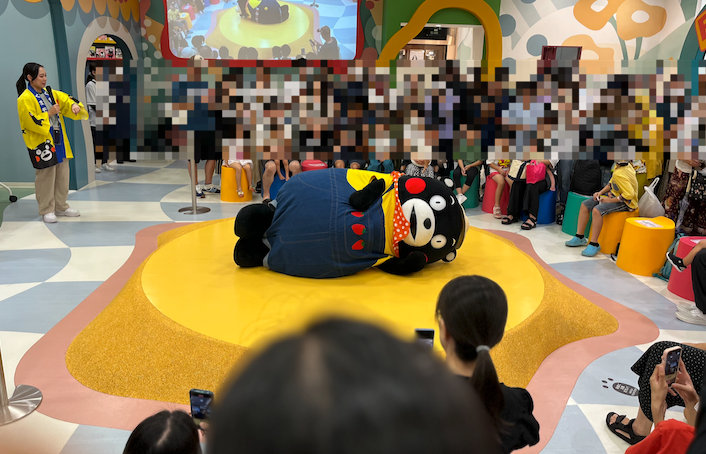
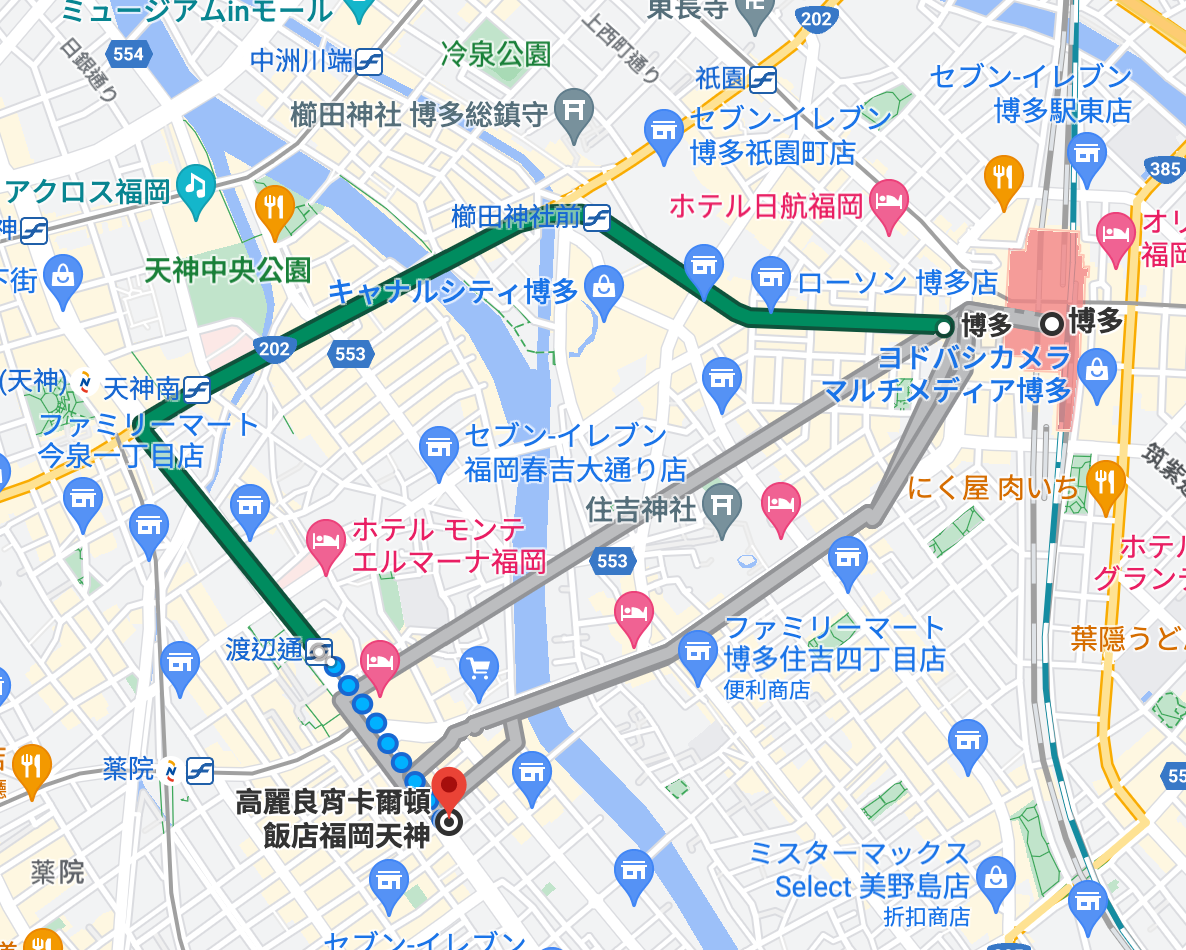


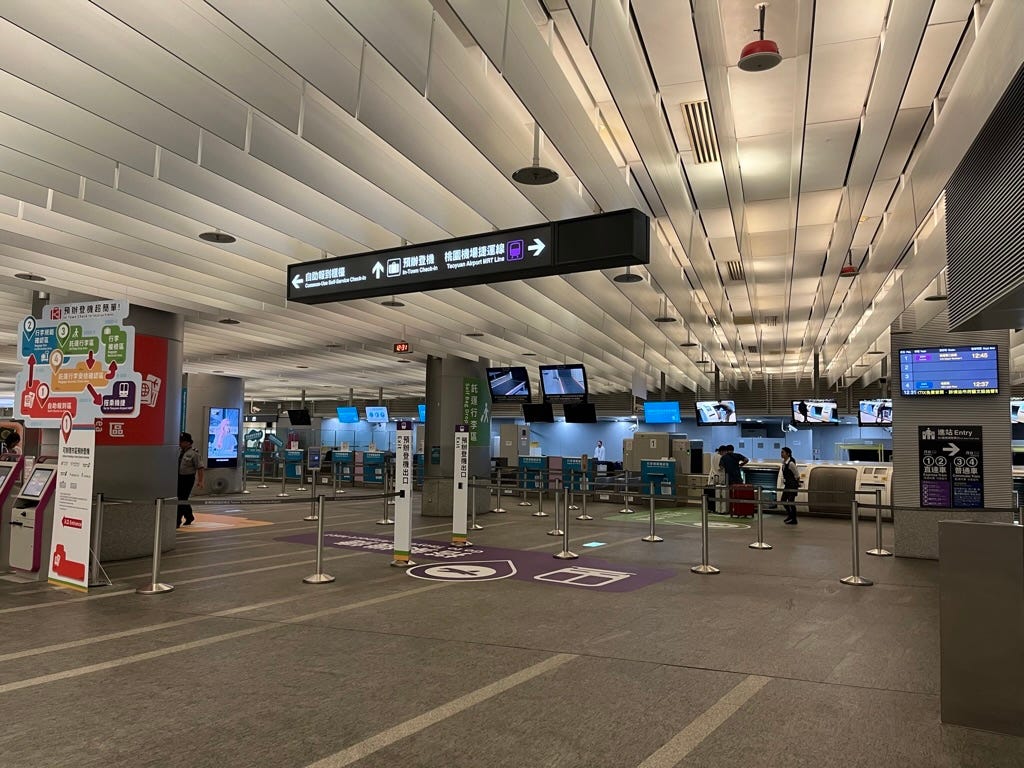
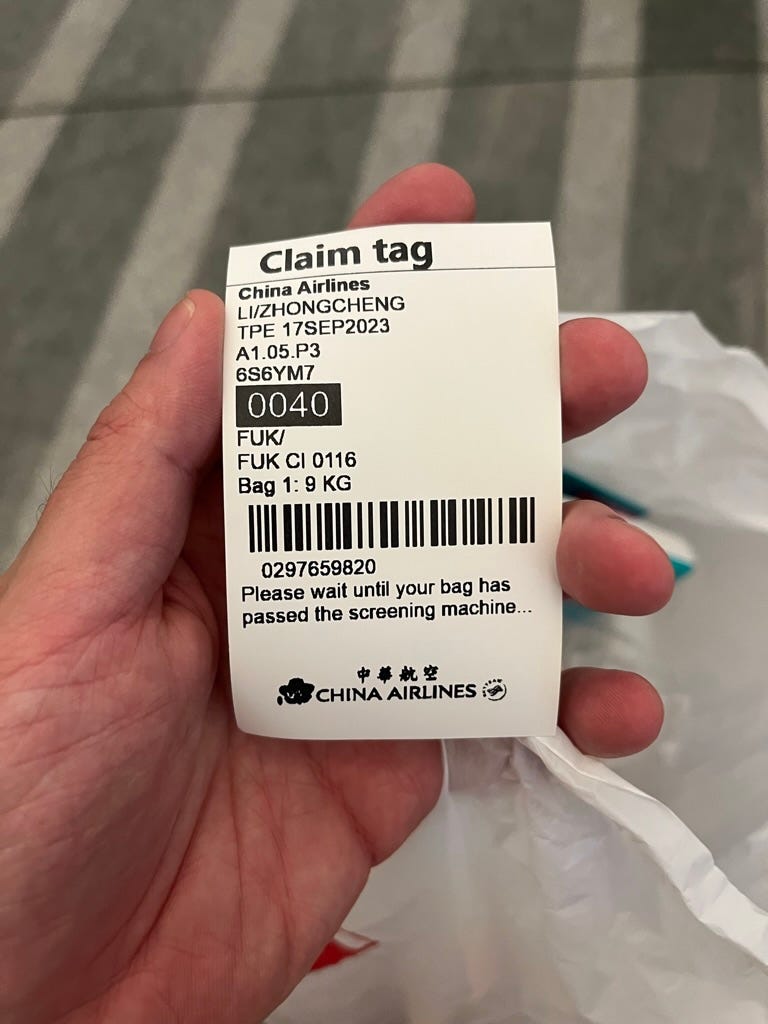

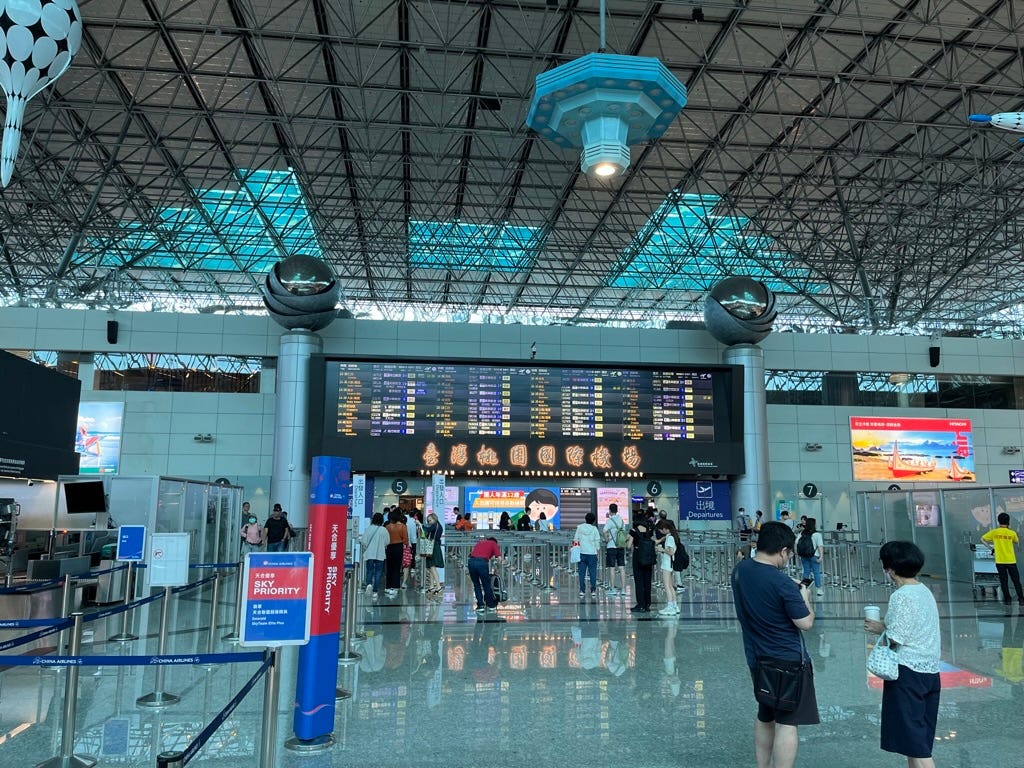


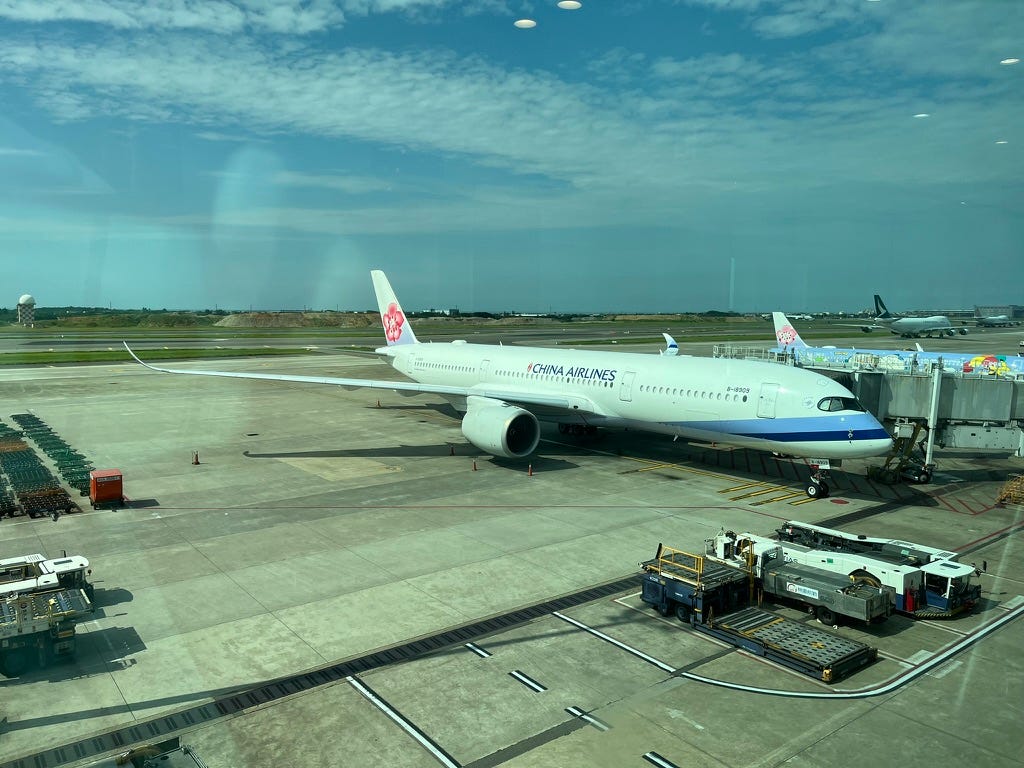

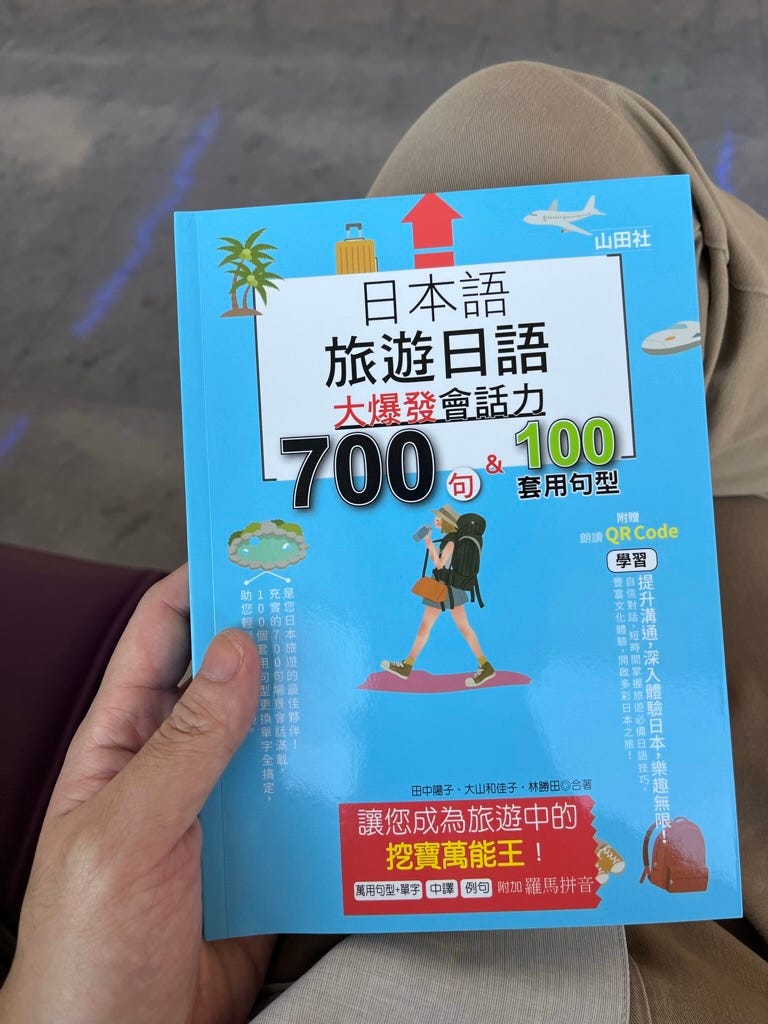
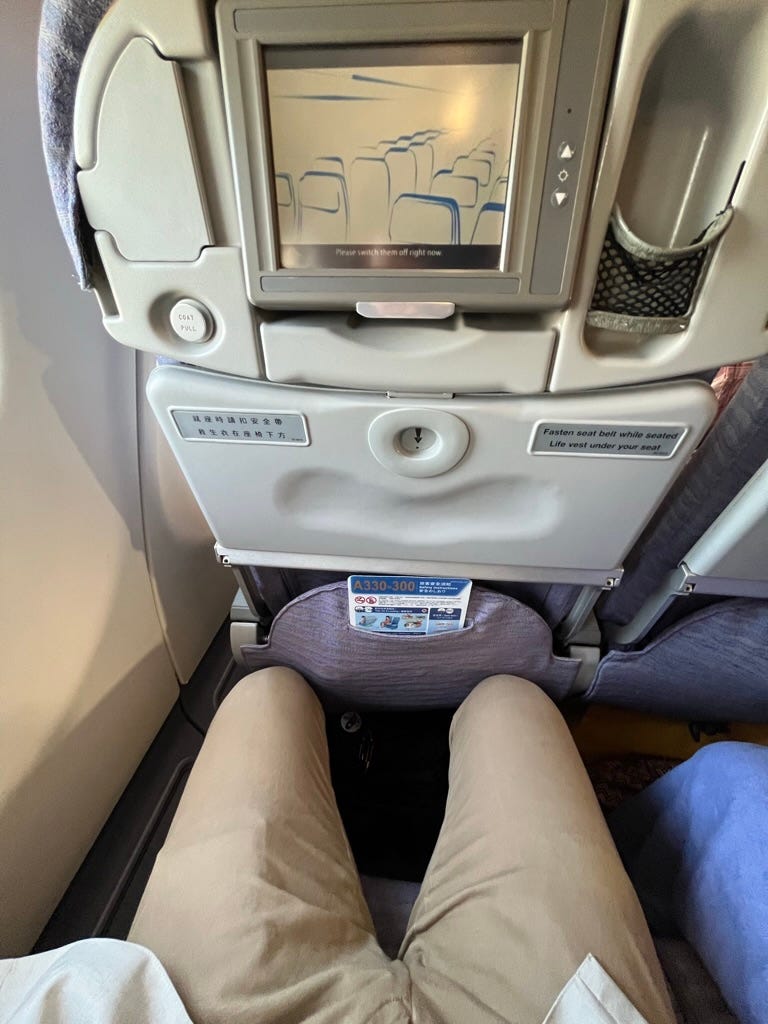
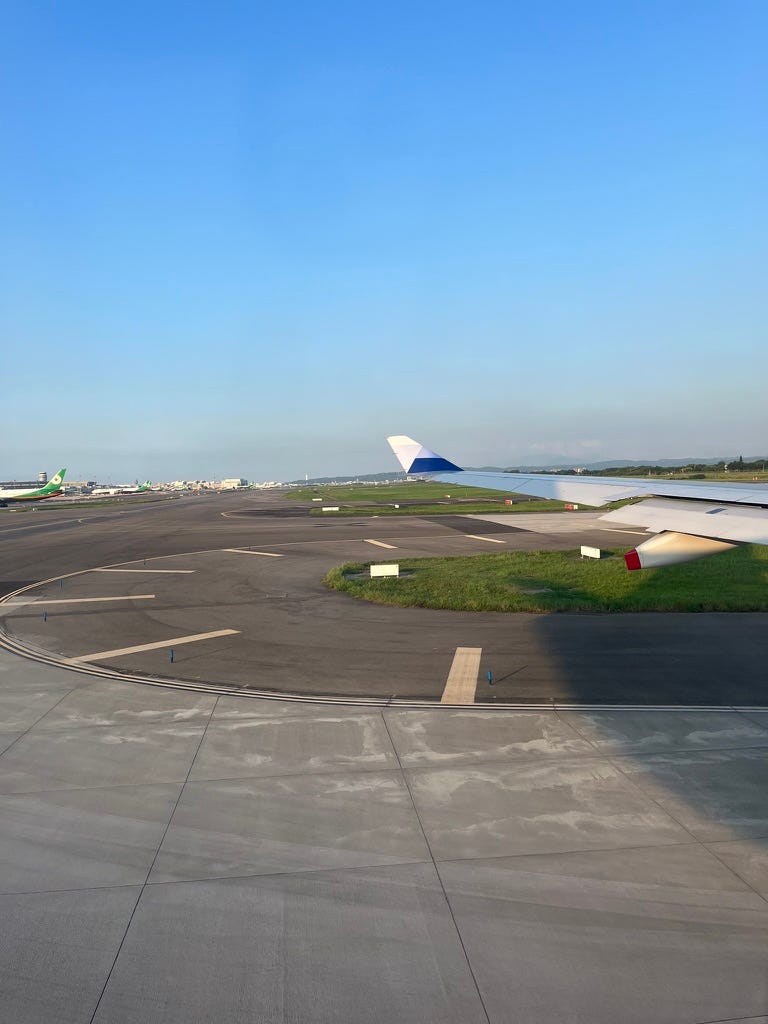
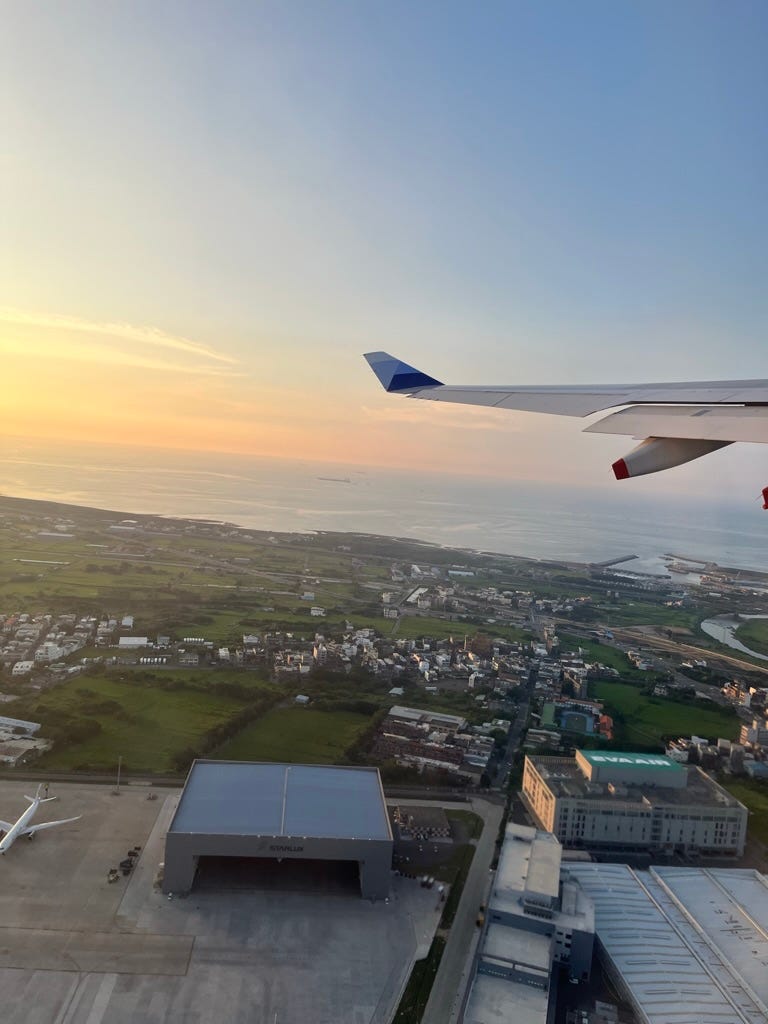
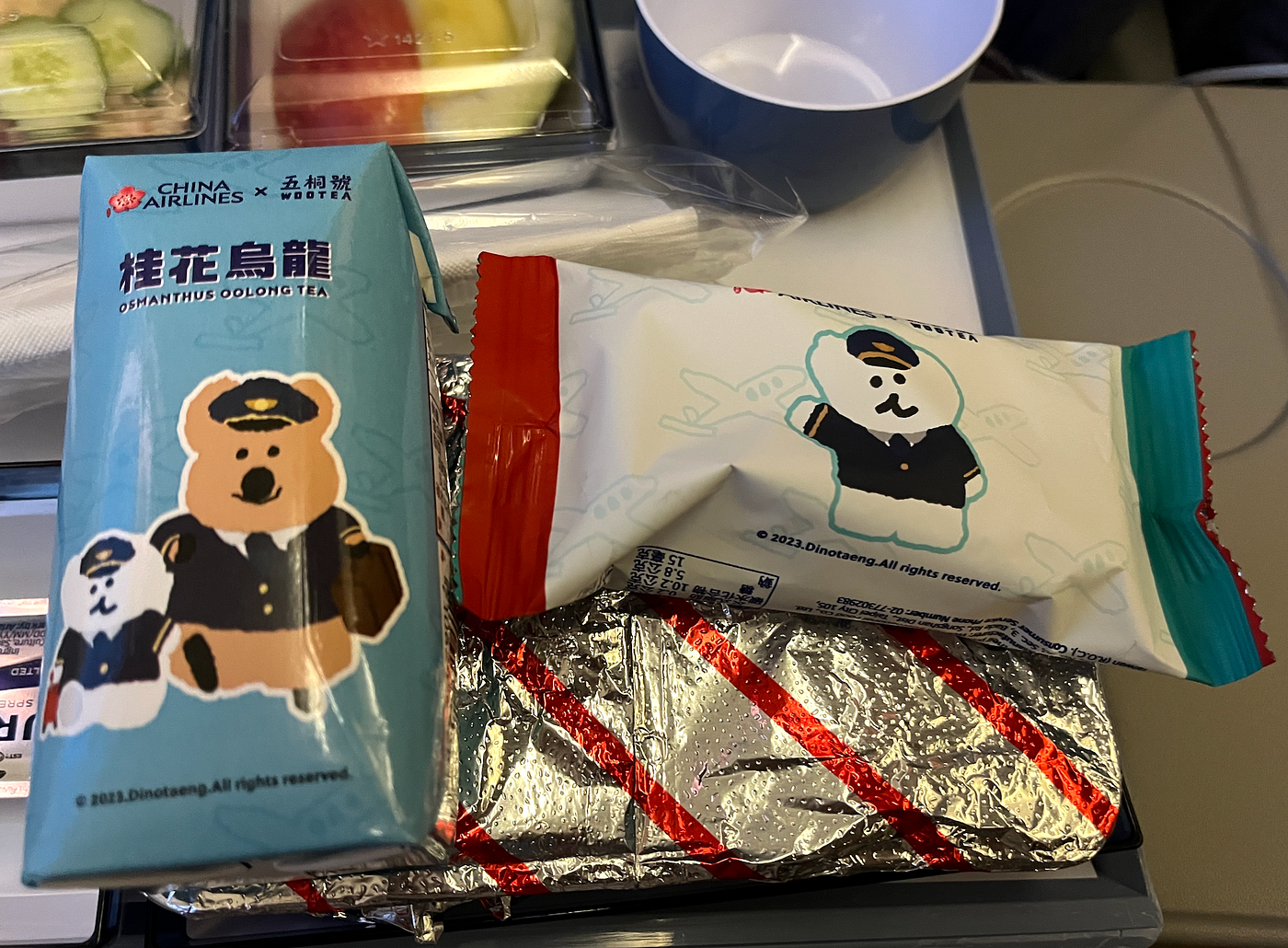


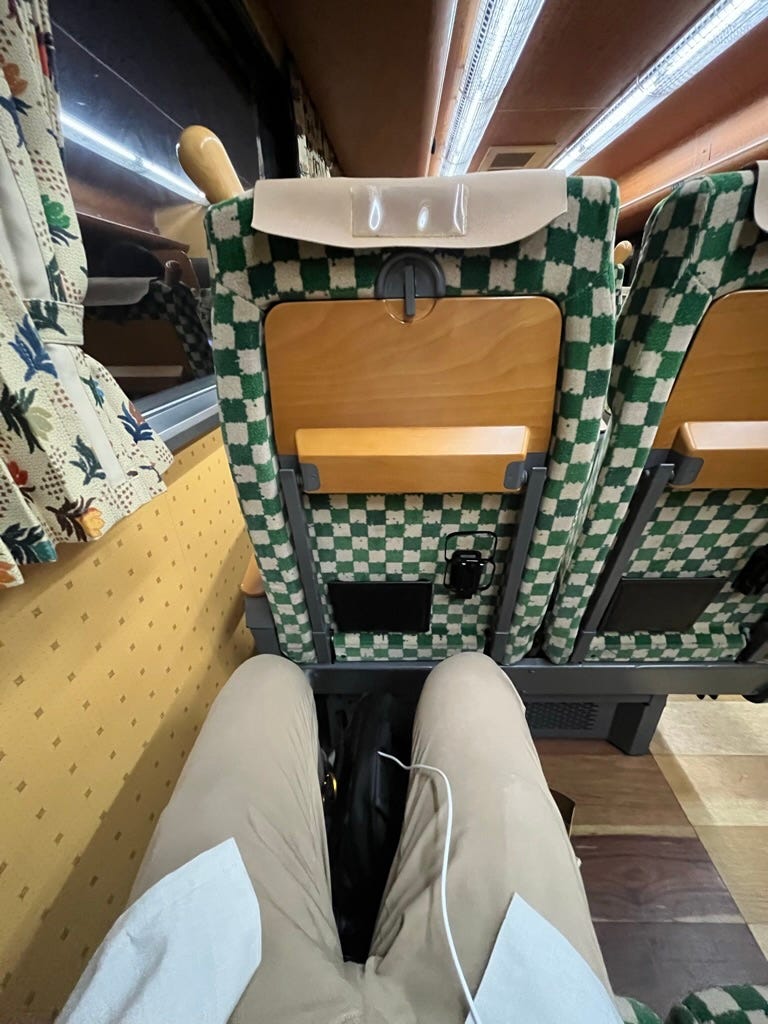
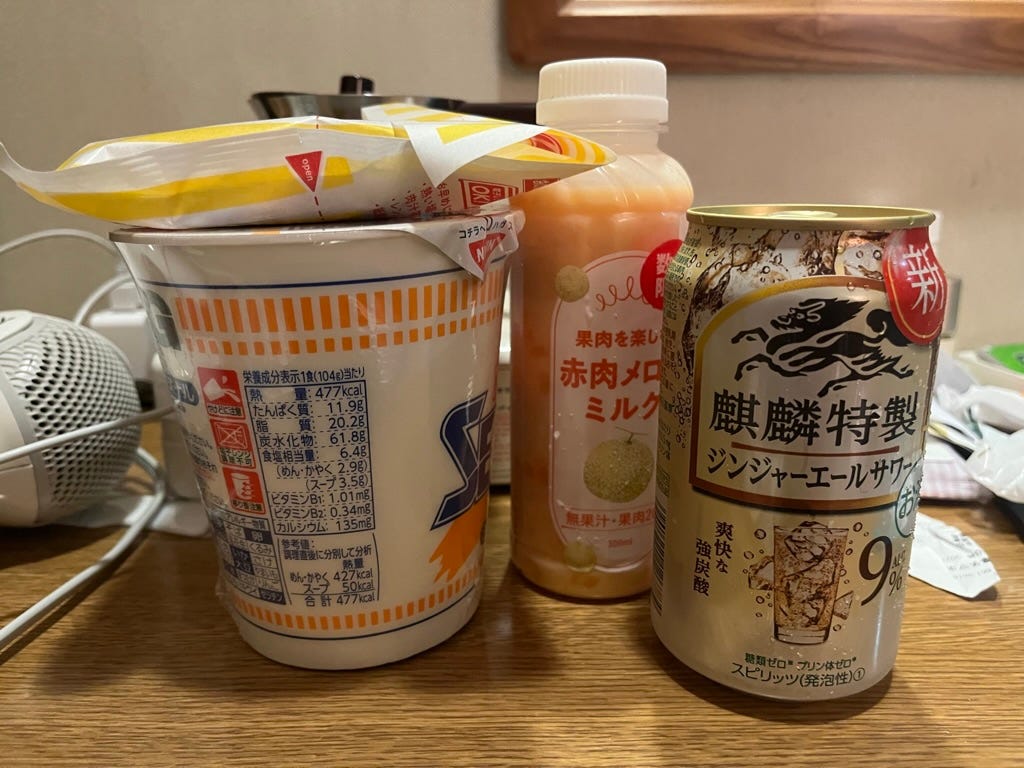
{:target="_blank"}](/assets/d78e0b15a08a/1*yw5Tfu5ogeG8m15tt0KEyA.png)


